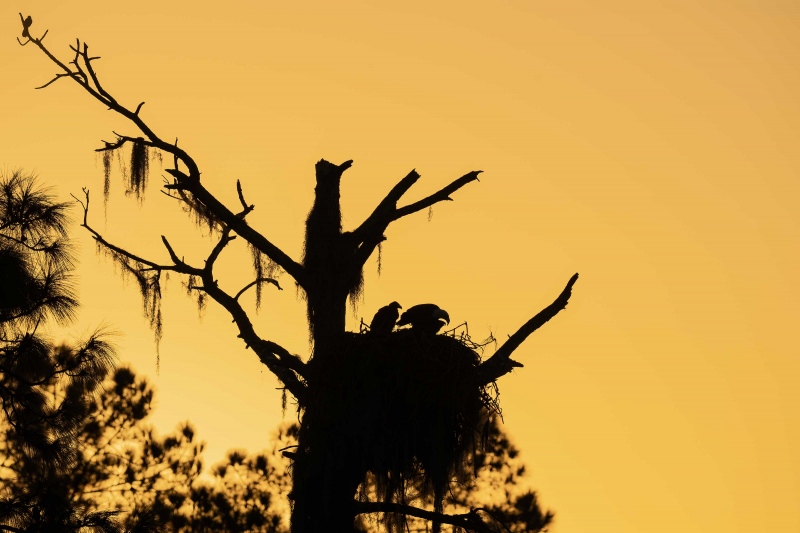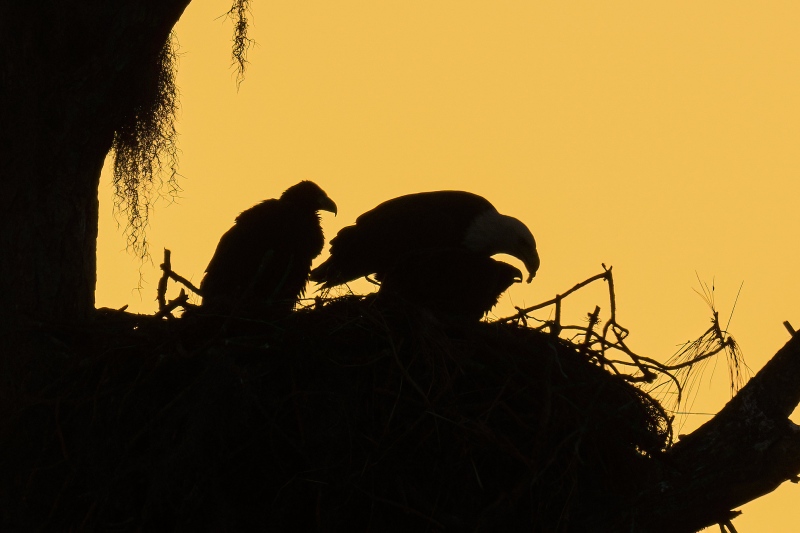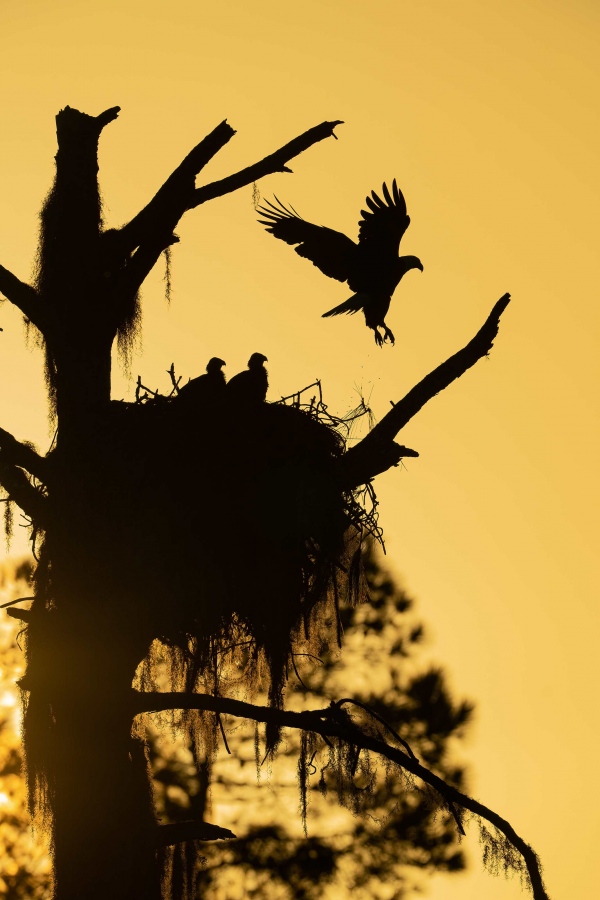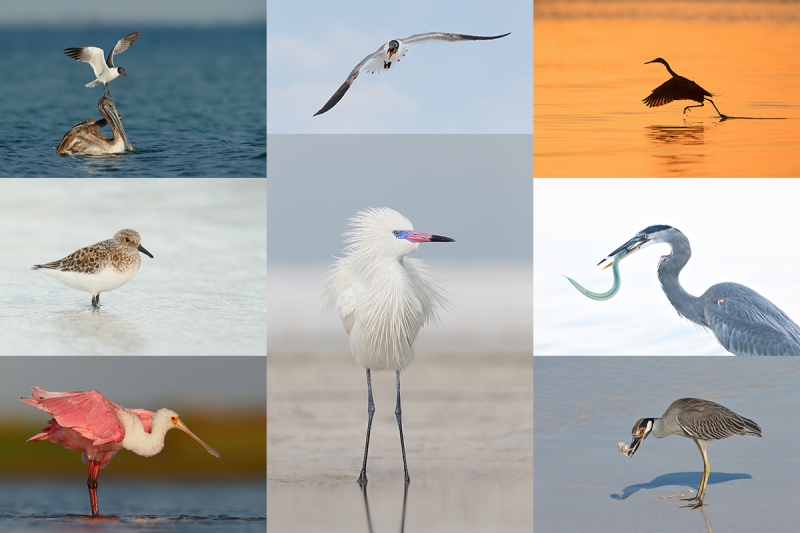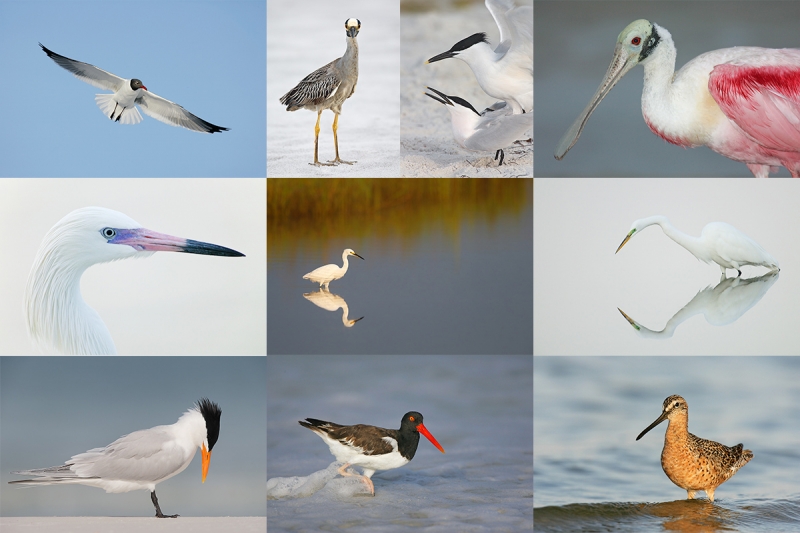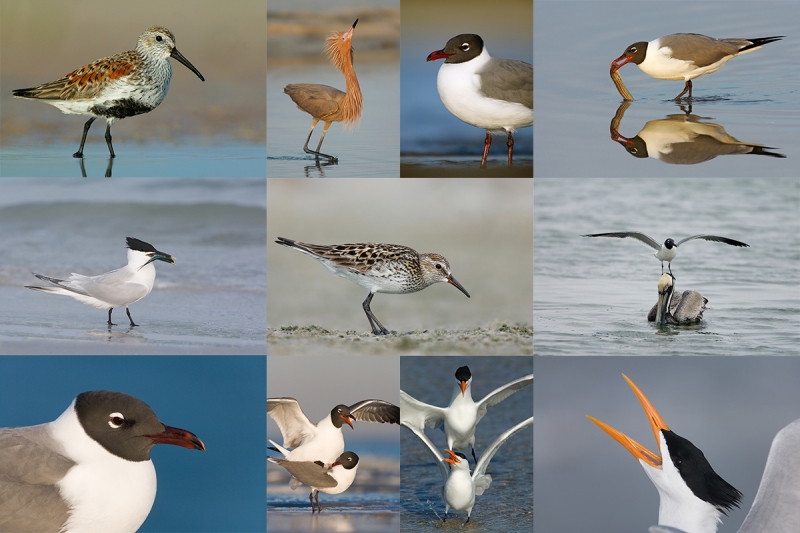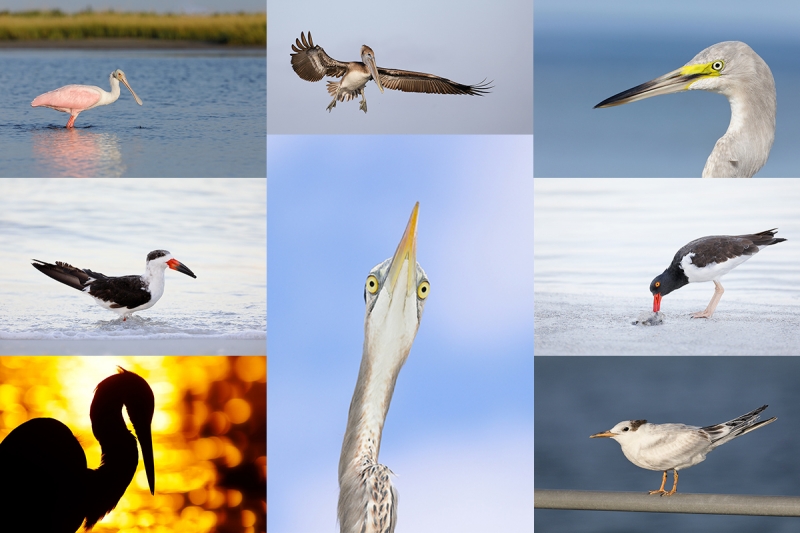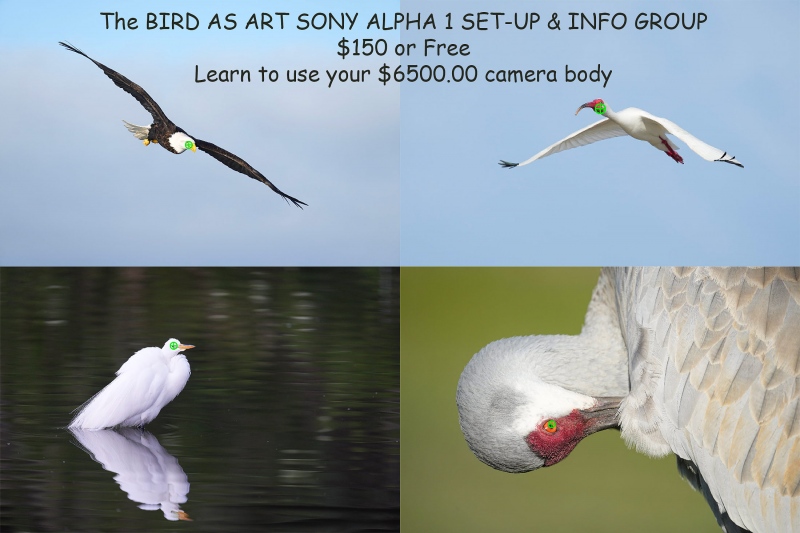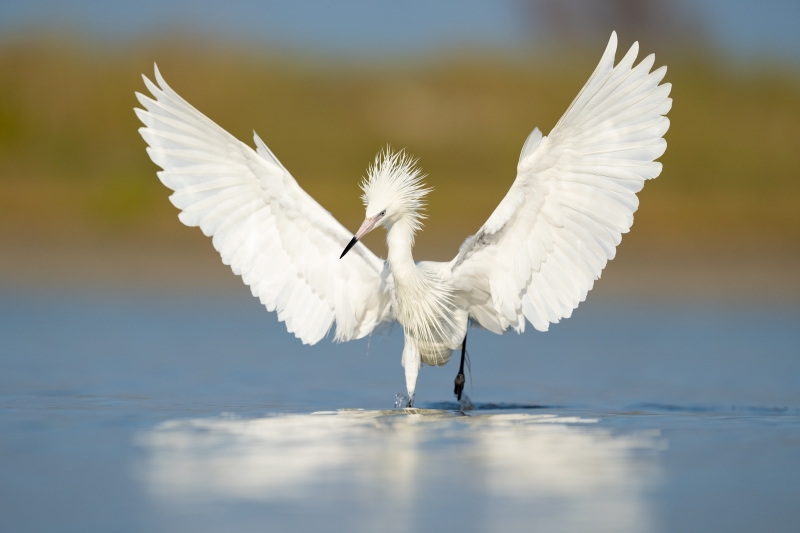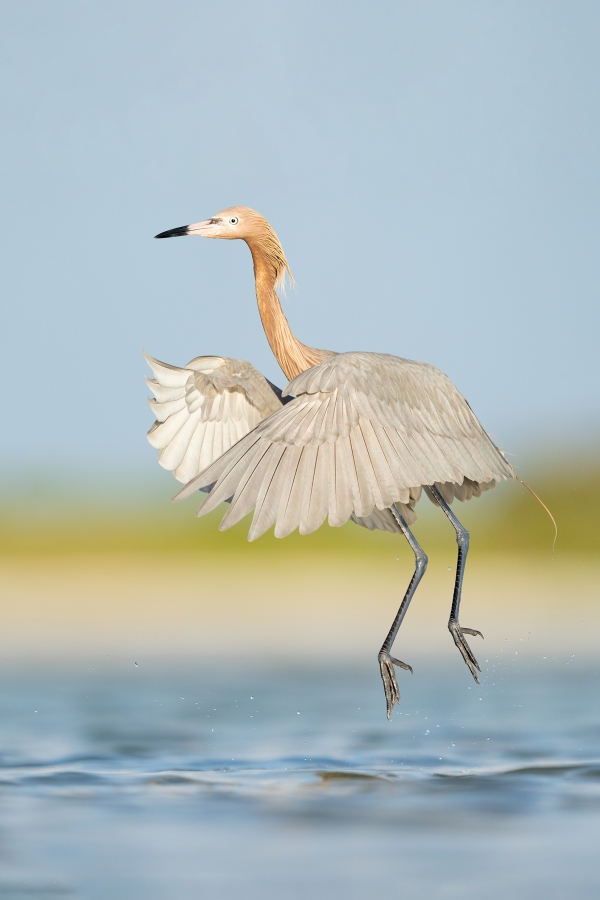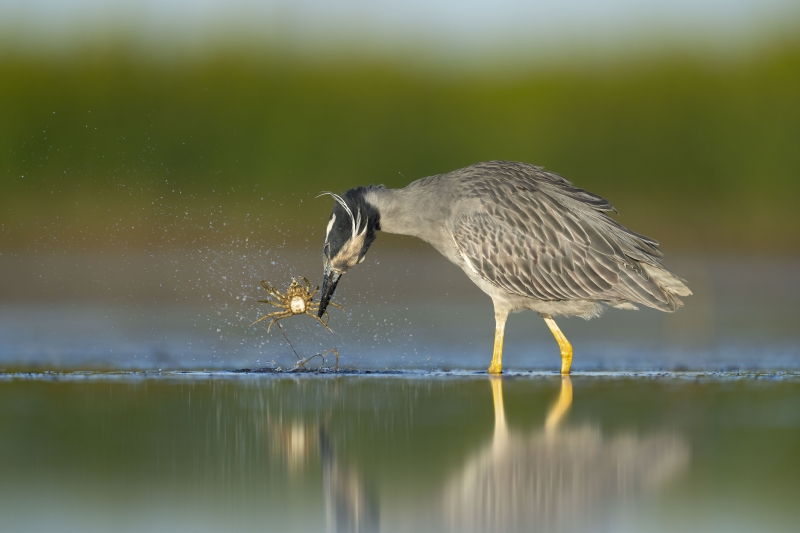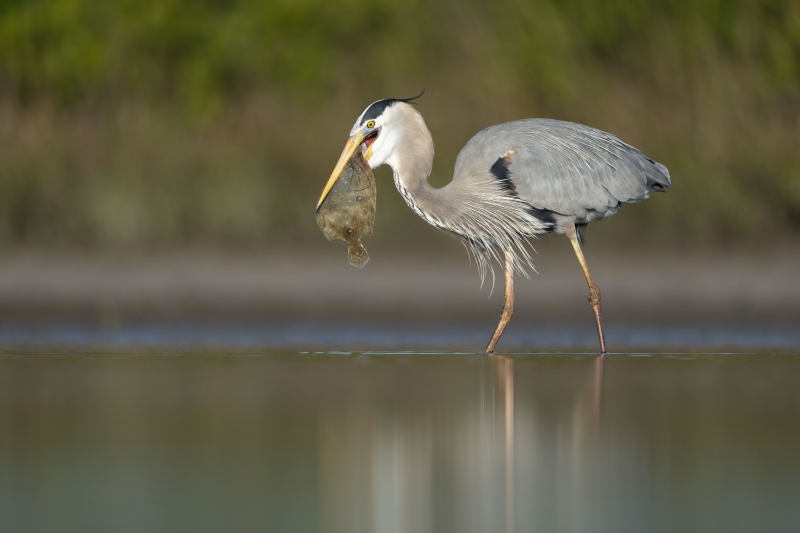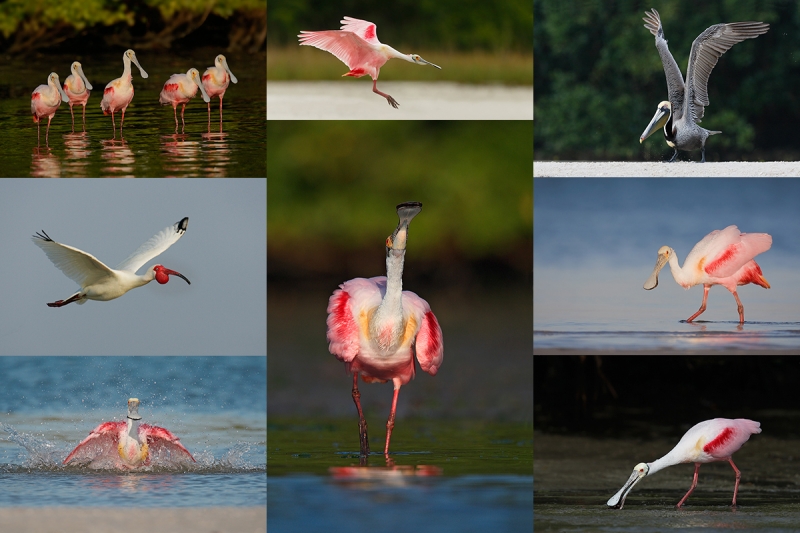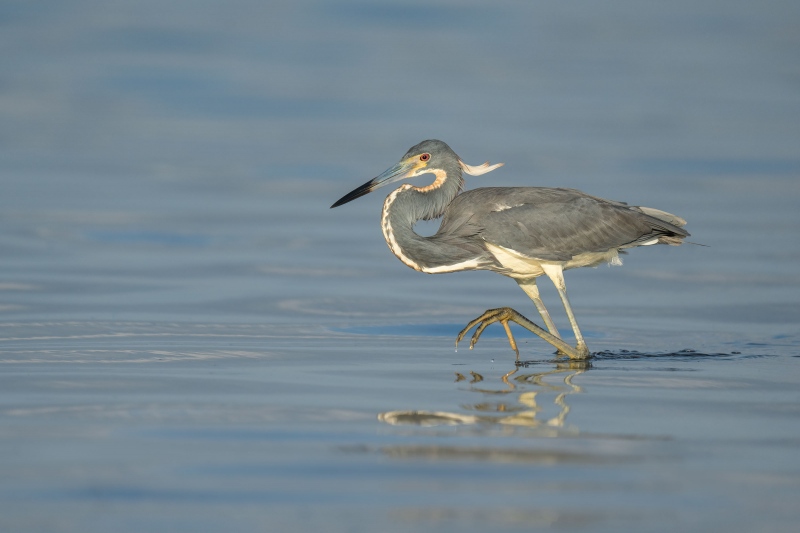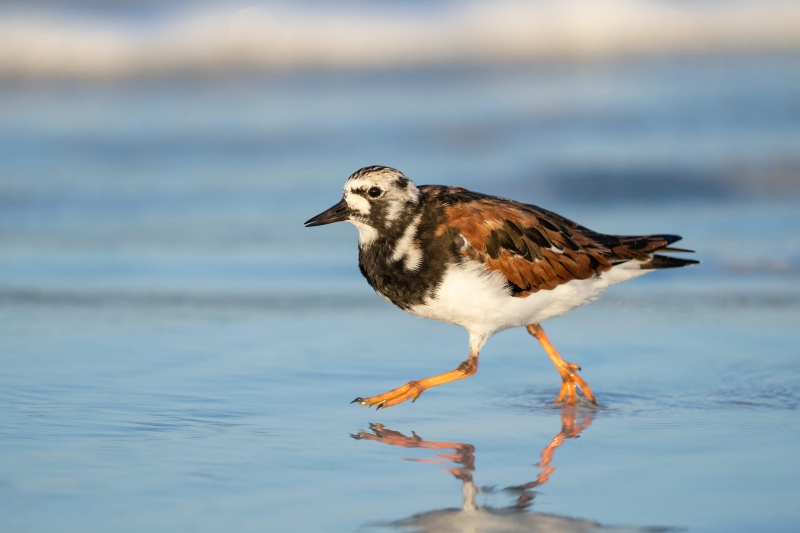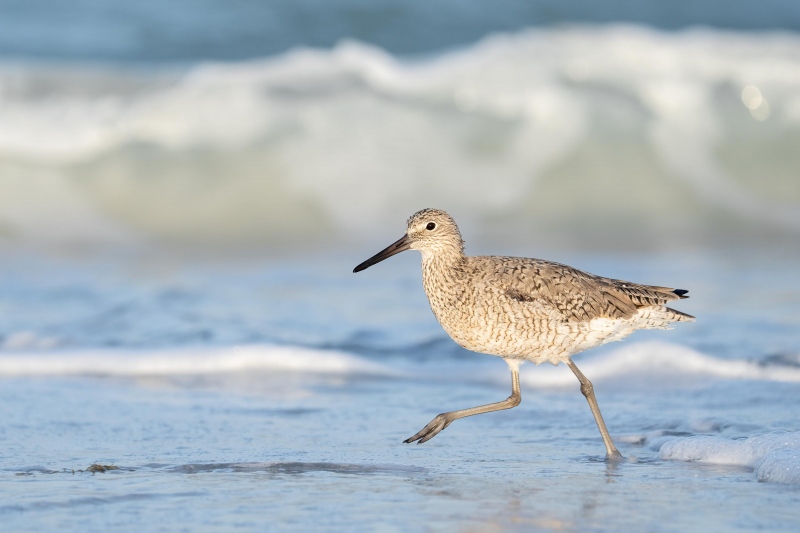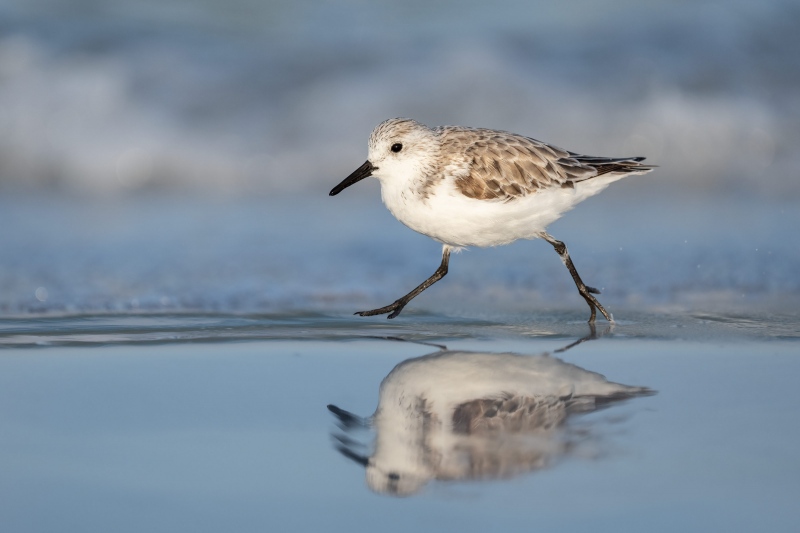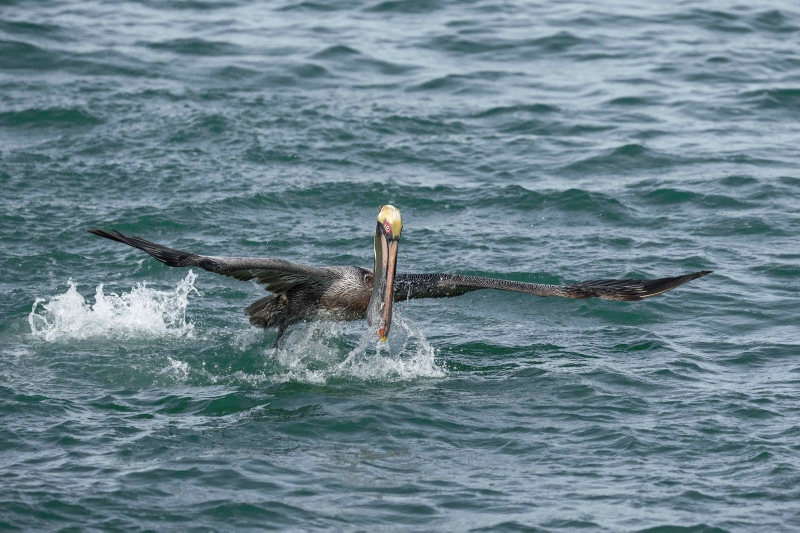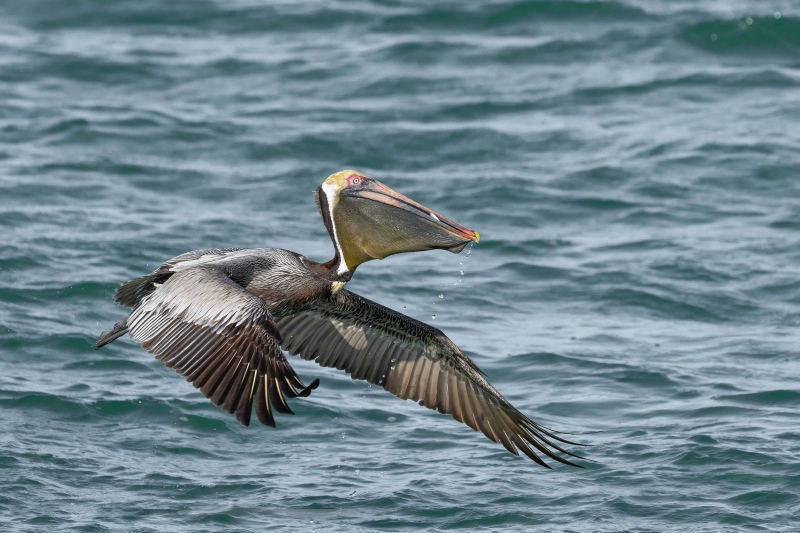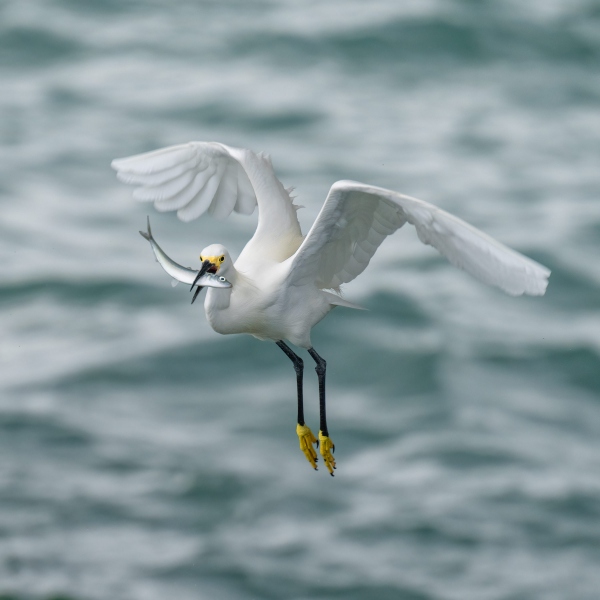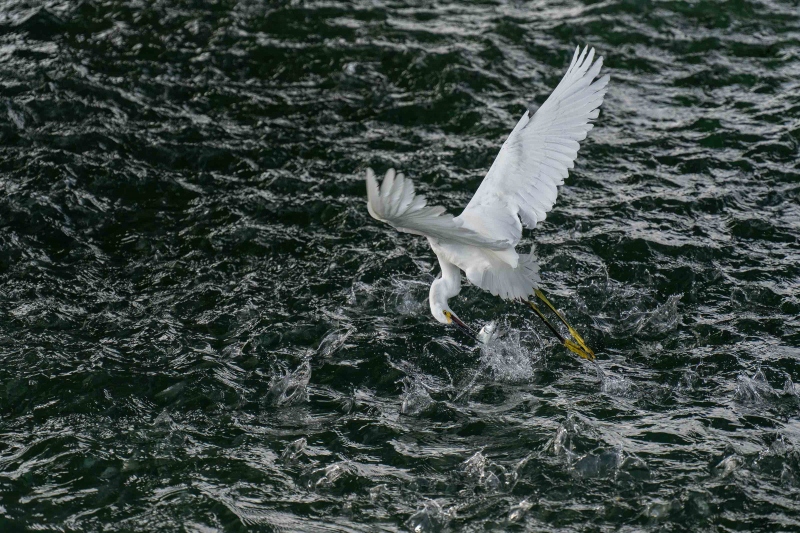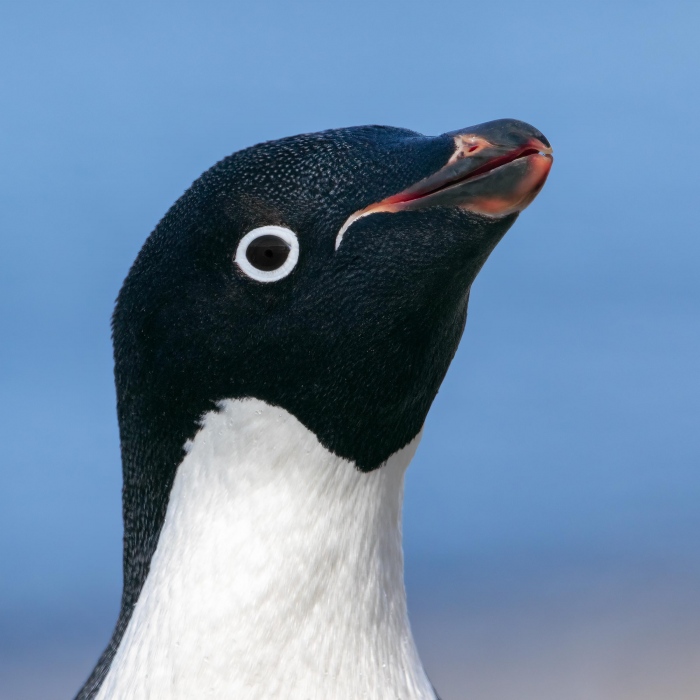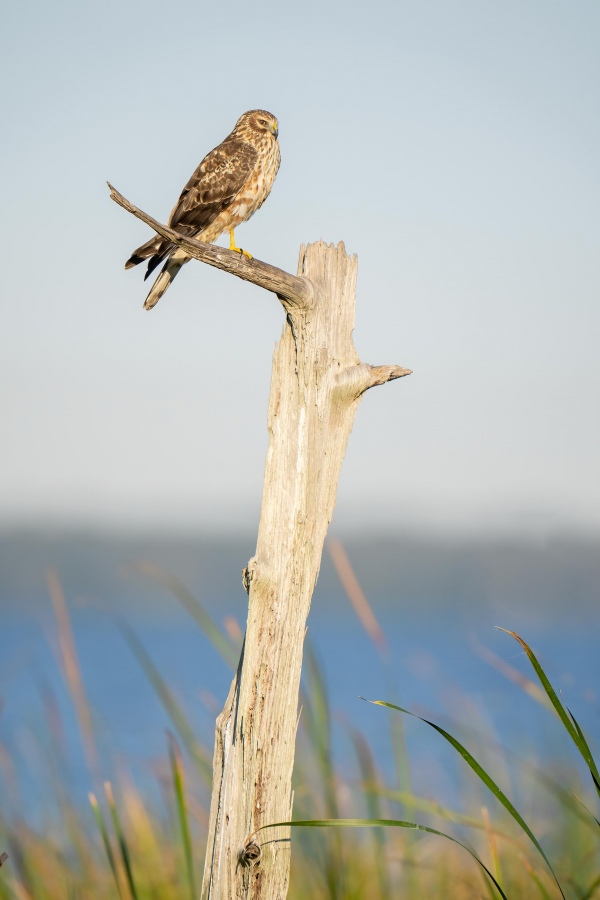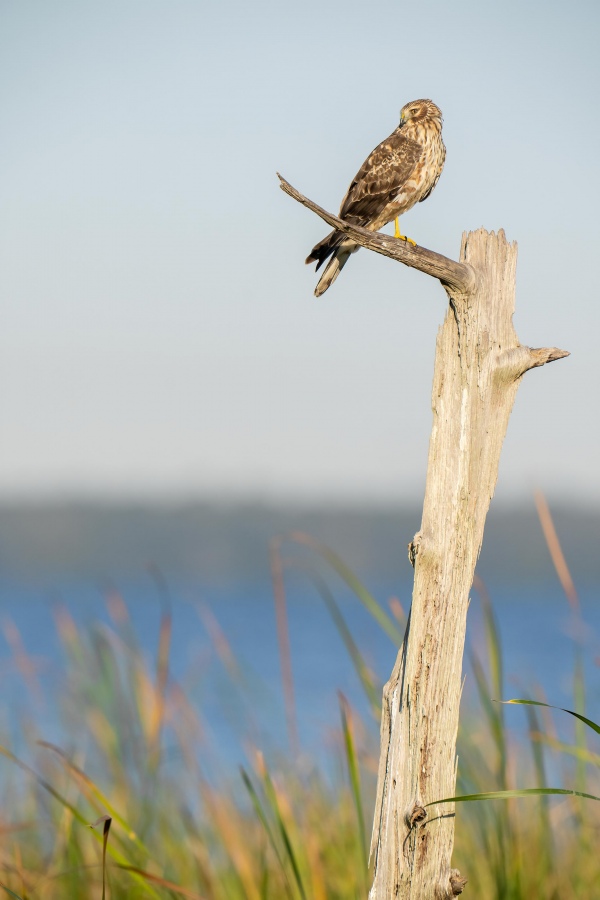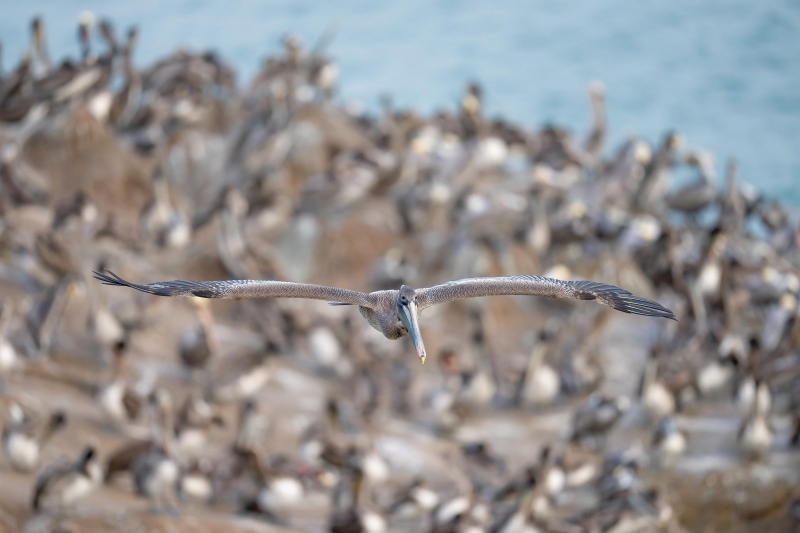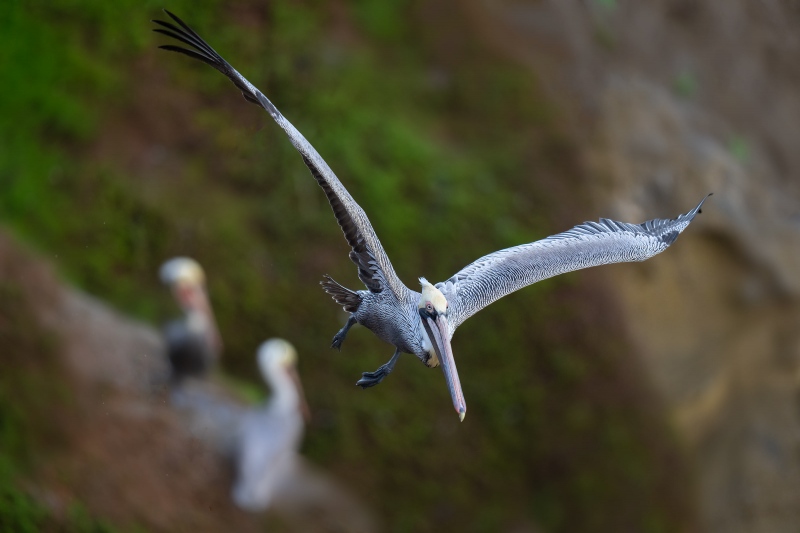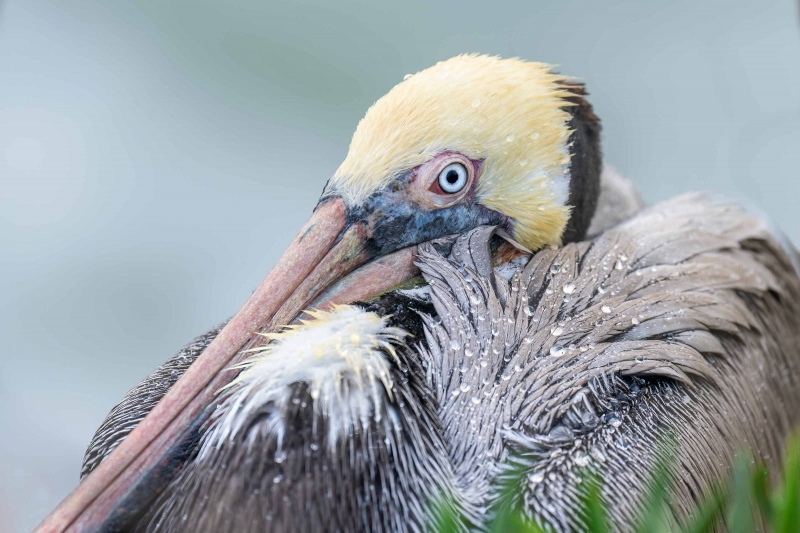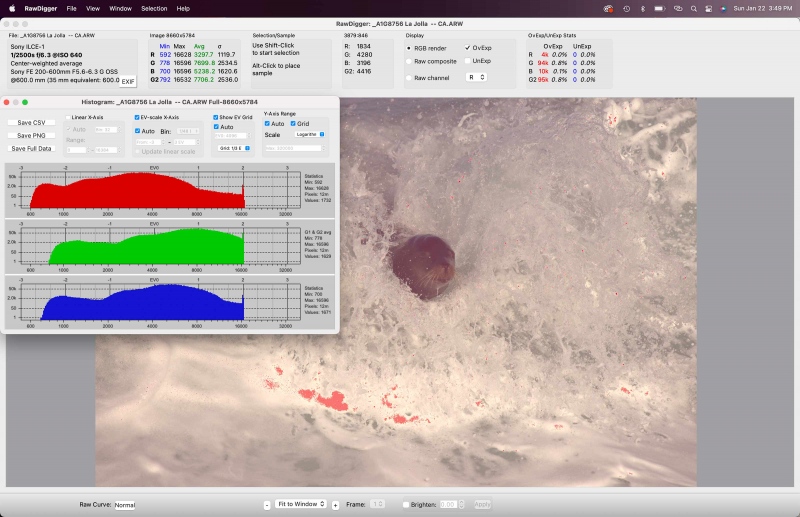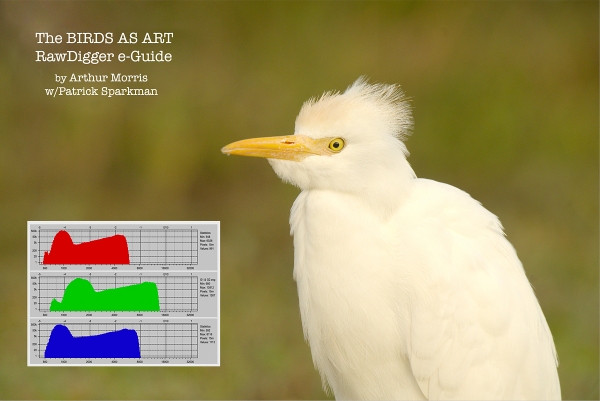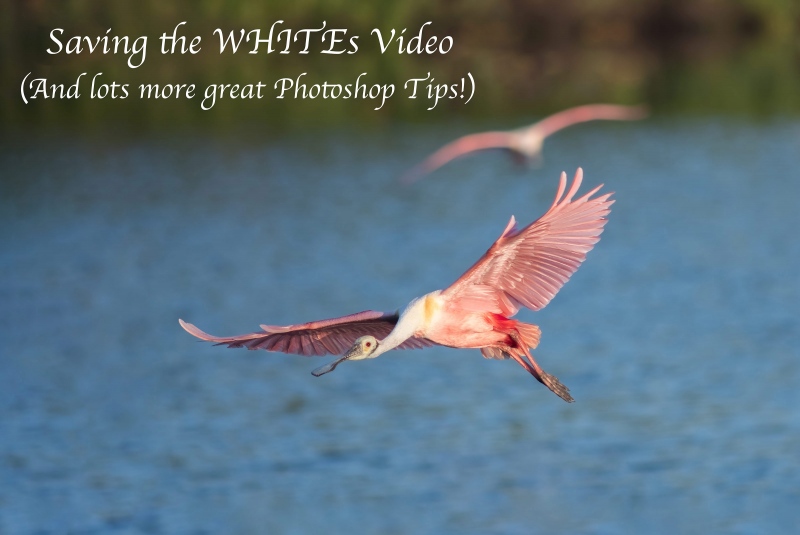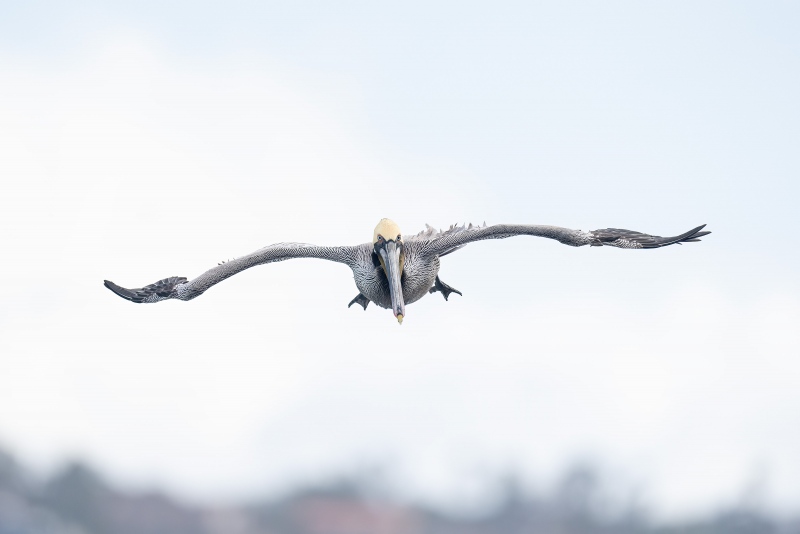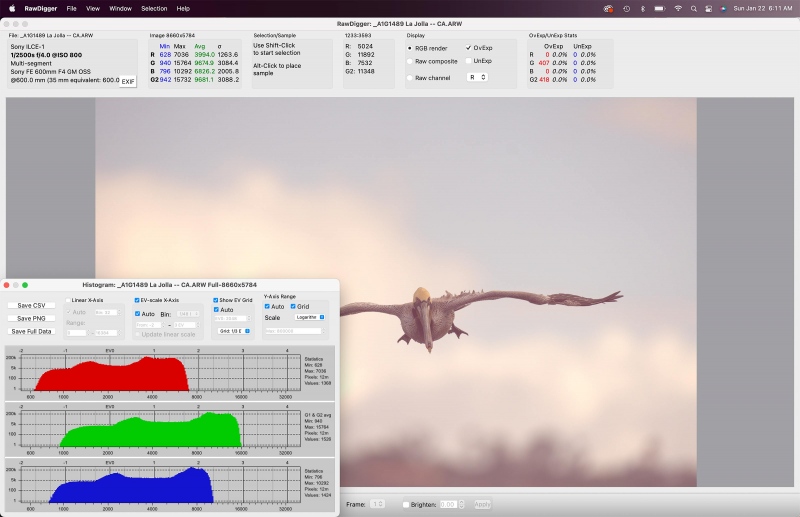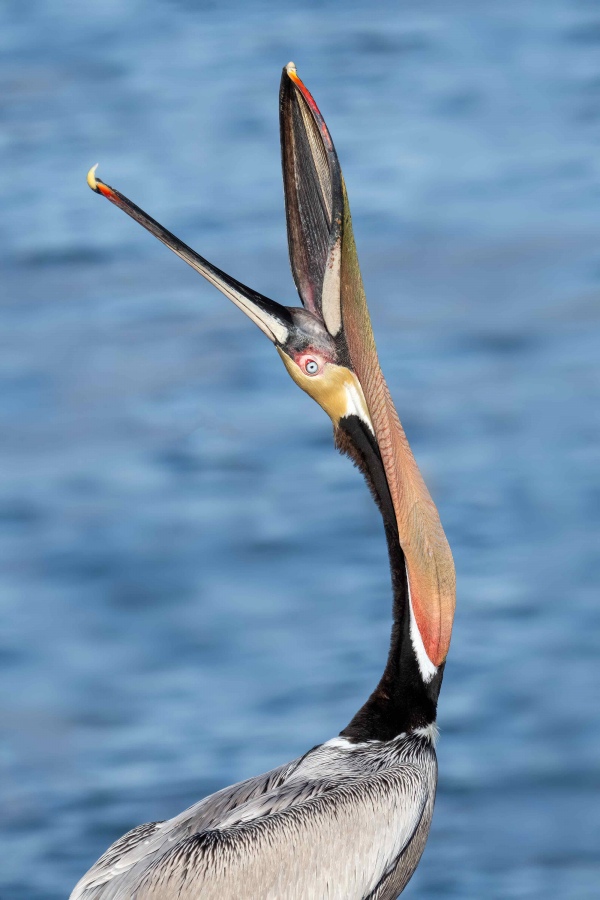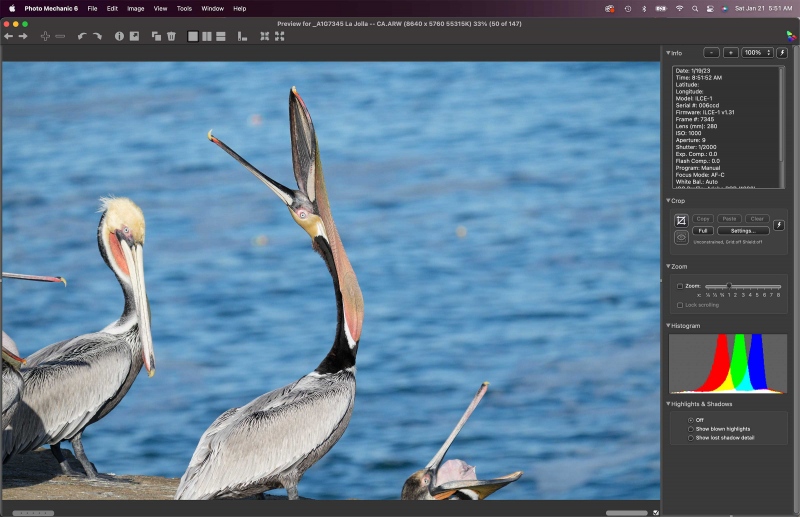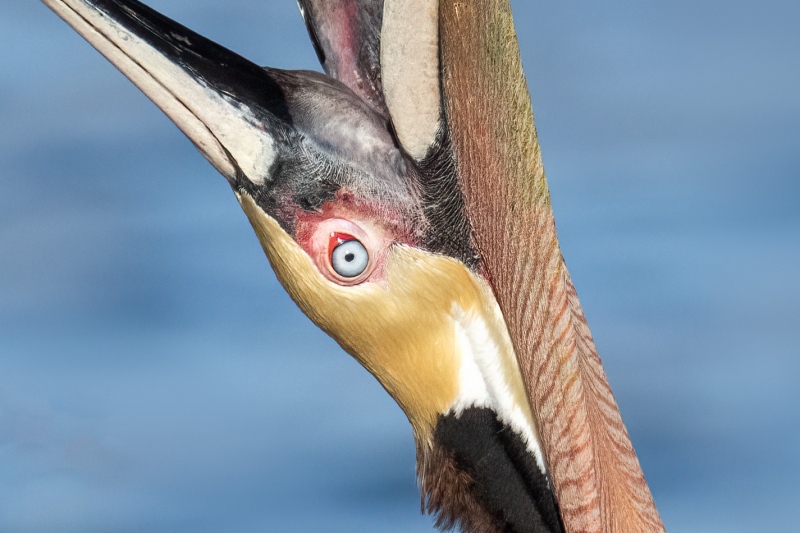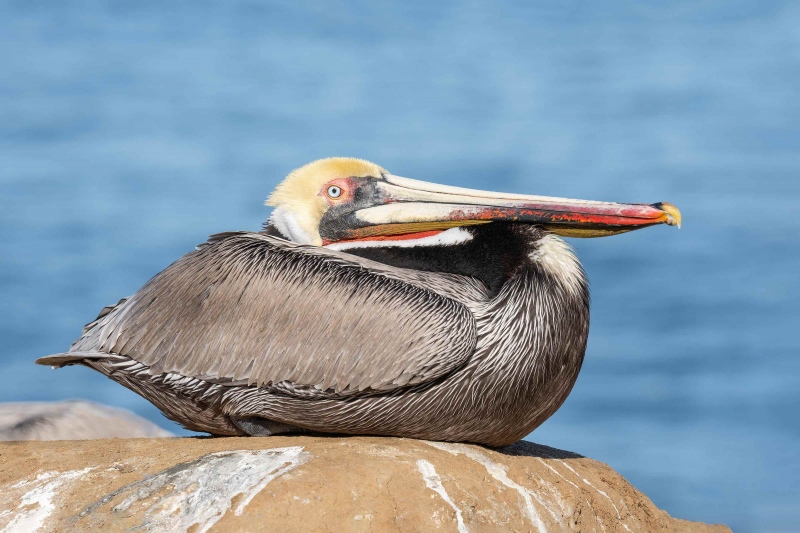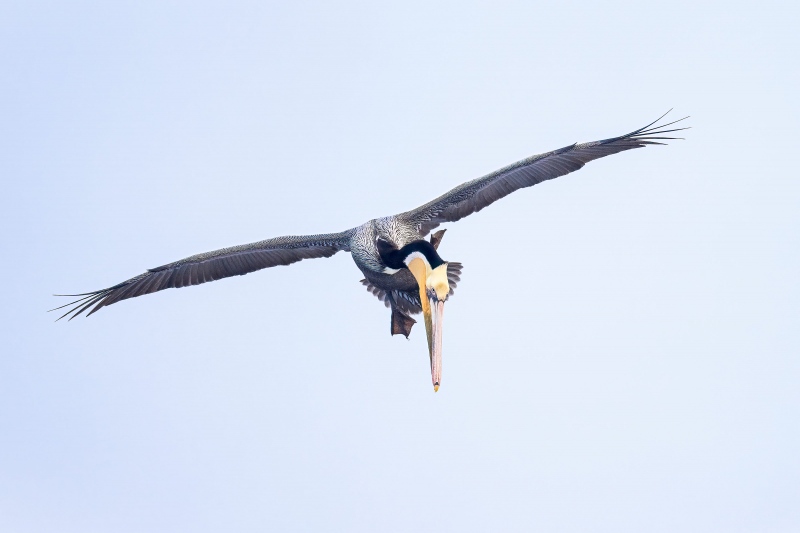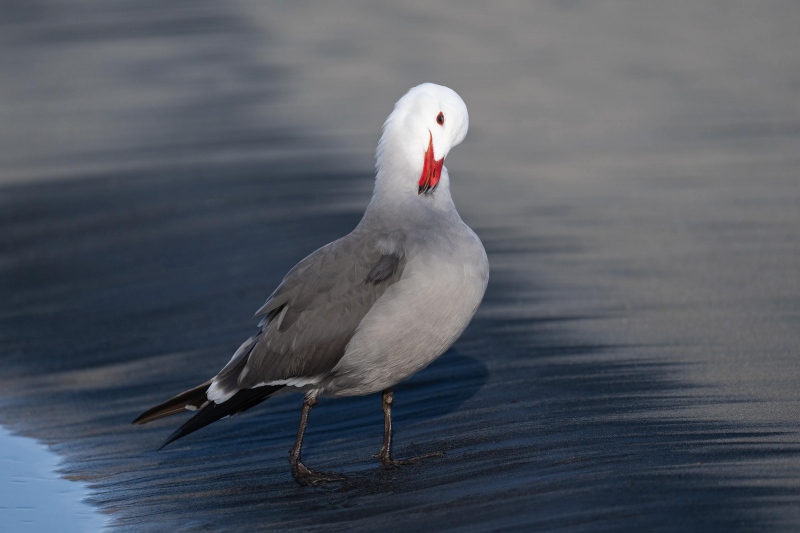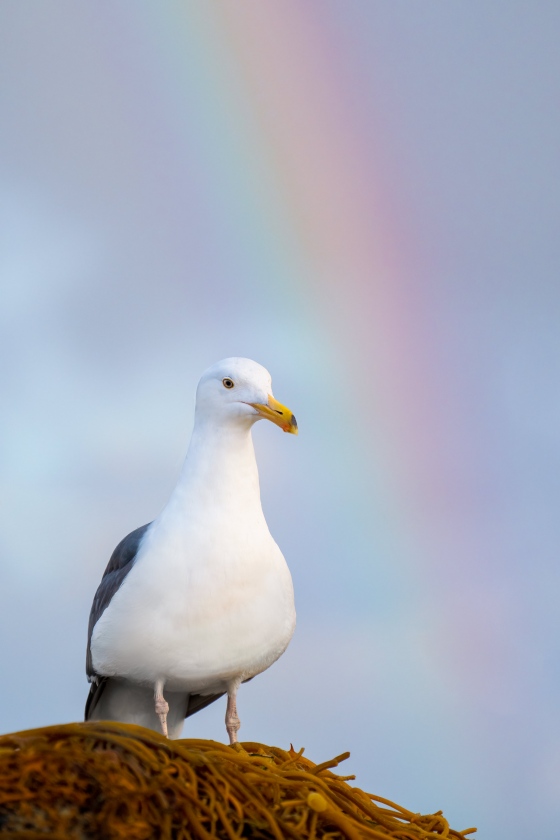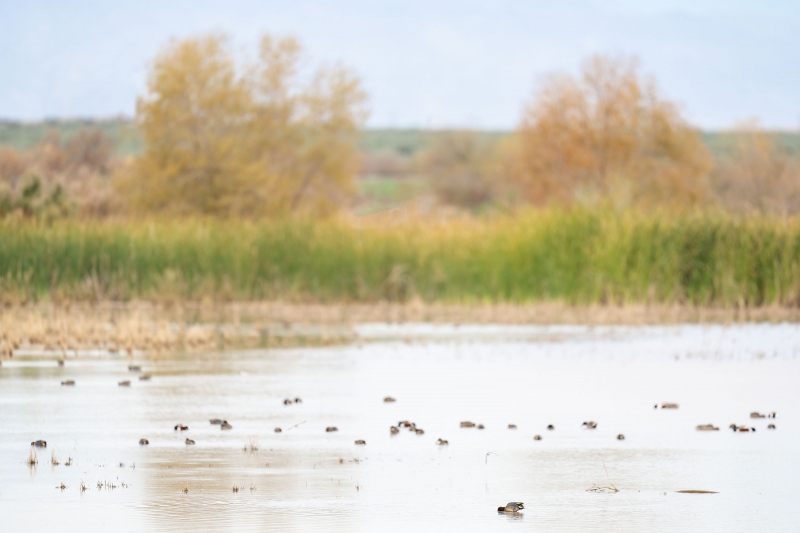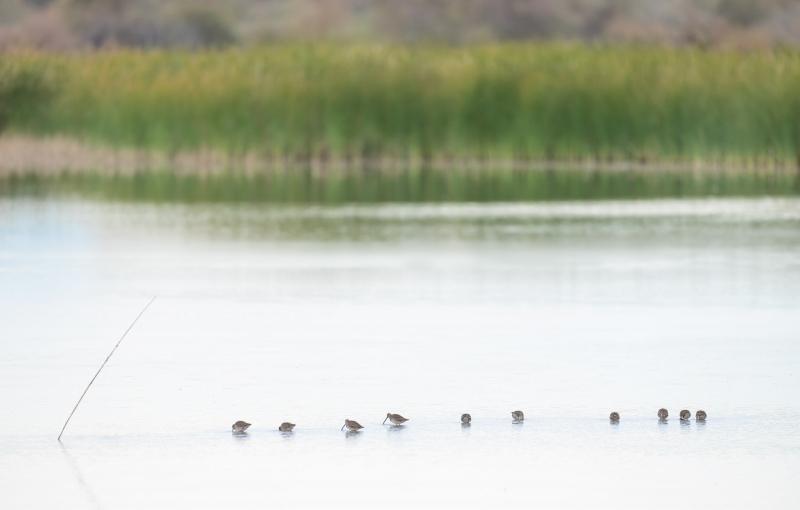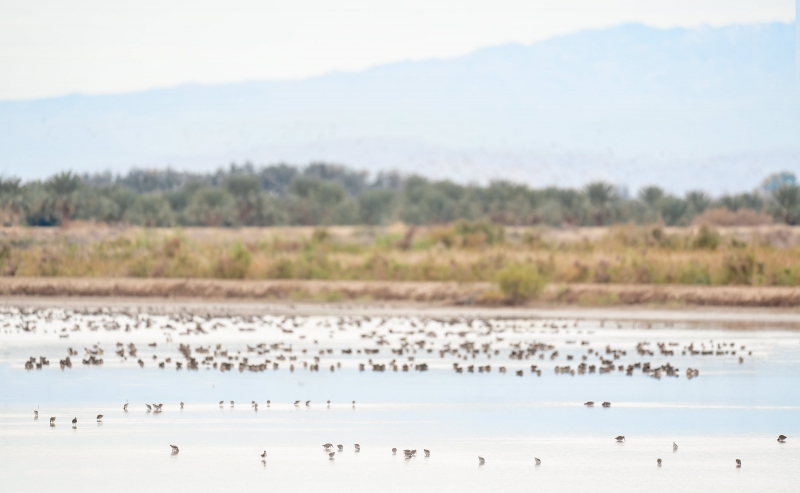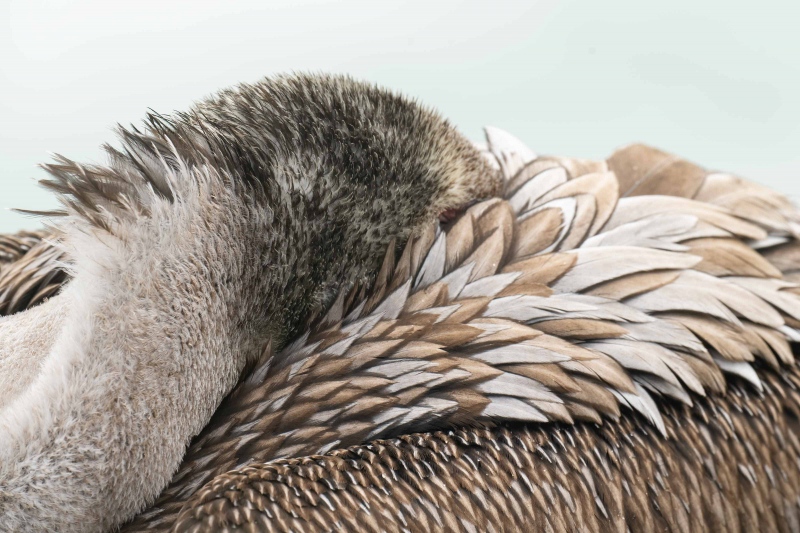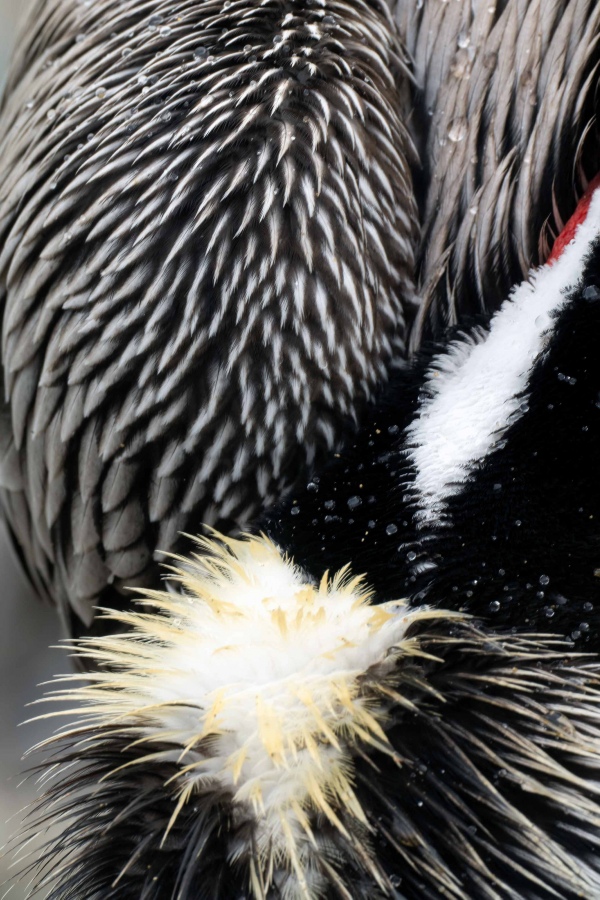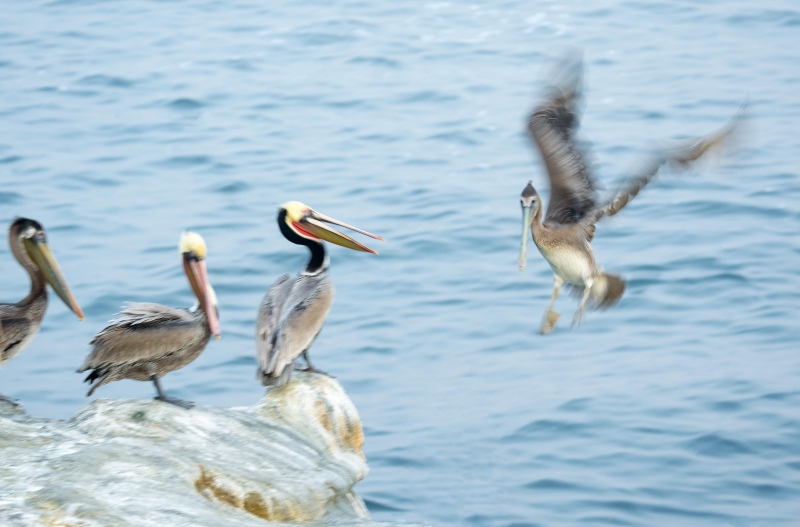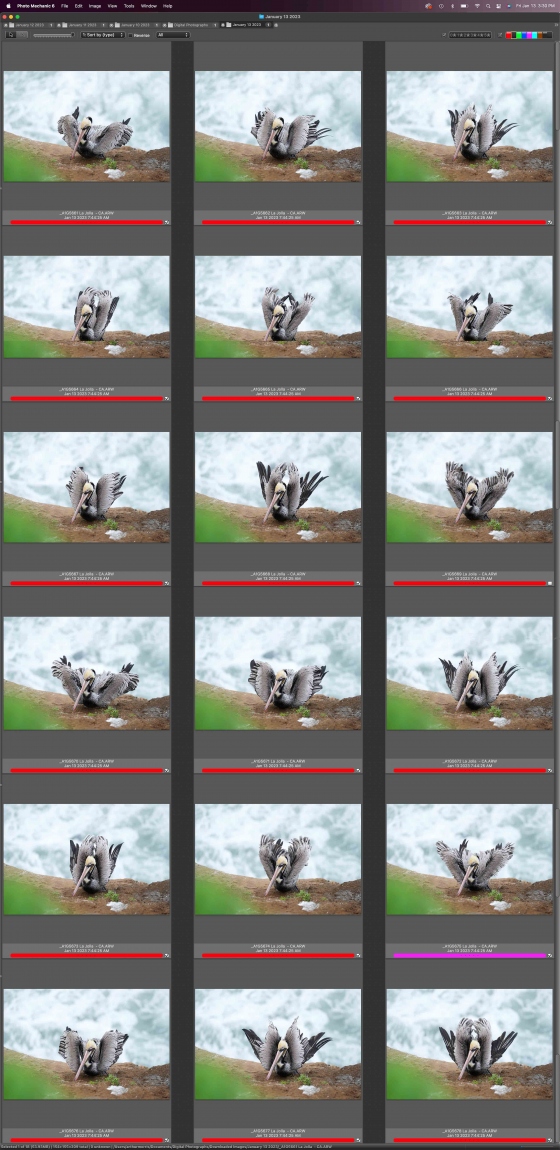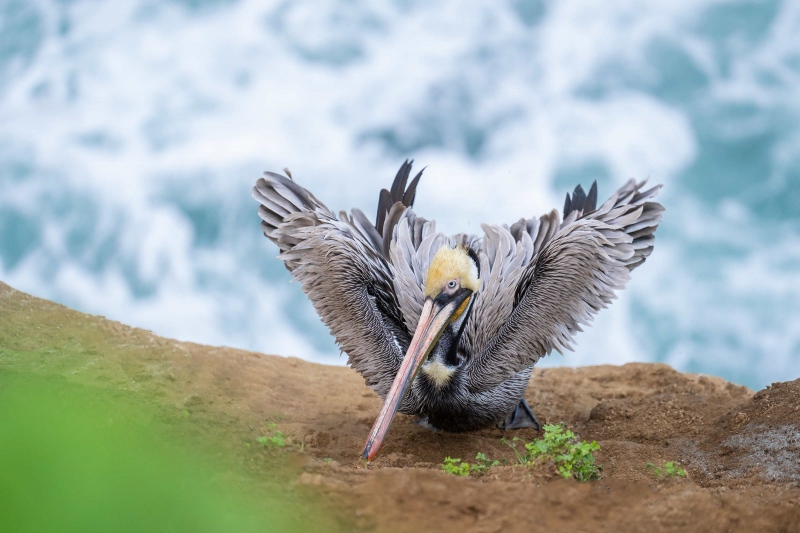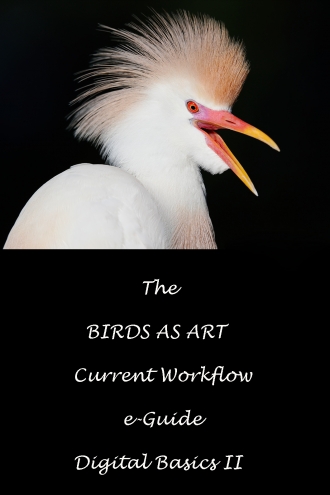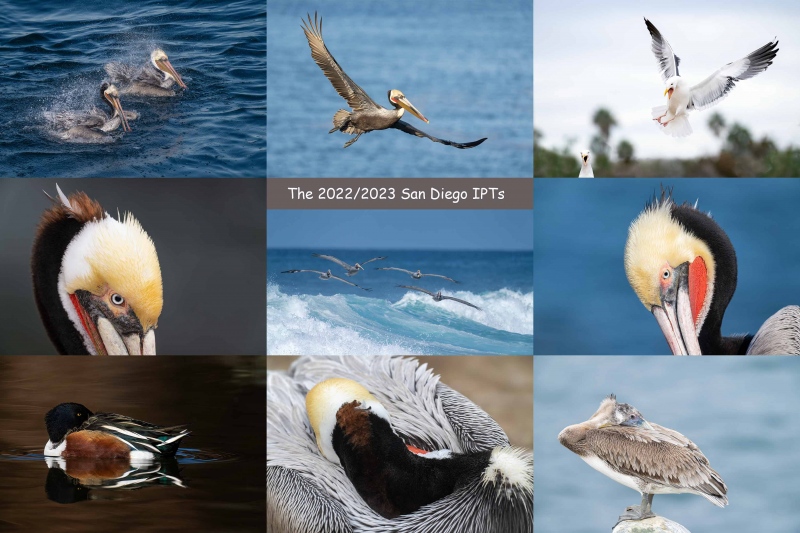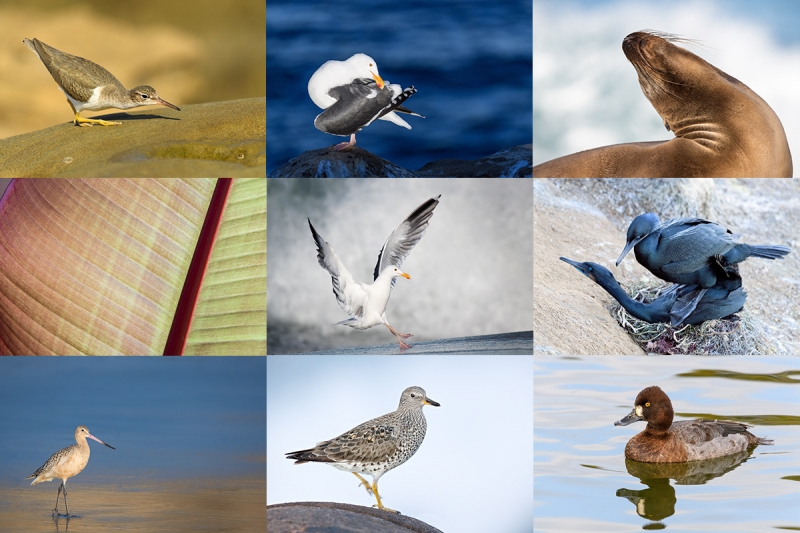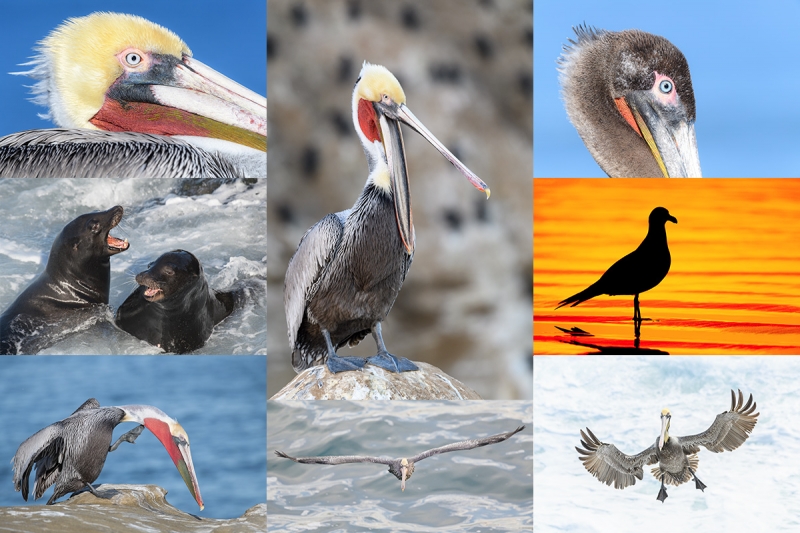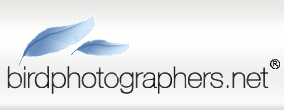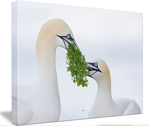February 2nd, 2023 The Homer IPTs
No Reasonable Offer Refused
I hate sailing with a less than full boat. If you would like to make a low-ball offer on one or more of the Bald Eagle IPTs below, please click here.
IPT #1: MON 20 FEB 2023 through the full day on FRI 24 FEB 2023. Five full days/20 hours on the boat: $5500.00. Limit 5 photographers/Openings: 1.
IPT #2: SAT 25 FEB 2023 through the full day on THURS 2 MAR 2023. Six full days/24 hours on the boat: $6600.00. Limit 5 photographers/Openings: 3.
IPT #3: FRI 3 MAR 2023 through the full day on TUES 7 MAR 2023. Five full days/20 hours on the boat: $5500.00. Limit 5 photographers. Openings: 1.
Rooms at Lands End Resort are available for all of the dates above.
What’s Up?
It had been cloudy every morning since I got back from San Diego. On Tuesday, it dawned clear and sunny. So on Wednesday, I peeked out the pool deck door, and saw the same. So, I headed down to the lake well before sunrise and was glad that I did. I realized that there might be a nice backlit situation at dawn. As you will see below, there were two. Afterwards I had some good chances on Cattle Egret, Savannah Sparrow, and Turkey Vulture.
In the On Understanding the Angle of Declination. Sweet Light blog post here, I judge the light to be a lot warmer in Image #2 than in Image #1. For me, Image #2 is best by far because of the more dynamic pose and the lower perspective. And yes, the sweeter light. I like the more out-of-focus background in Image #2. The angle of declination while standing was probably about 15°; while seated it was likely about 5°. Kudos to Galapagos 2023 registrant David Pugsley for his thoughtful and accurate comments.
In yesterday’s Brendan Burns’ blog post, 1, 3, and 5 garnered the most positive comments. I loved them all, but was alone in picking Image #7, the Great Blue Heron swallowing flatfish. Why? The bird is in fine feather, the perspective low, and the about-to-be-swallowed prey item is both amazing and perfectly positioned; you could not have painted it in a better spot. Thanks again to Brendan for allowing me to share his fine images with you here. His favorite is #1 because it of the difficulty of getting a symmetric shot like that with even underwing lighting (and few shadows).
I got lots accomplished on my 2022 taxes on Wednesday and will continue those efforts today.
Speaking of which, today is Thursday 2 February 2023. I continue to feel better and will almost surely get back in the pool this afternoon. At 7:00am, it was densely foggy so I am delaying heading down to the lake until it begins to brighten up a bit. This blog post took about 90 minutes to prepare and makes three hundred ten days in a row with a new, educational post. Wherever you are and whatever you are doing, I hope that you too have a great day.
Please, please, pretty please remember to use my B&H or Bedford’s affiliate programs for all your new gear purchases.
The plan is to continue to post every day until the streak reaches one year and one day and then go back to posting every other day.
Please remember to use the B&H and Amazon links that are found on most blog pages and to use the BIRDSASART discount code at checkout when purchasing your new gear from Bedfords to get 3% back on your credit card and enjoy free second-day air FedEx. Please, also, consider joining a BAA IPT. You will be amazed at how much you will learn!
You can find some great photo accessories (and necessities, like surf booties!) on Amazon by clicking on the Stuff tab on the orange/yellow menu bar above. On a related note, it would be extremely helpful if blog-folks who, like me, spend too much money on Amazon, would get in the habit of clicking on the Amazon logo link on the right side of each blog post when they shop online. As you might expect, doing so will not cost you a single penny, but would be appreciated tremendously by yours truly. And doing so, works seamlessly with your Amazon Prime account.
Please remember that if an item — a Delkin flash card, or a tripod head — for example, that is available from B&H and/or Bedfords, is also available in the BAA Online Store, it would be great, and greatly appreciated, if you would opt to purchase from us. We will match any price. Please remember also to use my B&H affiliate links or to earn 3% cash back at Bedfords by using the BIRDSASART discount code at checkout for your major gear purchases. Doing either often earns you free guides and/or discounts. And always earns my great appreciation.
|
|
|
This image was created on 1 February 2023 down by the lake near my home at Indian Lake Estates, FL. While seated on damp grass and mud along the edge of a canal, I used the lowered, no-longer available (except from BAA) Induro GIT 304L tripod/Levered-Clamp FlexShooter Pro-mounted Sony FE 600mm f/4 GM OSS lens and The One, the Sony Alpha 1 Mirrorless digital camera. ISO 400. Exposure was determined via Zebras with ISO on the rear dial: 1/1000 sec. at f/8 (stopped down two stops). RawDigger showed that the exposure was dead solid perfect plus a bit, just as I wanted it. AWB at 7:25:09am on a clear, soon-to-be sunny morning.
Tracking: Expand Spot/AF-C was active at the moment of exposure and performed perfectly. Be sure to click on the image to enjoy the larger version.
Image #1: Adult Bald Eagle in nest feeding chick
|
Clear Sunrises Offer Color
I got down to the lake at about 7:00am. As I drove to the silhouette side of the eagle nest tree, I was glad to see a nice yellow/orange golden glow low in the eastern sky. I needed to get low in order to place the nest above the distant trees on the background, so I made my way down to the edge of the canal between the South Peninsula and the South Field. It was very muddy, so I grabbed an old lens bag from the trunk, sat on it, and went to work.
Starting with the bare lens at 600mm, the chicks were tiny in the frame. I knew that the only way to make a halfway decent image would be to make a photo that had the adult giving a tiny scrap of food to one of the chicks. The 30 fps of the a1 helped me succeed toward that end. I wound up with two decent ones, with Image #1 above being my favorite by a small margin.
Notice the perched songbird in the extreme upper left corner of the frame. I think that it might be a Northern Cardinal.
|
|
Image #1A: This is a 100% crop of the Adult Bald Eagle in nest feeding chick image
|
The Hundred Percent Crop
This huge crop shows the incredible sharpness and image quality of sharp Sony A1 files. Please understand that this is a cropped version of Image #1.
|
|
|
This image was also created on 1 February 2023 down by the lake near my home at Indian Lake Estates, FL. Again, while seated on damp grass and mud along the edge of a canal, I used the lowered, no-longer available (except from BAA) Induro GIT 304L tripod/Levered-Clamp FlexShooter Pro-mounted Sony FE 600mm f/4 GM OSS lens with the Sony FE 1.4x Teleconverter, and The One, the Sony Alpha 1 Mirrorless Digital Camera.. ISO 400. The exposure was determined by Zebras with ISO on the rear wheel: 1/3200 second at f/8 (stopped down 1 stop) in Manual mode. RawDigger showed that the exposure was dead solid perfect plus a bit, just as I wanted it. AWB at 7::31:05am on a clear, soon-to-be sunny morning.
Tracking: Spot S/AF-C with Bird-Eye/Face Detection performed perfectly. Click on the image to enjoy the high-res version.
Image #2: Bald Eagle — adult jumping out of nest after feeding chicks
|
Dealing With the Sun Moving in the Frame
As the sun rose, it seemed to move to the south, that a result of the earth’s rotation. Each time it would peek into the frame, I needed to move to the north, to my left, and take my butt protection with me. After adding the 1.4X teleconverter, I shot some horizontals before rotating the lens in the tripod collar. At this point, I was hoping for some sort of action, perhaps the second adult flying into the nest. The higher the sun got in the sky, the more light I had to work with. I kept raising the shutter speed so that I had Zebras on most but not all of the sky. That resulted in parts of the sky showing as over-exposed in RawDigger, but those areas were easily dealt with during the raw conversion.
When the adult decided that breakfast was over it jumped up to the perch on our right of the nest. I followed my own advice and pressed the shutter button when the unexpected action occurred. Image #2 was the best from that 8-frame sequence by a very small margin. I had two goals and was pleased that I accomplished both of them!
Note: the head of the eaglet on our right was facing away at the moment of exposure. So, I painted a Quick Mask of the other large chick’s head, moved it into place, and transformed and warped it a bit so that my craftiness would not be easily detected. Though the sky color was a perfect match, I had to add a Regular Layer Mask to erase a tiny bit of the new neck.
Your Call?
Which of today’s two featured images is the strongest? Why. I think that the choice may be more difficult than it seems at first glance.
I am hoping that the two young eagles begin branching (leaving the nest to exercise their wings on nearby perches) before I head first to Florida’s west coast on 13 February and then fly to Anchorage, AK on the 18th for the Homer Bald Eagle IPTs. Learn about photographing at Indian Lake Estates and other great central Florida locations in the BAA Middle of Florida Photographic Site Guide.
|
|
|
Fort DeSoto in spring is rife with tame birds, many in full breeding plumage. Click on the composite to enjoy a larger version.
Clockwise from upper left around to center: Laughing Gull landing on head of Brown Pelican, Laughing Gull in flight, Reddish Egret sunrise silhouette, Great Blue Heron with needlefish, Yellow-crowned Night Heron with ghost crab, Roseate Spoonbill, Sanderling in breeding plumage, and white morph Reddish Egret in glorious breeding plumage.
|
The 2023 Spring Fort DeSoto Instructional Photo Tours (IPTs)
Spring Fort DeSoto IPT #1: Tuesday 28 March through the morning session on 31 March 2023. 3 1/2 Days: $1899.00 includes three working brunches. Limit six photographers.
Spring Fort DeSoto IPT #2: Tuesday 11 April through the morning session on 14 April 2023. 3 1/2 Days: $1899.00 includes three working brunches. Limit six photographers.
Spring Fort DeSoto IPT #3: Tuesday 9 May through the morning session on 12 May 2023. 3 1/2 Days: $1899.00 includes three working brunches. Limit six photographers/Openings 5.
Fort DeSoto, located just south of St. Petersburg, FL, is a mecca for terns and gulls, wading birds, and shorebirds in spring. Many of the birds will be in full breeding plumage. Simply put, DeSoto is the new Ding Darling. Migrant shorebirds are in abundance, and many are exceedingly tame. We should have great chances on Royal and Sandwich Terns and both white- and dark-morph Reddish Egrets. Great Egret, Snowy Egret, Great Blue Heron, Tricolored Heron, and White Ibis are easy as well and we will almost surely come up with a tame Yellow-crowned Night-Heron or two along with some American Oystercatchers. We will enjoy lots of great flight photography, especially with the Brown Pelicans.
|
|
|
Again, Fort DeSoto in spring is rife with tame birds, most in breeding plumage. Click on the composite to enjoy a larger version.
Clockwise from upper left around to center: Laughing Gull in flight, Yellow-crowned Night-Heron, Sandwich Terns copulating, Roseate Spoonbill, Great Egret with reflection, breeding plumage Short-billed Dowitcher, American Oystercatcher, Royal Tern, white morph Reddish Egret, and Snowy Egret in marsh.
|
In Addition!
We should also get to photograph a variety of other shorebirds including Black-bellied, Semipalmated, Wilson’s, Snowy, and Piping Plovers, Willet, Dunlin, Short-billed Dowitcher, Marbled Godwit, and most especially, Red Knot, with many individuals in their handsome breeding plumages. In spring the T-shaped peninsula and the newly formed sandbar, Outback Key, are literally packed with avian treasures.
With just a bit of luck, we may get to photograph one of Florida’s most desirable species: Roseate Spoonbill. And we will surely get to do some Brown Pelican flight photography. With luck, they will have Laughing Gulls landing on their heads. And though not guaranteed, Wood Stork might well be expected. And we will be on the lookout for a migrant passerine fallout in the event of a thunderstorm or two.
|
|
|
Yes, Fort DeSoto in spring is rife with tame birds, most in breeding plumage. Click on the composite to enjoy a larger version.
Clockwise from upper left around to center: breeding plumage Dunlin, dark morph Reddish Egret displaying, Laughing Gull vertical front-end portrait, Laughing Gull with prey item, landing on head of Brown Pelican, breeding plumage Royal Tern displaying, Royal Terns — pre-copulatory stance, Laughing Gulls copulating, Laughing Gull head portrait, breeding plumage Sandwich Tern with fish, and a rare treat, a breeding plumage White-rumped Sandpiper.
|
What You Will Learn on a DeSoto IPT
- 1- The basics and fine points of digital exposure; how to get the right exposure every time after making a single test exposure (or before if you are using SONY gear).
- 2- How and why to work in Manual mode (even if you’re scared of it).
- 3- How to approach free and wild birds without disturbing them.
- 4- Lots about bird behavior and how to use that knowledge to help you create better images.
- 5- To age and identify many species of shorebirds including various sandpipers, plovers, dowitchers, and possibly yellowlegs.
- 6- To spot good situations and to choose the best perspective.
- 7- To see, evaluate, and understand the light.
- 8- To design pleasing images by mastering your camera’s AF system.
- 9- And perhaps most importantly, to evaluate wind and sky conditions and understand how they affect bird photography.
- 10- More than you could ever imagine.
|
|
|
You’ve got it by now! Fort DeSoto in spring is rife with tame birds, many in breeding plumage. Click on the composite to enjoy a larger version.
Clockwise from upper left around to center: Roseate Spoonbill, immature Brown Pelican in flight, the heron/egret hybrid, American Oystercatcher feeding, immature Royal Tern on railing, Great Egret morning silhouette, Black Skimmer in surf, and underside head portrait of Great Blue Heron.
|
The Details
Morning sessions will run two and one-half to three hours; afternoon sessions about two. There is never a set schedule on an IPT — we adapt to the conditions. On cloudy mornings with the right wind, we may opt to photograph till noon and skip the afternoon session. That especially when the afternoon weather is looking iffy. We may opt to visit a great North Tampa rookery if conditions warrant that.
There will be a Photoshop/Image Review session before and after brunch (included) each of the three full days. That will be followed by Instructor Nap Time. Each of these IPTs will run with only a single registrant as I do not like disappointing anyone. The best airport is Tampa (TPA). Once you register, you will receive an e-mail with lodging information. Do know that it is always best if IPT folks stay in the same general area (rather than at home or at a friend’s place a good distance away).
Folks attending this IPT will be out in the field as early as possible and stay out late to take advantage of sunrise and sunset colors; this is pretty much a staple on almost all BIRDS AS ART Instructional Photo-Tours. Doing so will often present unique photographic opportunities, opportunities that will be missed by those who need their beauty rest and those who need to get home for a proper dinner. I really love it when I am leaving the beach at 9:30am on a sunny morning after a great session just as a carful or two of well-rested photographers are arriving … We will be getting wet.
Your $599 deposit is due now. Credit cards are OK for that. You can register by calling Jim or Jennifer during weekday business hours at 863-692-0906 with a credit card in hand. Once you leave a deposit, you will receive an e-mail with your balance statement and instructions for sending your balance check three months before the trip begins. If you wish to pay in full right off the bat, you can make your check out to BIRDS AS ART and send it via US mail here: BIRDS AS ART, PO BOX 7245, Indian Lake Estates, FL 33855. You will receive a confirmation e-mail with detailed instructions, and clothing and gear advice two months before the trip. Please shoot me an e-mail if you plan to register or if you have any questions.
IPT veterans and couples or friends signing up together may e-mail for discount information.
|
|
|
Click on the image to better see the green eye-AF boxes in action.
Sony Alpha 1 Flight Photography AF Points!
|
The SONY Alpha a1 Set-up Guide and Info Group: $150.00 (or Free)
The SONY Alpha a1 Set-up Guide and Info Group is going great guns as more and more folks chime in with thoughtful questions and experience-based answers. As the a1 is becoming more readily available, more and more folks are getting their hands on this amazing body. By June 1, 2022, the group was up to an astounding 124 lucky and blessed folks. (More than a few folks own two or more a1 bodies! Early on, we discussed the myriad AF options. I gave my opinion as to the best one for flight and general bird photography. The best news is that everyone in the group receives an e-mail that includes a .DAT file with my a1 settings on it, and explicit directions on how to load my settings onto your a1; talk about convenience! I am now offering a .DAT file compatible with firmware update 1.20. Your entry into the group includes a consolidated Sony a1 CAMSETA2 INFO & GUIDE. New a1 folks will now receive six e-mails instead of the previous 28! You will receive new e-mails as they are published. Simply put, this e-mail guide is an incredible resource for anyone with an a1.
All who purchased their Alpha 1 bodies via a BAA affiliate link — B&H or Bedfords — will receive a free Sony Alpha a1 Set-Up Guide and free entry into the Info Updates group after shooting me their receipts via e-mail. (Note: it may take me several days to confirm B&H orders.). Others can purchase their guide here in the BAA Online Store.
Typos
With all blog posts, feel free to e-mail or to leave a comment regarding any typos or errors.
February 1st, 2023 The Homer IPTs
No Reasonable Offer Refused
I hate sailing with a less than full boat. If you would like to make a low-ball offer on one or more of the Bald Eagle IPTs below, please click here.
IPT #1: MON 20 FEB 2023 through the full day on FRI 24 FEB 2023. Five full days/20 hours on the boat: $5500.00. Limit 5 photographers/Openings: 1.
IPT #2: SAT 25 FEB 2023 through the full day on THURS 2 MAR 2023. Six full days/24 hours on the boat: $6600.00. Limit 5 photographers/Openings: 3.
IPT #3: FRI 3 MAR 2023 through the full day on TUES 7 MAR 2023. Five full days/20 hours on the boat: $5500.00. Limit 5 photographers. Openings: 1.
Rooms at Lands End Resort are available for all of the dates above.
What’s Up?
I will share my thoughts on the two Tricolored Heron images in yesterday’s blog post tomorrow as folks are still commenting.
I continue to feel better. I may get back in the pool again on Wednesday. Again, I got lots accomplished, especially on my 2022 taxes. I was glad to learn that Andrew Schonbek signed up for DeSoto #3. May is a wonderful time to be at DeSoto. But heck, so are March and April!
I could not choose a favorite from yesterday’s three running shorebird images as all were sharp, perfectly exposed, and nicely designed. And I loved the backgrounds.
Today is Wednesday 1 February 2023. I will continue to work on my 2022 taxes, catch up on e-mails, plan the 2023/24 San Diego IPT dates, and begin work on a San Diego January flight photography video. This blog post took about two hours to prepare and makes three hundred-nine days in a row with a new, educational post. Wherever you are and whatever you are doing, I hope that you too have a great day.
Please, please, pretty please remember to use my B&H or Bedford’s affiliate programs for all your new gear purchases.
The plan is to continue to post every day until the streak reaches one year and one day and then go back to posting every other day.
Please remember to use the B&H and Amazon links that are found on most blog pages and to use the BIRDSASART discount code at checkout when purchasing your new gear from Bedfords to get 3% back on your credit card and enjoy free second-day air FedEx. Please, also, consider joining a BAA IPT. You will be amazed at how much you will learn!
You can find some great photo accessories (and necessities, like surf booties!) on Amazon by clicking on the Stuff tab on the orange/yellow menu bar above. On a related note, it would be extremely helpful if blog-folks who, like me, spend too much money on Amazon, would get in the habit of clicking on the Amazon logo link on the right side of each blog post when they shop online. As you might expect, doing so will not cost you a single penny, but would be appreciated tremendously by yours truly. And doing so, works seamlessly with your Amazon Prime account.
Please remember that if an item — a Delkin flash card, or a tripod head — for example, that is available from B&H and/or Bedfords, is also available in the BAA Online Store, it would be great, and greatly appreciated, if you would opt to purchase from us. We will match any price. Please remember also to use my B&H affiliate links or to earn 3% cash back at Bedfords by using the BIRDSASART discount code at checkout for your major gear purchases. Doing either often earns you free guides and/or discounts. And always earns my great appreciation.
All of today’s great images were created with the Sony 600mm f/4 GM OSS lens. Several folks are interested in this lens but are quibbling over price. My advice: grab it now!
Sony FE 600mm f/4 GM OSS Lens with extras
Blog regular Anthony Ardito is offering a Sony FE 600mm f/4 GM OSS lens (USA warranty) in like-new condition for a very low $10,498.00. The sale includes the rear lens cap, the lens trunk, the original front lens cover, the lens strap, the original product box (and everything that came in it), a Rolanpro Nylon Waterproof Lens Camouflage Rain Cover (a $118.00 value), a CR-X Low Foot (a $122.00 value), and insured ground shipping via major courier to lower 48 US addresses only. Your item will not ship until your check clears unless other arrangements are made.
Please contact Anthony via e-mail at e-mail.
The 600mm f/4 lenses have been the state-of-the-art super-telephotos for birds, nature, wildlife, and sports for many decades. I never leave home without mine. In short, they are the weapons of mass destruction for nature and sports photographers. The Sony 600 GM is the best ever as it is super-sharp with both the 1.4X TC and the 2X TC. I even shoot flight at 1200mm! It is the lightest 600 f/4 ever manufactured. And with most of the weight to the rear, it the best balanced 600 out there, and thus, it is easier to handhold than any of its competitors. This lens sells new for $12,998.00 and is almost universally out of stock. If you have been dreaming of a Sony 600mm f/4 for years, grab Anthony’s pretty much new lens right now and put $2,500.00 in savings into your pocket. artie
In Love With Low
Last year, a young photographer named Brendan Burns joined me for two days on the Hooptie Deux then again on a Spring DeSoto IPT. It seemed to me that he did not spend a single minute in the field with either group. Why? He is totally in love with getting low. He works very hard to get his lens exactly two inches above the water. His favorite angle of declination to the birds is zero degrees. Heck, in some of his featured images below he is actually shooting up at the subject! In addition, he loves to go off on his own to explore.
So why did he attend two IPTs last spring? See the next item below, “The Mystery.”
The Mystery
Brendan seemed to enjoy himself on the two IPTs and participated vigorously in the image review and Photoshop sessions before, during, and after our extensive working brunches at the Neptune Grill in Gulfport. I was, however, puzzled as to why he always wandered away from the group in the field, so I asked him what he found valuable about the two IPTs. Here is what he said:
The most valuable part of the IPT for me was drawing on your four decades of experience in everything from camera set-up to post-processing. I thought I had a solid grasp of the basics, but I was able to train my eye and develop better attention to detail through your iterating sessions in the field and the images critiques. As a result, I left the IPT with a higher “photographer IQ” as a result. The instruction helped me make the most of each opportunity, and there is no better shortcut to improving your skills than by learning from someone with vastly more experience so you can avoid making the same mistakes repeatedly.
In response to your previous e-mail – yes, I do have Photoshop, but I have a long way to go in terms of using it more effectively. I need to pick up a copy of Digital Basics II! As always, there is a lot to learn. I am going through a lot of my images and re-optimizing them as we discussed.
(Brendan must have spent more time with the group more than I remembered.)
From Merriam-Webste.com:
iterate
transitive verb: to say or do again, or again and again
How He Does It
Brendan has used a variety of techniques to get his lens just above water level. For a while he used a Wimberley VII Head on a Skimmer II, but quickly grew to find that too limiting when he needed to work in water deeper than a few inches. Today, he simply handholds his 600 whether he is lying down on the ground, the beach, a mudflat, or even in several inches of water! When working in deeper water he may sit, kneel, or stand, sometimes in water up to his chest! He is obviously strong, fit, and confident. He is fanatical about getting super-low, and as you can see here, the results are spectacular.
How Low Can You Go?
I have never seen anyone consistently work with their lens as close to the water as Brendan. In the spectacular image above, he is shooting up at a bird that is flying less than a foot above the surface of the lagoon!
Problem Solving
During the IPT Brendan mentioned that he was having some AF problems when photographing wading birds taking flight. We discussed it at length. After understanding what happened, I suggested that he try moving the zone up a notch. He was thrilled with the solution.
And by the way, Brendan uses Tracking: Zone for all of his low perspective photography. He will be trying the new AF option that was detailed very recently in SONY Alpha a1 Set-up and Info Notes Group e-Mail E.
Note: Brendan sent me this image as a (somewhat cramped) horizontal. As it was sharp with superb image quality, I expanded canvas using Content-Aware Crop and then cropped to the vertical above.
What Brendan Loves About Fort DeSoto
Though Brendan does not live in Florida, he visits DeSoto several times each year. Here’s why he loves it:
1) There are at least three locations in the park that are just off the charts photography-wise. By paying a lot of attention to tides and going dozens of times, I’ve been figuring out how to be in the right place at the right time quite consistently.
2) The colors are exceptional. I hate overcast days at De Soto and much prefer cloudless and windless days with powder-blue water and a lot of contrast on the subject.
3) The ease of obtaining subject-background separation and getting the camera down to water level. You can reliably find “clean” situations and focus on everything else.
4) It’s easily accessible from St. Petersburg and Gulfport where inexpensive lodging may be found.
5) You never know what you might see. One day I saw a bald eagle take down a gull. Another day I found a 5-foot long Eastern Diamondback boxattlesnake in the road.
6) Perhaps most importantly, you have almost-total freedom to walk around and pick your subject and composition. I hate boardwalks, raised trails, scenic drives, and other places where either the terrain or the rules limit this flexibility. De Soto rewards you for working hard and covering a lot of ground.
Your Difficult Call?
Which of Brendan’s exquisite images do you like best? All are invited to leave a comment and let us know why they made their choice or choices. I have a clear favorite.
|
|
All images on this card were created by Arthur Morris on the Hooptie Deux at Alafia Banks
|
2023 Spoonbill Boat 1-1/2 DAY MINI-IPT: $1199.00.00. Limit: 5 photographers/Openings: 2.
A full day on WED 15 FEB and the morning of Thursday 16 FEB 2023: 1 1/2 days.
Two morning and one afternoon photo session (weather permitting) via customized pontoon boat.
For early-arriving folks, artie is throwing in a free afternoon In-the-Field session at a little-known but very active rookery in North Tampa on Tuesday 14 February.
We will be leaving the dock in Gibsonton, FL very early for the morning sessions in hopes of photographing a pre-dawn White Ibis blast-off and creating some dramatic silhouettes or pleasing blurs. The morning sessions are planned for the Alafia Banks Roseate Spoonbill Rookery. We have several options for the afternoons including returning to Alafia. We may spend one afternoon on foot at the North Tampa rookery mentioned above. There will be lots of opportunities for flight photography of several species including and especially Roseate Spoonbill. Also likely for flight photography are nesting Brown Pelican, Great Blue Heron, and Double Crested Cormorant, many carrying nesting material. This IPT includes all boat and guide fees, in-the-field instruction from two great leaders, chest waders (feel free to bring your own of course to assure a perfect fit), and three working lunches (Monday thru Wednesday). For the most part we will be standing in mid-calf to knee-deep water behind our tripods. We help you get in and out of the boat safely with your gear. This is likely not the best trip for folks with mobility or balance problems. Note however that some folks opt to stay on the boat to photograph. They usually have lots of chances for flight photography of spoonbills and other species but are almost always pretty far away from the spoonbills that land.
Mid-February is prime time for photographing spoonbills at the absolute peak of breeding plumage. For unknown reasons, the spoonbills at Alafia are much more colorful than the birds that breed at Stick Marsh later in the season. The Hooptie IPT represents an incredible opportunity and I do hope that you can join us. All of the images on the cards were made on the Hooptie Duex during the last two weeks of February, prime time for the spoonies in mega-breeding plumage.
You may hold your spot with an e-mail request. Then, you may either secure your spot by calling Jim or Jennifer at the office at 863-692-0906 and leaving the $599 deposit on credit card or sending your check for payment in full to us as follows with the check made out to:
BIRDS AS ART
Please send it via US mail here:
BIRDS AS ART
PO BOX 7245
Indian Lake Estates, FL 33855
If you call to leave your deposit, you will be asked to mail your check for the balance ASAP. Be sure to give us your e-mail address.
|
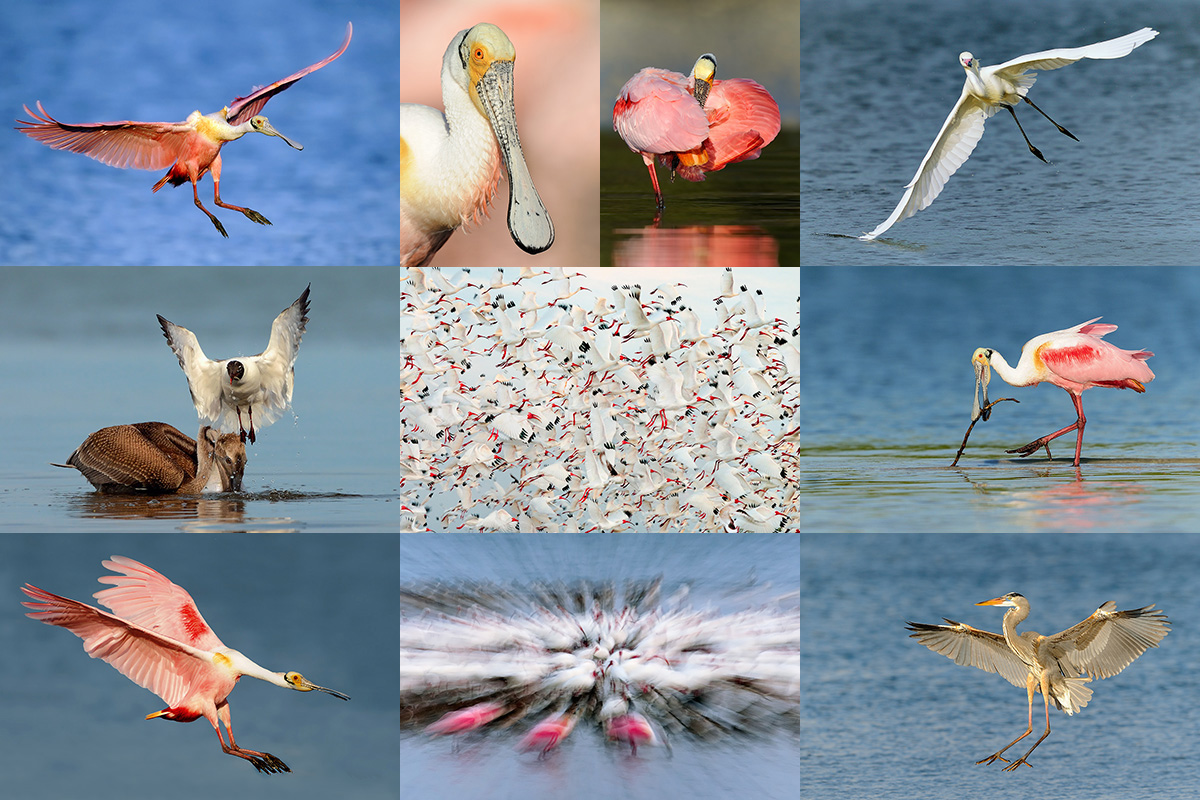
|
|
Images courtesy of our guide; copyright 2017 Captain James Shadle (aka Froggie). All of the images here were created at Alafia Banks. Card creation and design by Arthur Morris/BIRDS AS ART.
|
Everybody Wants Spoonbills!
Roseate Spoonbill is one of if not the most sought after avian photographic subjects in Florida. They are generally hard to find and somewhat difficult to approach. They are relatively easy to find at Alafia Banks—heck, you can’t miss seeing them, but even there they can on some days be somewhat difficult to approach. On some days we may be able to get ridiculously close to them. The huge incentive to get out to Alafia Banks in mid-February is the chance to photograph this species at the height of its spectacular breeding plumage…. with long telephoto lenses. A 500 or 600 with a 1.4X TC is perfect for flight.
As above, there will — weather permitting — three boat trips — 2 mornings and 1 afternoon — on this MINI IPT. All to Alafia Banks for spoonbills and Brown Pelicans (with lots of flight photography often with the birds likely carrying nesting material), Double-crested Cormorants, ibises (both Glossy and White) in breeding plumage. Many of the White Ibises will be sporting their spectacular, distended, red, naked (un-feathered) throat pouches—typically larger in the females. In addition, we may get to photograph egrets including Great and Reddish, both in full breeding plumage, shorebirds, and more. There will be lots of flight photography opportunities. Afternoon trips either to Alafia Banks for spoonbills and more or to a more sheltered inland rookery location for a variety of nesting birds. In the event of horrific weather artie will either take the group to Fort DeSoto or will conduct an image review/Photoshop session. This IPT includes lunches on the full day with small group image sharing and review and some over-the-shoulder Photoshop instruction.
Typos
With all blog posts, feel free to e-mail or to leave a comment regarding any typos or errors.
January 31st, 2023 The Homer IPTs
No Reasonable Offer Refused
I hate sailing with a less than full boat. If you would like to make a low-ball offer on one or more of the Bald Eagle IPTs below, please click here.
IPT #1: MON 20 FEB 2023 through the full day on FRI 24 FEB 2023. Five full days/20 hours on the boat: $5500.00. Limit 5 photographers/Openings: 1.
IPT #2: SAT 25 FEB 2023 through the full day on THURS 2 MAR 2023. Six full days/24 hours on the boat: $6600.00. Limit 5 photographers/Openings: 3.
IPT #3: FRI 3 MAR 2023 through the full day on TUES 7 MAR 2023. Five full days/20 hours on the boat: $5500.00. Limit 5 photographers. Openings: 1.
Rooms at Lands End Resort are available for all of the dates above.
What’s Up?
Though I was feeling a bit better, I skipped my swim again on Monday. And again, I got lots accomplished, especially on my 2022 taxes. I was glad to learn that Andrew Schonbek will be signing up for DeSoto #3. May is a wonderful time to be at DeSoto. But heck, so are March and April!
I could not choose a favorite from yesterday’s three running shorebird images as all were sharp, perfectly exposed, and nicely designed. And I loved the backgrounds.
Though several folks answered the “why crouching?” question, nobody struck paydirt. I was, of course, crouching to reduce the angle of declination to the bird (to get lower). The reason that crouching was better than sitting is that I was easily able to get ahead of sun angle and let the birds run towards me. Like the birds, I was constantly on the move to stay on sun angle. I simply could not get up and down quickly enough to do that. For the same reason, the 200-600 was a much better tool for the job than the 600 with or without a tripod. The 2-6 is lighter and much more manageable than fixed lens. The Sanderling needed less light because the whites are much brighter white than on the other two species. Learn all of the above and tons more by joining me on a DeSoto IPT this spring.
Today is Tuesday 31 January 2023. I will continue to work on my 2022 taxes and catch up on e-mails. This blog post took about 90 minutes to prepare (including the time spent on the two image optimizations) and makes three hundred-eight days in a row with a new, educational post. Wherever you are and whatever you are doing, I hope that you too have a great day.
Please, please, pretty please remember to use my B&H or Bedford’s affiliate programs for all your new gear purchases.
The plan is to continue to post every day until the streak reaches one year and one day and then go back to posting every other day.
Please remember to use the B&H and Amazon links that are found on most blog pages and to use the BIRDSASART discount code at checkout when purchasing your new gear from Bedfords to get 3% back on your credit card and enjoy free second-day air FedEx. Please, also, consider joining a BAA IPT. You will be amazed at how much you will learn!
You can find some great photo accessories (and necessities, like surf booties!) on Amazon by clicking on the Stuff tab on the orange/yellow menu bar above. On a related note, it would be extremely helpful if blog-folks who, like me, spend too much money on Amazon, would get in the habit of clicking on the Amazon logo link on the right side of each blog post when they shop online. As you might expect, doing so will not cost you a single penny, but would be appreciated tremendously by yours truly. And doing so, works seamlessly with your Amazon Prime account.
Please remember that if an item — a Delkin flash card, or a tripod head — for example, that is available from B&H and/or Bedfords, is also available in the BAA Online Store, it would be great, and greatly appreciated, if you would opt to purchase from us. We will match any price. Please remember also to use my B&H affiliate links or to earn 3% cash back at Bedfords by using the BIRDSASART discount code at checkout for your major gear purchases. Doing either often earns you free guides and/or discounts. And always earns my great appreciation.
|
|
|
This image was created on 28 April on a Spring 2022 Fort DeSoto Park IPT. Standing, I used the handheld Sony FE 200-600mm f/5.6-6.3 G OSS lens (at 600mm) and The One, the Sony Alpha 1 Mirrorless digital camera. ) The exposure was determined using Zebra technology with ISO on the Thumb Dial. ISO 800. 1/3200 second at f/6.3 (wide-open) in Manual Mode. AWB at 6:32:37pm on a sunny afternoon. RawDigger showed the exposure to be dead-solid perfect.
Tracking: Zone AF-C with Bird Face/Eye Detection performed perfectly. Be sure to click on the image to enjoy a high-res version.
Image #1: Tricolored Heron striding
|
Understanding the Angle of Declination
This image was created while I was standing, and possibly crouching just a bit. The angle of declination, the degree to which the lens was pointing down at the subject, was much greater than the angle of declination with Image #2 where I was seated, perhaps only slightly above the level of the bird. The greater the angle of declination, the more detail you will see in the (more proximate) background. As you get lower and lower, the distance from the subject to the background is increased thus throwing the background more out of focus (as long as the aperture remains relatively constant).
|
|
|
This image was also created on 28 April on a Spring 2022 Fort DeSoto Park IPT. Seated on damp sand, I used the handheld Sony FE 200-600mm f/5.6-6.3 G OSS lens (at 600mm) and The One, the Sony Alpha 1 Mirrorless digital camera. ) The exposure was determined using Zebra technology with ISO on the Thumb Dial. ISO 800. 1/3200 second at f/6.3 (wide-open) in Manual Mode. AWB at 6:49:59pm on a sunny afternoon. RawDigger showed the exposure to be dead-solid perfect.
Tracking: Zone AF-C with Bird Face/Eye Detection performed perfectly. Be sure to click on the image to enjoy a high-res version.
Image #2: Tricolored Heron hunting
|
The Quality of Light
As the sun drops lower and lower in the sky on clear afternoons, the light becomes warmer and warmer each minute. Notice the difference in the quality of light in Image #1 as compared to Image #2 while considering that Image #2 was created less than 18 minutes after Image #1.
Image Questions
Which image do you like best? Why?
Which background do you like best? Why?
Which light do you like best? Why?
About how many degrees was the lens pointed down when I made Image #1?
About how many degrees was the lens pointed down when I created Image #2?
My thoughts tomorrow in the What’s Up? item.
|
|
|
Fort DeSoto in spring is rife with tame birds, many in full breeding plumage. Click on the composite to enjoy a larger version.
Clockwise from upper left around to center: Laughing Gull landing on head of Brown Pelican, Laughing Gull in flight, Reddish Egret sunrise silhouette, Great Blue Heron with needlefish, Yellow-crowned Night Heron with ghost crab, Roseate Spoonbill, Sanderling in breeding plumage, and white morph Reddish Egret in glorious breeding plumage.
|
The 2023 Spring Fort DeSoto Instructional Photo Tours (IPTs)
Spring Fort DeSoto IPT #1: Tuesday 28 March through the morning session on 31 March 2023. 3 1/2 Days: $1899.00 includes three working brunches. Limit six photographers.
Spring Fort DeSoto IPT #2: Tuesday 11 April through the morning session on 14 April 2023. 3 1/2 Days: $1899.00 includes three working brunches. Limit six photographers.
Spring Fort DeSoto IPT #3: Tuesday 9 May through the morning session on 12 May 2023. 3 1/2 Days: $1899.00 includes three working brunches. Limit six photographers.
Fort DeSoto, located just south of St. Petersburg, FL, is a mecca for terns and gulls, wading birds, and shorebirds in spring. Many of the birds will be in full breeding plumage. Simply put, DeSoto is the new Ding Darling. Migrant shorebirds are in abundance, and many are exceedingly tame. We should have great chances on Royal and Sandwich Terns and both white- and dark-morph Reddish Egrets. Great Egret, Snowy Egret, Great Blue Heron, Tricolored Heron, and White Ibis are easy as well and we will almost surely come up with a tame Yellow-crowned Night-Heron or two along with some American Oystercatchers. We will enjoy lots of great flight photography, especially with the Brown Pelicans.
|
|
|
Again, Fort DeSoto in spring is rife with tame birds, most in breeding plumage. Click on the composite to enjoy a larger version.
Clockwise from upper left around to center: Laughing Gull in flight, Yellow-crowned Night-Heron, Sandwich Terns copulating, Roseate Spoonbill, Great Egret with reflection, breeding plumage Short-billed Dowitcher, American Oystercatcher, Royal Tern, white morph Reddish Egret, and Snowy Egret in marsh.
|
In Addition!
We should also get to photograph a variety of other shorebirds including Black-bellied, Semipalmated, Wilson’s, Snowy, and Piping Plovers, Willet, Dunlin, Short-billed Dowitcher, Marbled Godwit, and most especially, Red Knot, with many individuals in their handsome breeding plumages. In spring the T-shaped peninsula and the newly formed sandbar, Outback Key, are literally packed with avian treasures.
With just a bit of luck, we may get to photograph one of Florida’s most desirable species: Roseate Spoonbill. And we will surely get to do some Brown Pelican flight photography. With luck, they will have Laughing Gulls landing on their heads. And though not guaranteed, Wood Stork might well be expected. And we will be on the lookout for a migrant passerine fallout in the event of a thunderstorm or two.
|
|
|
Yes, Fort DeSoto in spring is rife with tame birds, most in breeding plumage. Click on the composite to enjoy a larger version.
Clockwise from upper left around to center: breeding plumage Dunlin, dark morph Reddish Egret displaying, Laughing Gull vertical front-end portrait, Laughing Gull with prey item, landing on head of Brown Pelican, breeding plumage Royal Tern displaying, Royal Terns — pre-copulatory stance, Laughing Gulls copulating, Laughing Gull head portrait, breeding plumage Sandwich Tern with fish, and a rare treat, a breeding plumage White-rumped Sandpiper.
|
What You Will Learn on a DeSoto IPT
- 1- The basics and fine points of digital exposure; how to get the right exposure every time after making a single test exposure (or before if you are using SONY gear).
- 2- How and why to work in Manual mode (even if you’re scared of it).
- 3- How to approach free and wild birds without disturbing them.
- 4- Lots about bird behavior and how to use that knowledge to help you create better images.
- 5- To age and identify many species of shorebirds including various sandpipers, plovers, dowitchers, and possibly yellowlegs.
- 6- To spot good situations and to choose the best perspective.
- 7- To see, evaluate, and understand the light.
- 8- To design pleasing images by mastering your camera’s AF system.
- 9- And perhaps most importantly, to evaluate wind and sky conditions and understand how they affect bird photography.
- 10- More than you could ever imagine.
|
|
|
You’ve got it by now! Fort DeSoto in spring is rife with tame birds, many in breeding plumage. Click on the composite to enjoy a larger version.
Clockwise from upper left around to center: Roseate Spoonbill, immature Brown Pelican in flight, the heron/egret hybrid, American Oystercatcher feeding, immature Royal Tern on railing, Great Egret morning silhouette, Black Skimmer in surf, and underside head portrait of Great Blue Heron.
|
The Details
Morning sessions will run two and one-half to three hours; afternoon sessions about two. There is never a set schedule on an IPT — we adapt to the conditions. On cloudy mornings with the right wind, we may opt to photograph till noon and skip the afternoon session. That especially when the afternoon weather is looking iffy. We may opt to visit a great North Tampa rookery if conditions warrant that.
There will be a Photoshop/Image Review session before and after brunch (included) each of the three full days. That will be followed by Instructor Nap Time. Each of these IPTs will run with only a single registrant as I do not like disappointing anyone. The best airport is Tampa (TPA). Once you register, you will receive an e-mail with lodging information. Do know that it is always best if IPT folks stay in the same general area (rather than at home or at a friend’s place a good distance away).
Folks attending this IPT will be out in the field as early as possible and stay out late to take advantage of sunrise and sunset colors; this is pretty much a staple on almost all BIRDS AS ART Instructional Photo-Tours. Doing so will often present unique photographic opportunities, opportunities that will be missed by those who need their beauty rest and those who need to get home for a proper dinner. I really love it when I am leaving the beach at 9:30am on a sunny morning after a great session just as a carful or two of well-rested photographers are arriving … We will be getting wet.
Your $599 deposit is due now. Credit cards are OK for that. You can register by calling Jim or Jennifer during weekday business hours at 863-692-0906 with a credit card in hand. Once you leave a deposit, you will receive an e-mail with your balance statement and instructions for sending your balance check three months before the trip begins. If you wish to pay in full right off the bat, you can make your check out to BIRDS AS ART and send it via US mail here: BIRDS AS ART, PO BOX 7245, Indian Lake Estates, FL 33855. You will receive a confirmation e-mail with detailed instructions, and clothing and gear advice two months before the trip. Please shoot me an e-mail if you plan to register or if you have any questions.
IPT veterans and couples or friends signing up together may e-mail for discount information.
Typos
With all blog posts, feel free to e-mail or to leave a comment regarding any typos or errors.
January 30th, 2023 The Homer IPTs
No Reasonable Offer Refused
I hate sailing with a less than full boat. If you would like to make an offer on one or more of the Bald Eagle IPTs below, please click here.
IPT #1: MON 20 FEB 2023 through the full day on FRI 24 FEB 2023. Five full days/20 hours on the boat: $5500.00. Limit 5 photographers/Openings: 1.
IPT #2: SAT 25 FEB 2023 through the full day on THURS 2 MAR 2023. Six full days/24 hours on the boat: $6600.00. Limit 5 photographers/Openings: 3.
IPT #3: FRI 3 MAR 2023 through the full day on TUES 7 MAR 2023. Five full days/20 hours on the boat: $5500.00. Limit 5 photographers. Openings: 1.
What’s Up?
With my sore throat continuing but not getting worse, I skipped my swim again on Sunday. I called my accountant and asked him if he were sitting down. Then I told him that I had begun working on my 2022 taxes. I have not filed on time in several decades.
I created and sent SONY Alpha a1 Set-up and Info Group Notes e-Mail E. For the most part, it dealt with the new strategies I have come up with involving Tracking: Expand Spot.
An injured Patrick Mahomes (high ankle sprain) led the Kansas City Chiefs to the Super Bowl in two weeks with a nail-biting victory over the Joe Burrow-led Cincinnati Bengals. Previously, the Bengals had come from behind in three straight games to defeat KC. Mahomes and star tight end Travis Kelce celebrated after the game like little boys on Christmas morning. Here’s hoping that the Chiefs destroy the Philadelphia Eagles in Arizona in 13 days.
Of yesterday’s three images, I liked Image #1 best because of the dramatically angled wing position and the water being squeezed out of the bill pouch. #3 was my second choice.
Today is Monday 30 January 2023. I will continue to work on my 2022 taxes. This blog post took about 90 minutes to prepare (including the time spent on the three image optimizations) and makes three hundred-seven days in a row with a new, educational post. Wherever you are and whatever you are doing, I hope that you too have a great day.
Please, please, pretty please remember to use my B&H or Bedford’s affiliate programs for all your new gear purchases.
The plan is to continue to post every day until the streak reaches one year and one day and then go back to posting every other day.
Please remember to use the B&H and Amazon links that are found on most blog pages and to use the BIRDSASART discount code at checkout when purchasing your new gear from Bedfords to get 3% back on your credit card and enjoy free second-day air FedEx. Please, also, consider joining a BAA IPT. You will be amazed at how much you will learn!
You can find some great photo accessories (and necessities, like surf booties!) on Amazon by clicking on the Stuff tab on the orange/yellow menu bar above. On a related note, it would be extremely helpful if blog-folks who, like me, spend too much money on Amazon, would get in the habit of clicking on the Amazon logo link on the right side of each blog post when they shop online. As you might expect, doing so will not cost you a single penny, but would be appreciated tremendously by yours truly. And doing so, works seamlessly with your Amazon Prime account.
Please remember that if an item — a Delkin flash card, or a tripod head — for example, that is available from B&H and/or Bedfords, is also available in the BAA Online Store, it would be great, and greatly appreciated, if you would opt to purchase from us. We will match any price. Please remember also to use my B&H affiliate links or to earn 3% cash back at Bedfords by using the BIRDSASART discount code at checkout for your major gear purchases. Doing either often earns you free guides and/or discounts. And always earns my great appreciation.
|
|
|
This image was created on 28 April on a Spring 2022 Fort DeSoto Park IPT. Crouching down a bit, I used the handheld Sony FE 200-600mm f/5.6-6.3 G OSS lens (at 600mm) and The One, the Sony Alpha 1 Mirrorless digital camera. ) The exposure was determined using Zebra technology with ISO on the Thumb Dial. ISO 1000. 1/1600 second at f/6.3 (wide-open) in Manual Mode. AWB at 7:29:06am on a sunny morning. RawDigger showed the exposure to be perfect.
Tracking: Zone AF-C with Bird Face/Eye Detection performed perfectly. Be sure to click on the image to enjoy a high-res version.
Image #1: Ruddy Turnstone running on wet sand near the edge of the surf
|
The Sony 200-600 on Sunny Days
With its relatively slow f/6.3 aperture, the Sony 200-600 G zoom lens really shines on sunny days, allowing for the use of the relatively high shutter speeds in the range of from 1/1600 to 1/3200 sec. These shutter speeds are needed to create sharp photographs of running shorebirds and of flying pelicans, gulls, and terns without having to crank up the ISO.
Why Crouching?
Why was I crouching when I created each of today’s featured images when I could have gotten lower by sitting?
|
|
|
This image was also created on 28 April on a Spring 2022 Fort DeSoto Park IPT. Again, crouching down a bit, I used the handheld Sony FE 200-600mm f/5.6-6.3 G OSS lens (at 353mm) and The One, the Sony Alpha 1 Mirrorless digital camera. ) The exposure was determined using Zebra technology with ISO on the Thumb Dial. ISO 1000. 1/1600 second at f/6.3 (wide-open) in Manual Mode. AWB at 7:34:52am on a sunny morning. RawDigger showed the exposure to be perfect.
Tracking: Zone AF-C with Bird Face/Eye Detection performed perfectly. Be sure to click on the image to enjoy a high-res version.
Image #2: Willet running in shallow surf
|
Running Shorebird Backgrounds
In sweet early morning light, the wet sand along the edge of the surf and/or gently breaking wavelets provide some of my favorite beach backgrounds. Join one of the Spring 2023 DeSoto Instructional Photo-tours to learn the strategies that I employ to create running shorebird images. When conditions are perfect, it takes a lot more than luck to succeed. Many would not be surprised to learn that wind direction is one of the factors involved.
Sony FE 200-600mm f/5.6-6.3 G OSS Lens versus the Canon RF 100-500mm f/4.5-7.1 L IS USM Lens
Sorry. This one is pretty much no contest. Maximum reach? Sony. Speed at the long end? Sony. Smooth and efficient zooming? Sony, due for the most part to the 2-6’s internal focusing; the lens length remains constant as you zoom in an out. Zooming in and out with the RF 100-500 is stiff and clunky at best as the lens changes length during the process. This dramatically affects handling and ease of use. Price — amazingly, the 200-600 costs $701.00 less than the 100-500.
AF with either lens remains superb when a 1.4X teleconverter is added, but with Canon, you lose much of the short end of the zoom range: 420-700mm with the TC. With the Sony lens you are at 280-840mm.
Though the 200-600 focuses to a very impressive less than 8 feet at 600mm, the Minimum Focusing Distance battle goes to the RF 100-600 with its 2.95 feet MFD. And the 1-5 is more than 1 1/2 lbs. lighter: 3 lbs. vs. 4.65 lbs. While I am easily able to handhold the 200-600, others might struggle doing so.
Throw in the fact that the a1 is far superior to any of the Canon mirrorless camera bodies and it is obvious that the Sony 200-600 reigns supreme among the large mirrorless telephoto zoom lenses.
Just for the Record
If you are not using a Sony a1 for bird photography, you are making your life far more difficult than it needs to be. Period. If you would like to receive a short but frank e-mail explaining why the Sony a1 is so much better than the best Nikon and Canon mirrorless camera bodies, please click here.
|
|
|
This image was also created on 28 April on a Spring 2022 Fort DeSoto Park IPT. Again, crouching down a bit, I used the handheld Sony FE 200-600mm f/5.6-6.3 G OSS lens (at 353mm) and The One, the Sony Alpha 1 Mirrorless digital camera. ) The exposure was determined using Zebra technology with ISO on the Thumb Dial. ISO 1000. 1/2500 second at f/6.3 (wide-open) in Manual Mode. AWB at 7:41:30am on a sunny morning. RawDigger showed the exposure to be perfect.
Tracking: Zone AF-C with Bird Face/Eye Detection performed perfectly. Be sure to click on the image to enjoy a high-res version.
Image #3: Sanderling running along the edge of shallow surf
|
Your Call?
Which of today’s three featured images is your favorite? Please leave a comment letting us know why you made your choice.
Exposure Question
Why was the shutter speed for the Sanderling image (1/2500 second), 2/3-stop faster than the shutter speed for the turnstone and Willet images (1/1600 second)?
|
|
|
Fort DeSoto in spring is rife with tame birds, many in full breeding plumage. Click on the composite to enjoy a larger version.
Clockwise from upper left around to center: Laughing Gull landing on head of Brown Pelican, Laughing Gull in flight, Reddish Egret sunrise silhouette, Great Blue Heron with needlefish, Yellow-crowned Night Heron with ghost crab, Roseate Spoonbill, Sanderling in breeding plumage, and white morph Reddish Egret in glorious breeding plumage.
|
The 2023 Spring Fort DeSoto Instructional Photo Tours (IPTs)
Spring Fort DeSoto IPT #1: Tuesday 28 March through the morning session on 31 March 2023. 3 1/2 Days: $1899.00 includes three working brunches. Limit six photographers.
Spring Fort DeSoto IPT #2: Tuesday 11 April through the morning session on 14 April 2023. 3 1/2 Days: $1899.00 includes three working brunches. Limit six photographers.
Spring Fort DeSoto IPT #3: Tuesday 9 May through the morning session on 12 May 2023. 3 1/2 Days: $1899.00 includes three working brunches. Limit six photographers.
Fort DeSoto, located just south of St. Petersburg, FL, is a mecca for terns and gulls, wading birds, and shorebirds in spring. Many of the birds will be in full breeding plumage. Simply put, DeSoto is the new Ding Darling. Migrant shorebirds are in abundance, and many are exceedingly tame. We should have great chances on Royal and Sandwich Terns and both white- and dark-morph Reddish Egrets. Great Egret, Snowy Egret, Great Blue Heron, Tricolored Heron, and White Ibis are easy as well and we will almost surely come up with a tame Yellow-crowned Night-Heron or two along with some American Oystercatchers. We will enjoy lots of great flight photography, especially with the Brown Pelicans.
|
|
|
Again, Fort DeSoto in spring is rife with tame birds, most in breeding plumage. Click on the composite to enjoy a larger version.
Clockwise from upper left around to center: Laughing Gull in flight, Yellow-crowned Night-Heron, Sandwich Terns copulating, Roseate Spoonbill, Great Egret with reflection, breeding plumage Short-billed Dowitcher, American Oystercatcher, Royal Tern, white morph Reddish Egret, and Snowy Egret in marsh.
|
In Addition!
We should also get to photograph a variety of other shorebirds including Black-bellied, Semipalmated, Wilson’s, Snowy, and Piping Plovers, Willet, Dunlin, Short-billed Dowitcher, Marbled Godwit, and most especially, Red Knot, with many individuals in their handsome breeding plumages. In spring the T-shaped peninsula and the newly formed sandbar, Outback Key, are literally packed with avian treasures.
With just a bit of luck, we may get to photograph one of Florida’s most desirable species: Roseate Spoonbill. And we will surely get to do some Brown Pelican flight photography. With luck, they will have Laughing Gulls landing on their heads. And though not guaranteed, Wood Stork might well be expected. And we will be on the lookout for a migrant passerine fallout in the event of a thunderstorm or two.
|
|
|
Yes, Fort DeSoto in spring is rife with tame birds, most in breeding plumage. Click on the composite to enjoy a larger version.
Clockwise from upper left around to center: breeding plumage Dunlin, dark morph Reddish Egret displaying, Laughing Gull vertical front-end portrait, Laughing Gull with prey item, landing on head of Brown Pelican, breeding plumage Royal Tern displaying, Royal Terns — pre-copulatory stance, Laughing Gulls copulating, Laughing Gull head portrait, breeding plumage Sandwich Tern with fish, and a rare treat, a breeding plumage White-rumped Sandpiper.
|
What You Will Learn on a DeSoto IPT
- 1- The basics and fine points of digital exposure; how to get the right exposure every time after making a single test exposure (or before if you are using SONY gear).
- 2- How and why to work in Manual mode (even if you’re scared of it).
- 3- How to approach free and wild birds without disturbing them.
- 4- Lots about bird behavior and how to use that knowledge to help you create better images.
- 5- To age and identify many species of shorebirds including various sandpipers, plovers, dowitchers, and possibly yellowlegs.
- 6- To spot good situations and to choose the best perspective.
- 7- To see, evaluate, and understand the light.
- 8- To design pleasing images by mastering your camera’s AF system.
- 9- And perhaps most importantly, to evaluate wind and sky conditions and understand how they affect bird photography.
- 10- More than you could ever imagine.
|
|
|
You’ve got it by now! Fort DeSoto in spring is rife with tame birds, many in breeding plumage. Click on the composite to enjoy a larger version.
Clockwise from upper left around to center: Roseate Spoonbill, immature Brown Pelican in flight, the heron/egret hybrid, American Oystercatcher feeding, immature Royal Tern on railing, Great Egret morning silhouette, Black Skimmer in surf, and underside head portrait of Great Blue Heron.
|
The Details
Morning sessions will run two and one-half to three hours; afternoon sessions about two. There is never a set schedule on an IPT — we adapt to the conditions. On cloudy mornings with the right wind, we may opt to photograph till noon and skip the afternoon session. That especially when the afternoon weather is looking iffy. We may opt to visit a great North Tampa rookery if conditions warrant that.
There will be a Photoshop/Image Review session before and after brunch (included) each of the three full days. That will be followed by Instructor Nap Time. Each of these IPTs will run with only a single registrant as I do not like disappointing anyone. The best airport is Tampa (TPA). Once you register, you will receive an e-mail with lodging information. Do know that it is always best if IPT folks stay in the same general area (rather than at home or at a friend’s place a good distance away).
Folks attending this IPT will be out in the field as early as possible and stay out late to take advantage of sunrise and sunset colors; this is pretty much a staple on almost all BIRDS AS ART Instructional Photo-Tours. Doing so will often present unique photographic opportunities, opportunities that will be missed by those who need their beauty rest and those who need to get home for a proper dinner. I really love it when I am leaving the beach at 9:30am on a sunny morning after a great session just as a carful or two of well-rested photographers are arriving … We will be getting wet.
Your $599 deposit is due now. Credit cards are OK for that. You can register by calling Jim or Jennifer during weekday business hours at 863-692-0906 with a credit card in hand. Once you leave a deposit, you will receive an e-mail with your balance statement and instructions for sending your balance check three months before the trip begins. If you wish to pay in full right off the bat, you can make your check out to BIRDS AS ART and send it via US mail here: BIRDS AS ART, PO BOX 7245, Indian Lake Estates, FL 33855. You will receive a confirmation e-mail with detailed instructions, and clothing and gear advice two months before the trip. Please shoot me an e-mail if you plan to register or if you have any questions.
IPT veterans and couples or friends signing up together may e-mail for discount information.
Typos
With all blog posts, feel free to e-mail or to leave a comment regarding any typos or errors.
January 29th, 2023
|
|
|
Fort DeSoto in spring is rife with tame birds, many in full breeding plumage. Click on the composite to enjoy a larger version.
Clockwise from upper left around to center: Laughing Gull landing on head of Brown Pelican, Laughing Gull in flight, Reddish Egret sunrise silhouette, Great Blue Heron with needlefish, Yellow-crowned Night Heron with ghost crab, Roseate Spoonbill, Sanderling in breeding plumage, and white morph Reddish Egret in glorious breeding plumage.
|
The 2023 Spring Fort DeSoto Instructional Photo Tours (IPTs)
Spring Fort DeSoto IPT #1: Tuesday 28 March through the morning session on 31 March 2023. 3 1/2 Days: $1899.00 includes three working brunches. Limit six photographers.
Spring Fort DeSoto IPT #2: Tuesday 11 April through the morning session on 14 April 2023. 3 1/2 Days: $1899.00 includes three working brunches. Limit six photographers.
Spring Fort DeSoto IPT #3: Tuesday 9 May through the morning session on 12 May 2023. 3 1/2 Days: $1899.00 includes three working brunches. Limit six photographers.
Fort DeSoto, located just south of St. Petersburg, FL, is a mecca for terns and gulls, wading birds, and shorebirds in spring. Many of the birds will be in full breeding plumage. Simply put, DeSoto is the new Ding Darling. Migrant shorebirds are in abundance, and many are exceedingly tame. We should have great chances on Royal and Sandwich Terns and both white- and dark-morph Reddish Egrets. Great Egret, Snowy Egret, Great Blue Heron, Tricolored Heron, and White Ibis are easy as well and we will almost surely come up with a tame Yellow-crowned Night-Heron or two along with some American Oystercatchers. We will enjoy lots of great flight photography, especially with the Brown Pelicans.
|
|
|
Again, Fort DeSoto in spring is rife with tame birds, most in breeding plumage. Click on the composite to enjoy a larger version.
Clockwise from upper left around to center: Laughing Gull in flight, Yellow-crowned Night-Heron, Sandwich Terns copulating, Roseate Spoonbill, Great Egret with reflection, breeding plumage Short-billed Dowitcher, American Oystercatcher, Royal Tern, white morph Reddish Egret, and Snowy Egret in marsh.
|
In Addition!
We should also get to photograph a variety of other shorebirds including Black-bellied, Semipalmated, Wilson’s, Snowy, and Piping Plovers, Willet, Dunlin, Short-billed Dowitcher, Marbled Godwit, and most especially, Red Knot, with many individuals in their handsome breeding plumages. In spring the T-shaped peninsula and the newly formed sandbar, Outback Key, are literally packed with avian treasures.
With just a bit of luck, we may get to photograph one of Florida’s most desirable species: Roseate Spoonbill. And we will surely get to do some Brown Pelican flight photography. With luck, they will have Laughing Gulls landing on their heads. And though not guaranteed, Wood Stork might well be expected. And we will be on the lookout for a migrant passerine fallout in the event of a thunderstorm or two.
|
|
|
Yes, Fort DeSoto in spring is rife with tame birds, most in breeding plumage. Click on the composite to enjoy a larger version.
Clockwise from upper left around to center: breeding plumage Dunlin, dark morph Reddish Egret displaying, Laughing Gull vertical front-end portrait, Laughing Gull with prey item, landing on head of Brown Pelican, breeding plumage Royal Tern displaying, Royal Terns — pre-copulatory stance, Laughing Gulls copulating, Laughing Gull head portrait, breeding plumage Sandwich Tern with fish, and a rare treat, a breeding plumage White-rumped Sandpiper.
|
What You Will Learn on a DeSoto IPT
- 1- The basics and fine points of digital exposure; how to get the right exposure every time after making a single test exposure (or before if you are using SONY gear).
- 2- How and why to work in Manual mode (even if you’re scared of it).
- 3- How to approach free and wild birds without disturbing them.
- 4- Lots about bird behavior and how to use that knowledge to help you create better images.
- 5- To age and identify many species of shorebirds including various sandpipers, plovers, dowitchers, and possibly yellowlegs.
- 6- To spot good situations and to choose the best perspective.
- 7- To see, evaluate, and understand the light.
- 8- To design pleasing images by mastering your camera’s AF system.
- 9- And perhaps most importantly, to evaluate wind and sky conditions and understand how they affect bird photography.
- 10- More than you could ever imagine.
|
|
|
You’ve got it by now! Fort DeSoto in spring is rife with tame birds, many in breeding plumage. Click on the composite to enjoy a larger version.
Clockwise from upper left around to center: Roseate Spoonbill, immature Brown Pelican in flight, the heron/egret hybrid, American Oystercatcher feeding, immature Royal Tern on railing, Great Egret morning silhouette, Black Skimmer in surf, and underside head portrait of Great Blue Heron.
|
The Details
Morning sessions will run two and one-half to three hours; afternoon sessions about two. There is never a set schedule on an IPT — we adapt to the conditions. On cloudy mornings with the right wind, we may opt to photograph till noon and skip the afternoon session. That especially when the afternoon weather is looking iffy. We may opt to visit a great North Tampa rookery if conditions warrant that.
There will be a Photoshop/Image Review session before and after brunch (included) each of the three full days. That will be followed by Instructor Nap Time. Each of these IPTs will run with only a single registrant as I do not like disappointing anyone. The best airport is Tampa (TPA). Once you register, you will receive an e-mail with lodging information. Do know that it is always best if IPT folks stay in the same general area (rather than at home or at a friend’s place a good distance away).
Folks attending this IPT will be out in the field as early as possible and stay out late to take advantage of sunrise and sunset colors; this is pretty much a staple on almost all BIRDS AS ART Instructional Photo-Tours. Doing so will often present unique photographic opportunities, opportunities that will be missed by those who need their beauty rest and those who need to get home for a proper dinner. I really love it when I am leaving the beach at 9:30am on a sunny morning after a great session just as a carful or two of well-rested photographers are arriving … We will be getting wet.
Your $599 deposit is due now. Credit cards are OK for that. You can register by calling Jim or Jennifer during weekday business hours at 863-692-0906 with a credit card in hand. Once you leave a deposit, you will receive an e-mail with your balance statement and instructions for sending your balance check three months before the trip begins. If you wish to pay in full right off the bat, you can make your check out to BIRDS AS ART and send it via US mail here: BIRDS AS ART, PO BOX 7245, Indian Lake Estates, FL 33855. You will receive a confirmation e-mail with detailed instructions, and clothing and gear advice two months before the trip. Please shoot me an e-mail if you plan to register or if you have any questions.
IPT veterans and couples or friends signing up together may e-mail for discount information.
What’s Up?
With a bit of a sore throat, I took it easy on Saturday. I even skipped my swim.
While the water in yesterday’s Image #4 is wildly dramatic, I am not thrilled by the near-wing position. Image #3 was my favorite because of the great look at the bird’s face and the fish and the even, light-toned background. Consider joining me on one of the DeSoto IPTs below to learn a ton and get in on the great action and flight photography.
Today is Sunday 29 January 2023. I will be working on a San Diego video. I have been learning to process a1 video in iMovie. This blog post took about 90 minutes to prepare (including the time spent on the three image optimizations) and makes three hundred-six days in a row with a new, educational post. Wherever you are and whatever you are doing, I hope that you too have a great day.
Please, please, pretty please remember to use my B&H or Bedford’s affiliate programs for all your new gear purchases.
The plan is to continue to post every day until the streak reaches one year and one day and then go back to posting every other day.
Please remember to use the B&H and Amazon links that are found on most blog pages and to use the BIRDSASART discount code at checkout when purchasing your new gear from Bedfords to get 3% back on your credit card and enjoy free second-day air FedEx. Please, also, consider joining a BAA IPT. You will be amazed at how much you will learn!
You can find some great photo accessories (and necessities, like surf booties!) on Amazon by clicking on the Stuff tab on the orange/yellow menu bar above. On a related note, it would be extremely helpful if blog-folks who, like me, spend too much money on Amazon, would get in the habit of clicking on the Amazon logo link on the right side of each blog post when they shop online. As you might expect, doing so will not cost you a single penny, but would be appreciated tremendously by yours truly. And doing so, works seamlessly with your Amazon Prime account.
Please remember that if an item — a Delkin flash card, or a tripod head — for example, that is available from B&H and/or Bedfords, is also available in the BAA Online Store, it would be great, and greatly appreciated, if you would opt to purchase from us. We will match any price. Please remember also to use my B&H affiliate links or to earn 3% cash back at Bedfords by using the BIRDSASART discount code at checkout for your major gear purchases. Doing either often earns you free guides and/or discounts. And always earns my great appreciation.
Induro GIT 304L Tripod
Out of production for more than two years, BAA sold its last one in December. The good news? We now have two more new-in-the-box tripods. They are now available for shipping. Best to order yours now to be sure that you get one. The 304L was my go-to tripod for more than a decade. Best to grab order yours right now to avoid being disappointed.
|
|
|
This image was created on 29 April 2022 on a Spring 2022 Fort DeSoto Park IPT. Standing at full height, I used the handheld Sony FE 200-600mm f/5.6-6.3 G OSS lens (at 400mm) and The One, the Sony Alpha 1 Mirrorless digital camera. ) The exposure was determined using Zebra technology with ISO on the Thumb Dial. ISO 800. 1/3200 second at f/6.3 (wide-open) in Manual Mode. AWB at 9:22:03am on a mostly sunny morning. RawDigger showed the exposure to be dead-solid perfect.
Tracking: Zone/AF-C with Bird Face/Eye Detection performed perfectly. Be sure to click on the image to enjoy a high-res version.
Image #1: Brown Pelican fishing
|
Content-Aware Fill
I zoomed out for this one, but not quite enough. I clipped about 1/2-inch of a single primary tip of the far wing. I expanded canvas just a bit using Content-Aware Crop and was expecting to have some work to do once it rendered. I was surprised to see that Content-Aware Crop did a perfect job of adding the missing wingtip. I did have to do a bit of work on the background near the re-built wingtip.
|
|
|
This image was also created on 29 April 2022 on a Spring 2022 Fort DeSoto Park IPT. Standing at full height, I used the handheld Sony FE 200-600mm f/5.6-6.3 G OSS lens (at 433mm) and The One, the Sony Alpha 1 Mirrorless digital camera. ) The exposure was determined using Zebra technology with ISO on the Thumb Dial. ISO 800. 1/3200 second at f/6.3 (wide-open) in Manual Mode. AWB at 9:22:24am on a mostly sunny morning. RawDigger showed the exposure to be dead-solid perfect.
Tracking: Zone/AF-C with Bird Face/Eye Detection performed perfectly. Be sure to click on the image to enjoy a high-res version.
Image #2: Brown Pelican emerging with tiny fish in bill
|
Same Bird?
Image #1 was my favorite of a 10-frame sequence created in a single second (I kept four). Images #2 and 3 were my picks from a 35-frame sequence created in less than 2 seconds. (I kept 14 of those!) As the bird in the two sequences looked quite similar and the two sequences were created just 21 seconds apart, I was not sure if they were the same bird. Close examination of the base of the upper mandibles revealed that the bird in Image #1 was not the same bird as the bird in Images #2 and 3.
|
|
|
This image was also created on 29 April 2022 on a Spring 2022 Fort DeSoto Park IPT. Standing at full height, I used the handheld Sony FE 200-600mm f/5.6-6.3 G OSS lens (at 433mm) and The One, the Sony Alpha 1 Mirrorless digital camera. ) The exposure was determined using Zebra technology with ISO on the Thumb Dial. ISO 800. 1/3200 second at f/6.3 (wide-open) in Manual Mode. AWB at 9:22:24am on a mostly sunny morning. RawDigger showed the exposure to be dead-solid perfect.
Tracking: Zone/AF-C with Bird Face/Eye Detection performed perfectly. Be sure to click on the image to enjoy a high-res version.
Image #3: Brown Pelican leaving the scene with tiny fish visible in its distended bill pouch
|
30-Frames per Second
The huge advantages of 30-frames per second camera bodies are apparent as you read the info under Image #2 and view today’s three featured images. When shooting birds in fight, having a choice of wing positions and flight poses is the key to success. Remarkably, all 45 Sony A1 images in the two series were razor sharp on the eye. Whatever camera body you are using, I recommend that you use the highest possible frame rate when photographing birds. I sometimes run into folks who do otherwise and state, “I do not want to have to edit so many images.” To me, that is ridiculous. When I am editing a session folder in Photo Mechanic, the keepers practically leap off the screen shouting “Tag me, tag me!” Not to mention that Photo Mechanic (unlike Bridge) is blazingly fast.
I always wanted to be good at photographing birds in flight. The Sony a9II was my first step toward reaching that goal. With my two Sony A1 bodies, all poor results are due to operator error. I can finally say with confidence that I am good at photographing birds in flight. With the two sequences discussed above, I deleted 27 properly framed, sharp on the eye flight shots. Five years ago, any one of those would have thrilled me.
Your Call?
Which of today’s three featured images is your favorite? Please leave a comment letting us know why you made your choice.
|
|
|
Click on the image to better see the green eye-AF boxes in action.
Sony Alpha 1 Flight Photography AF Points!
|
The SONY Alpha a1 Set-up Guide and Info Group: $150.00 (or Free)
The SONY Alpha a1 Set-up Guide and Info Group is going great guns as more and more folks chime in with thoughtful questions and experience-based answers. As the a1 is becoming more readily available, more and more folks are getting their hands on this amazing body. By June 1, 2022, the group was up to an astounding 124 lucky and blessed folks. (More than a few folks own two or more a1 bodies! Early on, we discussed the myriad AF options. I gave my opinion as to the best one for flight and general bird photography. The best news is that everyone in the group receives an e-mail that includes a .DAT file with my a1 settings on it, and explicit directions on how to load my settings onto your a1; talk about convenience! I am now offering a .DAT file compatible with firmware update 1.20. Your entry into the group includes a consolidated Sony a1 CAMSETA2 INFO & GUIDE. New a1 folks will now receive six e-mails instead of the previous 28! You will receive new e-mails as they are published. Simply put, this e-mail guide is an incredible resource for anyone with an a1.
All who purchased their Alpha 1 bodies via a BAA affiliate link — B&H or Bedfords — will receive a free Sony Alpha a1 Set-Up Guide and free entry into the Info Updates group after shooting me their receipts via e-mail. (Note: it may take me several days to confirm B&H orders.). Others can purchase their guide here in the BAA Online Store.
Typos
With all blog posts, feel free to e-mail or to leave a comment regarding any typos or errors.
January 28th, 2023 Homer Late Registration Discounts
If you are interested in traveling to Homer, AK with me in FEB/MAR 2023 to photograph Bald Eagles, shoot me an e-mail for late registration discount info. Several folks are in the process of registering so do not tarry. The first IPT is looking sold out as I await the last deposit check.
What’s Up?
Not much, apart from getting lots done on the new Used Gear listings. And, also below, the announcement of three Spring 2023 DeSoto IPTs. Coming soon, several 2023/24 San Diego trips and the July 2024 Galapagos Photo-Cruise of a Lifetime.
Today is Saturday 28 January 2023. I have so much to do that I did not even think of heading down to the lake. This blog post took about six hours to prepare (including the time spent on the used Gear listings, the image optimizations, and the DeSoto IPT announcement), and makes three hundred-five days in a row with a new, educational post. Wherever you are and whatever you are doing, I hope that you too have a great day.
Please, please, pretty please remember to use my B&H or Bedford’s affiliate programs for all your new gear purchases.
The plan is to continue to post every day until the streak reaches one year and one day and then go back to posting every other day.
Please remember to use the B&H and Amazon links that are found on most blog pages and to use the BIRDSASART discount code at checkout when purchasing your new gear from Bedfords to get 3% back on your credit card and enjoy free second-day air FedEx. Please, also, consider joining a BAA IPT. You will be amazed at how much you will learn!
You can find some great photo accessories (and necessities, like surf booties!) on Amazon by clicking on the Stuff tab on the orange/yellow menu bar above. On a related note, it would be extremely helpful if blog-folks who, like me, spend too much money on Amazon, would get in the habit of clicking on the Amazon logo link on the right side of each blog post when they shop online. As you might expect, doing so will not cost you a single penny, but would be appreciated tremendously by yours truly. And doing so, works seamlessly with your Amazon Prime account.
Please remember that if an item — a Delkin flash card, or a tripod head — for example, that is available from B&H and/or Bedfords, is also available in the BAA Online Store, it would be great, and greatly appreciated, if you would opt to purchase from us. We will match any price. Please remember also to use my B&H affiliate links or to earn 3% cash back at Bedfords by using the BIRDSASART discount code at checkout for your major gear purchases. Doing either often earns you free guides and/or discounts. And always earns my great appreciation.
Induro GIT 304L Tripod
Out of production for more than two years, BAA sold its last one in December. The good news? We now have two more new-in-the-box tripods. They are now available for shipping. Best to order yours now to be sure that you get one. The 304L was my go-to tripod for more than a decade. Best to grab order yours right now to avoid being disappointed.
BIRDS AS ART Image Optimization Service (BAA IOS)
Send a PayPal for $62.00 to birdsasart@verizon.net or call Jim at 863-692-0906 and put $62.00 on your credit card. Pick one of your best images and upload the raw file using a large file sending service like Hightail or DropBox and then send me the link via e-mail. I will download and save your raw file, evaluate the exposure and sharpness, and optimize the image as if it were my own after converting the raw file in Adobe Camera Raw. Best of all, I will make a screen recording of the entire process and send you a link to the video to download, save and study.
Sony FE 600mm f/4 GM OSS Lens with extras
Blog regular Anthony Ardito is offering a Sony FE 600mm f/4 GM OSS lens (USA warranty) in like-new condition for a very low $10,498.00. The sale includes the rear lens cap, the lens trunk, the original front lens cover, the lens strap, the original product box and everything that came in it, a Rolanpro Nylon Waterproof Lens Camouflage Rain Cover (a $118.00 value), a CR-X Low Foot (a $122.00 value), and insured ground shipping via major courier to lower 48 US addresses only. Your item will not ship until your check clears unless other arrangements are made.
Please contact Anthony via e-mail at e-mail.
The 600mm f/4 lenses have been the state-of-the-art super-telephotos for birds, nature, wildlife, and sports for many decades. I never leave home without mine. In short, they are the weapons of mass destruction for nature and sports photographers. The Sony 600 GM is the best ever as it is super-sharp with both the 1.4X TC and the 2X TC. I even shoot flight at 1200mm! It is the lightest 600 f/4 ever manufactured. And with most of the weight to the rear, it the best balanced 600 out there, and thus, it is easier to handhold than any of its competitors. This lens sells new for $12,998.00 and is almost universally out of stock. If you have been dreaming of a Sony 600mm f/4 for years, grab Anthony’s pretty much new lens right now and put $2,500.00 in savings into your pocket. artie
Sony FE 135mm f/1.8 GM (Grand Master) Lens
Anthony Ardito is also offering a Sony FE 135mm f/1.8 GM lens (USA warranty) in like-new condition for a very low $1,698.00.
The sale includes the original product box and everything that came in it including the ALC-F82S 82mm front lens cap, the ALC-R1EM rear lens cap, the ALC-SH156 lens hood, the lens case, all factory accessories and manuals, and insured ground shipping via major courier to lower 48 US addresses only. Your item will not ship until your check clears unless other arrangements are made.
Please contact Anthony via e-mail at e-mail.
Prized for its ability to isolate focus, the FE 135mm f/1.8 GM from Sony is a medium telephoto prime characterized by a bright and sophisticated design. It is perfect for portraiture and also excels at close-range sports shooting and as a unique focal length for landscapes. Its Grand Master design prioritizes both sharpness and bokeh quality and the lens also offers fast autofocus AF capabilities and durable build quality. It is designed to achieve notably high resolution and sharpness through the correction of a wide variety of spherical and chromatic aberrations and its bright f/1.8 maximum aperture benefits working in difficult lighting conditions. Th rounded 11-blade diaphragm contributes to a pleasing bokeh quality when employing selective focus techniques. Sony & B&H
This superb, high-end medium telephoto lens sells new for $2,098.00. It is the dream lens for all serious portrait photographers. If you have been hoping to find a reasonably-priced copy this lens, grab Anthony’s pretty much new one right now and put $400.00 in savings into your pocket. artie
Sony FE 24-70mm F2.8 GM Lens
Homer IPT registrant Charlie Curry is offering a Sony FE 24-70mm F2.8 GM lens in like-new condition for a very low $999.00. The sale includes the original box, the front and rear caps, the lens hood, the soft case, the manuals, and insured ground shipping via major courier to lower 48 US addresses only. Your item will not ship until your check clears unless other arrangements are made.
Please contact Charlie via e-mail.
This is a fast, versatile, wide angle zoom lens the features advanced G Master optics, a robust physical design, and a bright f/2.8 constant maximum aperture. It is the go-to lens for folks shooting scenic landscapes, sports, and portraiture. It is noted for its high resolution and sharpness throughout the zoom range due to the correction of a wide variety of spherical and chromatic aberrations. Sony & B&H
Version II of this lens sells for $2,298.00 so you can pocket some handsome savings by grabbing Charlie’s lens now. artie
Sony FE 16-35mm F2.8 GM Lens
Homer IPT registrant Charlie Curry is offering a Sony FE 16-35mm F2.8 GM lens in like-new condition for a very low $1498.00. The sale includes the front and rear caps, the lens hood, the soft case, and insured ground shipping via major courier to lower 48 US addresses only. Your item will not ship until your check clears unless other arrangements are made.
Please contact Charlie via e-mail.
Offering G Master performance in a compact, fast, and versatile form, the Sony FE 16-35mm f/2.8 GM is a wide-angle zoom covering ultra-wide to standard wide-angle fields of view. It is Ideal for a range of subjects from scenic landscapes to lifestyle to architecture. The lens’s advanced optics and bright f/2.8 design pair with a flexible zoom design to suit working in a variety of shooting conditions. It is designed to achieve notably high resolution and sharpness across the zoom range via the correction of a wide variety of spherical and chromatic aberrations. Sony & B&H
This lens sells new for $2,198.00 so you can save a very nice $700.00 by grabbing this one right now. artie
Sony Vario-Tessar T* FE 16-35mm f/4 ZA OSS Lens
Homer IPT registrant Charlie Curry is offering a Sony Vario-Tessar T* FE 16-35mm f/4 ZA OSS lens in excellent condition for a very low $548.00. The sale includes the front and rear caps, the lens hood, and insured ground shipping via major courier to lower 48 US addresses only. Your item will not ship until your check clears unless other arrangements are made.
Please contact Charlie via e-mail.
This lens from Sony will satisfy nearly all the wide-angle needs of full-frame E-mount shooters. The flexible wide zoom is characterized by a constant f/4 maximum aperture, making this an ideal lens for street photography, landscapes, cityscapes, and other subjects requiring a broad field of view and the inherent versatility of a zoom. Based on the ZEISS Tessar optical concept, this lens uses has 12 elements in ten groups that help ensure a smaller overall lens size along with reduced flare, distortion, and chromatic aberration. The constant f/4 maximum aperture offers consistent performance throughout the zoom range and also lends greater control over focus position when using shallow depths of field. The rounded seven-blade diaphragm yields a pleasing bokeh quality. Sony & B&H
This lens sells new for $998.00; save a very nice $450.00 on this lightweight wide-angle by purchasing Charlie’s Vario-Tessar 16-35. artie
|
|
|
This image was created on 28 April 2022 on a Fort DeSoto IPT. While standing at full height, I used the handheld Sony FE 70-200mm f/2.8 GM OSS II lens with the Sony FE 2x teleconverter (at 382mm), and The One, the Sony Alpha 1 Mirrorless Digital Camera.. Shutter Priority with Exposure Compensation on the Thumb Wheel. Multi-metering -1/3 stop. AUTO ISO set ISO 1000: 1/2000 sec. at f/5.6 (wide open). AWB at 9:07:14am on a cloudy-dark morning.
Tracking: Zone AF/C with Bird-Eye/Face Detection performed well enough. Click on the image to enjoy a high-res version.
Image #1: Snowy Egret with baitfish
|
Seeing the Situation
One of the very great advantages of attending an IPT is learning to spot the great situations. This skill is developed by keeping your eyes open, understanding the relationship between the light, the sky conditions, and the wind direction, understanding that bird behavior is often repetitive, and thinking creatively.
With the Snowy and Great Egrets catching baitfish under the pier, the most important piece to the puzzle was knowing exactly where to be to take full advantage of this great opportunity. That is where I put the group 🙂
|
|
|
This image was also created on 28 April 2022 on a Fort DeSoto IPT. While standing at full height, I used the handheld Sony FE 70-200mm f/2.8 GM OSS II lens with the Sony FE 2x teleconverter (at 364mm), and The One, the Sony Alpha 1 Mirrorless Digital Camera.. Shutter Priority with Exposure Compensation on the Thumb Wheel. Multi-metering -1/3 stop. AUTO ISO set ISO 1600: 1/2000 sec. at f/5.6 (wide open). AWB at 9:09:29am on a cloudy-dark morning.
Tracking: Zone AF/C with Bird-Eye/Face Detection performed well enough. Click on the image to enjoy a high-res version.
Image #2: Snowy Egret with baitfish
|
Why Shutter Priority in this Situation?
It was a very difficult situation as there was a lot less light close to the pier than there was once the birds flew away from it. And the tonality of the water was darker near the pier. As a result, the two images with the darkest water, Images #2 (perfect) and #4 (dead-solid perfect), were excellent exposures. The image with the lightest toned background, Image #3, was well underexposed. Image #1 was right in the middle. I some difficult situations you must come up with a compromise exposure decision. And that is true whether you opt for Manual mode or for an automatic mode such as Shutter Priority (as I did with today’s all four of today’s featured images).
|
|
|
This image was also created on 28 April 2022 on a Fort DeSoto IPT. While standing at full height, I used the handheld Sony FE 70-200mm f/2.8 GM OSS II lens with the Sony FE 2x teleconverter (at 400mm), and The One, the Sony Alpha 1 Mirrorless Digital Camera.. Shutter Priority with Exposure Compensation on the Thumb Wheel. Multi-metering -1/3 stop. AUTO ISO set ISO 1000: 1/2000 sec. at f/5.6 (wide open). AWB at 9:10:34am on a cloudy-dark morning.
Tracking: Zone AF/C with Bird-Eye/Face Detection performed well enough. Click on the image to enjoy a high-res version.
Image #3: Snowy Egret with baitfish
|
Square Crops
As with two of today’s featured images (#1 and #3), photos where the bird is flying toward us to some degree work very well as square crops. When the bird is flying from one side of the frame to the other (Images #2 and #4), 2X3 crops usually look a lot better.
|
|
|
This image was also created on 28 April 2022 on a Fort DeSoto IPT. While standing at full height, I used the handheld Sony FE 70-200mm f/2.8 GM OSS II lens with the Sony FE 2x teleconverter (at 320mm), and The One, the Sony Alpha 1 Mirrorless Digital Camera.. Shutter Priority with Exposure Compensation on the Thumb Wheel. Multi-metering -1/3 stop. AUTO ISO set ISO 1600: 1/2500 sec. at f/5.6 (wide open). AWB at 9:28:11am on a then cloudy morning.
Tracking: Zone AF/C with Bird-Eye/Face Detection performed well enough. Click on the image to enjoy a high-res version.
Image #4: Snowy Egret striking baitfish
|
Your Call?
Which of today’s four featured images is your favorite? Why? Which one features the most interesting background?
|
|
|
Fort DeSoto in spring is rife with tame birds, many in full breeding plumage. Click on the composite to enjoy a larger version.
Clockwise from upper left around to center: Laughing Gull landing on head of Brown Pelican, Laughing Gull in flight, Reddish Egret sunrise silhouette, Great Blue Heron with needlefish, Yellow-crowned Night Heron with ghost crab, Roseate Spoonbill, Sanderling in breeding plumage, and white morph Reddish Egret in glorious breeding plumage.
|
The 2023 Spring Fort DeSoto Instructional Photo Tours (IPTs)
Spring Fort DeSoto IPT #1: Tuesday 28 March through the morning session on 31 March 2023. 3 1/2 Days: $1899.00 includes three working brunches. Limit six photographers.
Spring Fort DeSoto IPT #2: Tuesday 11 April through the morning session on 14 April 2023. 3 1/2 Days: $1899.00 includes three working brunches. Limit six photographers.
Spring Fort DeSoto IPT #3: Tuesday 9 May through the morning session on 12 May 2023. 3 1/2 Days: $1899.00 includes three working brunches. Limit six photographers.
Fort DeSoto, located just south of St. Petersburg, FL, is a mecca for terns and gulls, wading birds, and shorebirds in spring. Many of the birds will be in full breeding plumage. Simply put, DeSoto is the new Ding Darling. Migrant shorebirds are in abundance, and many are exceedingly tame. We should have great chances on Royal and Sandwich Terns and both white- and dark-morph Reddish Egrets. Great Egret, Snowy Egret, Great Blue Heron, Tricolored Heron, and White Ibis are easy as well and we will almost surely come up with a tame Yellow-crowned Night-Heron or two along with some American Oystercatchers. We will enjoy lots of great flight photography, especially with the Brown Pelicans.
|
|
|
Again, Fort DeSoto in spring is rife with tame birds, most in breeding plumage. Click on the composite to enjoy a larger version.
Clockwise from upper left around to center: Laughing Gull in flight, Yellow-crowned Night-Heron, Sandwich Terns copulating, Roseate Spoonbill, Great Egret with reflection, breeding plumage Short-billed Dowitcher, American Oystercatcher, Royal Tern, white morph Reddish Egret, and Snowy Egret in marsh.
|
In Addition!
We should also get to photograph a variety of other shorebirds including Black-bellied, Semipalmated, Wilson’s, Snowy, and Piping Plovers, Willet, Dunlin, Short-billed Dowitcher, Marbled Godwit, and most especially, Red Knot, with many individuals in their handsome breeding plumages. In spring the T-shaped peninsula and the newly formed sandbar, Outback Key, are literally packed with avian treasures.
With just a bit of luck, we may get to photograph one of Florida’s most desirable species: Roseate Spoonbill. And we will surely get to do some Brown Pelican flight photography. With luck, they will have Laughing Gulls landing on their heads. And though not guaranteed, Wood Stork might well be expected. And we will be on the lookout for a migrant passerine fallout in the event of a thunderstorm or two.
|
|
|
Yes, Fort DeSoto in spring is rife with tame birds, most in breeding plumage. Click on the composite to enjoy a larger version.
Clockwise from upper left around to center: breeding plumage Dunlin, dark morph Reddish Egret displaying, Laughing Gull vertical front-end portrait, Laughing Gull with prey item, landing on head of Brown Pelican, breeding plumage Royal Tern displaying, Royal Terns — pre-copulatory stance, Laughing Gulls copulating, Laughing Gull head portrait, breeding plumage Sandwich Tern with fish, and a rare treat, a breeding plumage White-rumped Sandpiper.
|
What You Will Learn on a DeSoto IPT
- 1- The basics and fine points of digital exposure; how to get the right exposure every time after making a single test exposure (or before if you are using SONY gear).
- 2- How and why to work in Manual mode (even if you’re scared of it).
- 3- How to approach free and wild birds without disturbing them.
- 4- Lots about bird behavior and how to use that knowledge to help you create better images.
- 5- To age and identify many species of shorebirds including various sandpipers, plovers, dowitchers, and possibly yellowlegs.
- 6- To spot good situations and to choose the best perspective.
- 7- To see, evaluate, and understand the light.
- 8- To design pleasing images by mastering your camera’s AF system.
- 9- And perhaps most importantly, to evaluate wind and sky conditions and understand how they affect bird photography.
- 10- More than you could ever imagine.
|
|
|
You got it by now! Fort DeSoto in spring is rife with tame birds, most in breeding plumage. Click on the composite to enjoy a larger version.
Clockwise from upper left around to center: Roseate Spoonbill, immature Brown Pelican in flight, the heron/egret hybrid, American Oystercatcher feeding, immature Royal Tern on railing, Great Egret morning silhouette, Black Skimmer in surf, and underside head portrait of Great Blue Heron.
|
The Details
Morning sessions will run two and one-half to three hours; afternoon sessions about two. There is never a set schedule on an IPT — we adapt to the conditions. On cloudy mornings with the right wind, we may opt to photograph till noon and skip the afternoon session. That especially when the afternoon weather is looking iffy. We may opt to visit a great North Tampa rookery if conditions warrant that.
There will be a Photoshop/Image Review session before and after brunch (included) each of the three full days. That will be followed by Instructor Nap Time. Each of these IPTs will run with only a single registrant as I do not like disappointing anyone. The best airport is Tampa (TPA). Once you register, you will receive an e-mail with lodging information. Do know that it is always best if IPT folks stay in the same general area (rather than at home or at a friend’s place a good distance away).
Folks attending this IPT will be out in the field as early as possible and stay out late to take advantage of sunrise and sunset colors; this is pretty much a staple on almost all BIRDS AS ART Instructional Photo-Tours. Doing so will often present unique photographic opportunities, opportunities that will be missed by those who need their beauty rest and those who need to get home for a proper dinner. I really love it when I am leaving the beach at 9:30am on a sunny morning after a great session just as a carful or two of well-rested photographers are arriving … We will be getting wet.
Your $599 deposit is due now. Credit cards are OK for that. You can register by calling Jim or Jennifer during weekday business hours at 863-692-0906 with a credit card in hand. Once you leave a deposit, you will receive an e-mail with your balance statement and instructions for sending your balance check three months before the trip begins. If you wish to pay in full right off the bat, you can make your check out to BIRDS AS ART and send it via US mail here: BIRDS AS ART, PO BOX 7245, Indian Lake Estates, FL 33855. You will receive a confirmation e-mail with detailed instructions, and clothing and gear advice two months before the trip. Please shoot me an e-mail if you plan to register or if you have any questions.
IPT veterans and couples or friends signing up together may e-mail for discount information.
Typos
With all blog posts, feel free to e-mail or to leave a comment regarding any typos or errors.
January 27th, 2023 Homer Late Registration Discounts
If you are interested in traveling to Homer, AK with me in FEB/MAR 2023 to photograph Bald Eagles, shoot me an e-mail for late registration discount info. Several folks are in the process of registering so do not tarry. The first IPT is looking sold out as I await the last deposit check.
What’s Up?
I headed down to the lake on Thursday morning with the 400mm f/2.8/a1 rig in the passenger seat. It was a cold dreary morning and there was not much going on. I was pleased to note two 4-5 weeks old, charcoal gray baby eagles in the nest.
In yesterday’s blog post, I preferred Image #2 with the bird on the right side of the frame looking back. Why? There is more tension in Image @2 than in Image #1.
Today is Friday 27 January 2023. I have lots of work to do. This blog post took about an hour to prepare (including the time spent on the image optimization) and makes three hundred-four days in a row with a new, educational post. Wherever you are and whatever you are doing, I hope that you too have a great day.
Please, please, pretty please remember to use my B&H or Bedford’s affiliate programs for all your new gear purchases.
The plan is to continue to post every day until the streak reaches one year and one day and then go back to posting every other day.
Please remember to use the B&H and Amazon links that are found on most blog pages and to use the BIRDSASART discount code at checkout when purchasing your new gear from Bedfords to get 3% back on your credit card and enjoy free second-day air FedEx. Please, also, consider joining a BAA IPT. You will be amazed at how much you will learn!
You can find some great photo accessories (and necessities, like surf booties!) on Amazon by clicking on the Stuff tab on the orange/yellow menu bar above. On a related note, it would be extremely helpful if blog-folks who, like me, spend too much money on Amazon, would get in the habit of clicking on the Amazon logo link on the right side of each blog post when they shop online. As you might expect, doing so will not cost you a single penny, but would be appreciated tremendously by yours truly. And doing so, works seamlessly with your Amazon Prime account.
Please remember that if an item — a Delkin flash card, or a tripod head — for example, that is available from B&H and/or Bedfords, is also available in the BAA Online Store, it would be great, and greatly appreciated, if you would opt to purchase from us. We will match any price. Please remember also to use my B&H affiliate links or to earn 3% cash back at Bedfords by using the BIRDSASART discount code at checkout for your major gear purchases. Doing either often earns you free guides and/or discounts. And always earns my great appreciation.
Induro GIT 304L Tripod
Out of production for more than two years, BAA sold its last one in December. The good news? We now have two more new-in-the-box tripods. They are now available for shipping. Best to order yours now to be sure that you get one. The 304L was my go-to tripod for more than a decade. Best to grab order yours right now to avoid being disappointed.
Bedfords Amazing BAA Discount Policy
Folks who have fallen in love with Bedfords can now use the BIRDSASART coupon code at checkout to enjoy a post-purchase, 3% off-statement credit (excluding taxes and shipping charges) on orders paid with a credit card. The 3% credit will be refunded to the card you used for your purchase. Be sure, also, to check the box for free shipping to enjoy free Second Day Air Fed-Ex. This offer does not apply to purchases of Classes, Gift Cards, or to any prior purchases.
Money Saving Reminder
Many have learned that if you need a hot photo item that is out of stock at B&H and would like to enjoy getting 3% back on your credit card along with free 2nd Day Air Fed-Ex Air shipping, your best bet is to click here, place an order with Bedfords, and enter the coupon code BIRDSASART at checkout. If an item is out of stock, contact Steve Elkins via e-mail or on his cell phone at (479) 381-2592 (Central time). Be sure to mention the BIRDSASART coupon code and check the box for Free Shipping. That will automatically upgrade to free 2nd Day Air Fed-Ex. Steve has been great at getting folks the hot items that are out of stock at B&H and everywhere else. The waitlists at the big stores can be a year or longer for the hard-to-get items. Steve will surely get you your gear long before that. For the past year, he has been helping BAA Blog folks get their hands on items like the SONY a 1, the SONY 200-600 G OSS lens, the Canon EOS R5, the Canon RF 100-500mm lens, and the Nikon 500mm PF. Steve is personable, helpful, and eager to please.
Important Note
As an Amazon Associate, I earn a small percentage when you purchase from Amazon after using any of the Amazon links on the blog (including the logo-link on the right side of each blog post page). My affiliate link works fine with Amazon Prime and using it will not cost you a single cent. Huge thanks, BTW 🙂


Gear Questions and Advice
Too many folks attending BAA IPTs and dozens of photographers whom I see in the field and on BPN, are — out of ignorance — using the wrong gear, especially when it comes to tripods and more especially, tripod heads. And the same is true in spades when ordering new camera bodies or lenses. My advice will often save you some serious money and may help you avoid making a seriously bad choice. Please know that I am always glad to answer your gear questions via e-mail. If you are desperate, you can try me on my cell at 863-221-2372. Please leave a message and shoot me a text if I do not pick up.
|
|
|
This image was created on 31 December 2014 at Brown Bluff, Antarctica. Seated on packed snow and rock, I used the knee-pod technique with the Canon 300mm f/4L IS II lens, a 2X TC, and the EOS 7D Mark II. The exposure was determined via histogram review. ISO 400: 1/1600 sec. at f/10 (stopped down 2 2/3-stops). When evaluated in RawDigger, the raw file exposure was determined to be about one stop too dark. AWB at 4:09pm on a sunny afternoon.
Adélie penguin head and neck portrait
|
Coldie Oldie But Goodie Canon Cutie
I remember each of the 2014/2015 landings in Antarctica almost as if they were yesterday. To see an Adélie Penguin colony, you need to get down to the seventh continent. They are endearingly cute. For me, they are by far the cutest penguins outside ofone or two species in the Ross Sea.
I made lots of great images on that trip with my Canon gear. Using the 300mm f/2.8 L IS II with the 2X TC and the crop factor 7D Mark II yielded an effective focal length of 960mm — 19.2X magnification! When handholding high magnification rigs, you need to employ both high shutter speeds and impeccable sharpness techniques. Why? Unsharpness caused by gear shake is a factor of the square of the focal length.
The Lesson
The longer the effective focal length, the more careful you need to be in order to create sharp images. High shutter speeds and excellent sharpness techniques rule the roost. While a tripod is recommended if at all possible, the freedom and mobility that comes with handholding often wins out.
Handholding Questions
What is the longest focal length that you are comfortable handholding? What lens/TC combination? What is your minimum shutter speed for creating sharp images handheld with that rig?
Typos
With all blog posts, feel free to e-mail or to leave a comment regarding any typos or errors.
January 26th, 2023 Your Call?
If you have a preference for either of today’s featured images, please leave a comment and let us know why.
Homer Late Registration Discounts
If you are interested in traveling to Homer, AK with me in FEB/MAR 2023 to photograph Bald Eagles, shoot me an e-mail for late registration discount info. Several folks are in the process of registering so do not tarry. The first IPT is looking sold out as I await the last deposit check.
What’s Up?
Even though I had a great time in San Diego for five weeks, it is good to be home. And it was great to get back in the pool on Wednesday. I have a ton of work to do before leaving for Homer on 18 February.
Today is Thursday 26 January 2023. I plan on heading down to the lake after I hit Publish on this post to see how the eagles are doing. This blog post took about an hour to prepare (including the time spent on the two image optimizations), and makes three hundred-three days in a row with a new, educational post. Wherever you are and whatever you are doing, I hope that you too have a great day.
Please, please, pretty please remember to use my B&H or Bedford’s affiliate programs for all your new gear purchases.
The plan is to continue to post every day until the streak reaches one year and one day and then go back to posting every other day.
Please remember to use the B&H and Amazon links that are found on most blog pages and to use the BIRDSASART discount code at checkout when purchasing your new gear from Bedfords to get 3% back on your credit card and enjoy free second-day air FedEx. Please, also, consider joining a BAA IPT. You will be amazed at how much you will learn!
You can find some great photo accessories (and necessities, like surf booties!) on Amazon by clicking on the Stuff tab on the orange/yellow menu bar above. On a related note, it would be extremely helpful if blog-folks who, like me, spend too much money on Amazon, would get in the habit of clicking on the Amazon logo link on the right side of each blog post when they shop online. As you might expect, doing so will not cost you a single penny, but would be appreciated tremendously by yours truly. And doing so, works seamlessly with your Amazon Prime account.
Please remember that if an item — a Delkin flash card, or a tripod head — for example, that is available from B&H and/or Bedfords, is also available in the BAA Online Store, it would be great, and greatly appreciated, if you would opt to purchase from us. We will match any price. Please remember also to use my B&H affiliate links or to earn 3% cash back at Bedfords by using the BIRDSASART discount code at checkout for your major gear purchases. Doing either often earns you free guides and/or discounts. And always earns my great appreciation.
Induro GIT 304L Tripod
Out of production for more than two years, BAA sold its last one in December. The good news? We now have two more new-in-the-box tripods. They are now available for shipping. Best to order yours now to be sure that you get one. The 304L was my go-to tripod for more than a decade. Best to grab order yours right now to avoid being disappointed.
Bedfords Amazing BAA Discount Policy
Folks who have fallen in love with Bedfords can now use the BIRDSASART coupon code at checkout to enjoy a post-purchase, 3% off-statement credit (excluding taxes and shipping charges) on orders paid with a credit card. The 3% credit will be refunded to the card you used for your purchase. Be sure, also, to check the box for free shipping to enjoy free Second Day Air Fed-Ex. This offer does not apply to purchases of Classes, Gift Cards, or to any prior purchases.
Money Saving Reminder
Many have learned that if you need a hot photo item that is out of stock at B&H and would like to enjoy getting 3% back on your credit card along with free 2nd Day Air Fed-Ex Air shipping, your best bet is to click here, place an order with Bedfords, and enter the coupon code BIRDSASART at checkout. If an item is out of stock, contact Steve Elkins via e-mail or on his cell phone at (479) 381-2592 (Central time). Be sure to mention the BIRDSASART coupon code and check the box for Free Shipping. That will automatically upgrade to free 2nd Day Air Fed-Ex. Steve has been great at getting folks the hot items that are out of stock at B&H and everywhere else. The waitlists at the big stores can be a year or longer for the hard-to-get items. Steve will surely get you your gear long before that. For the past year, he has been helping BAA Blog folks get their hands on items like the SONY a 1, the SONY 200-600 G OSS lens, the Canon EOS R5, the Canon RF 100-500mm lens, and the Nikon 500mm PF. Steve is personable, helpful, and eager to please.
Important Note
As an Amazon Associate, I earn a small percentage when you purchase from Amazon after using any of the Amazon links on the blog (including the logo-link on the right side of each blog post page). My affiliate link works fine with Amazon Prime and using it will not cost you a single cent. Huge thanks, BTW 🙂


Gear Questions and Advice
Too many folks attending BAA IPTs and dozens of photographers whom I see in the field and on BPN, are — out of ignorance — using the wrong gear, especially when it comes to tripods and more especially, tripod heads. And the same is true in spades when ordering new camera bodies or lenses. My advice will often save you some serious money and may help you avoid making a seriously bad choice. Please know that I am always glad to answer your gear questions via e-mail. If you are desperate, you can try me on my cell at 863-221-2372. Please leave a message and shoot me a text if I do not pick up.
|
|
|
This image was created on 17 December 2022 down by the lake near my home at Indian Lake Estates, FL. Working from the driver’s seat of my SUV, I used the BLUBB-supported Sony FE 400mm f/2.8 GM OSS lens with the Sony FE 2.0x Teleconverter, and The One, the Sony Alpha 1 Mirrorless Digital Camera). The exposure was determined via Zebra technology with ISO on the thumb dial. ISO 1000: 1/2500 sec. at f/5.6 (wide open). When evaluated in RawDigger, the raw file exposure was determined to be dead-solid perfect. AWB at 9:29:29am just before the sun came over the distant trees.
Tracking: Center (!) Expand Spot/AF-C with Bird Face/Eye detection enabled performed perfectly even at 800mm with the 2X. Be sure to click on the image to enjoy a high-res version.
Northern Harrier on The Perch — looking to our right
|
Getting a Kick!
I always get a kick out of photographing a new species on The Perch. With lots of help from my ILE-friend and neighbor Ralph, we set up The Perch II (now referred to simply as The Perch) in late-May 2021. You can learn the backstory in the A Thing of Beauty is a Joy … The Perch II blog post here.
I saw this bird, my first-ever Northern Harrier to land on The Perch, earlier on the morning of 17 December. It flew off as I made a cautious approach in my X5. When I re-checked later in the morning, it was back on The Perch.
|
|
|
This image was created on 17 December 2022 down by the lake near my home at Indian Lake Estates, FL. Working from the driver’s seat of my SUV, I used the BLUBB-supported Sony FE 400mm f/2.8 GM OSS lens with the Sony FE 2.0x Teleconverter, and The One, the Sony Alpha 1 Mirrorless Digital Camera). The exposure was determined via Zebra technology with ISO on the thumb dial. ISO 1000: 1/2000 sec. at f/7.1 (stopped down 2/3-stop). When evaluated in RawDigger, the raw file exposure was determined to be about 1/6 stop short of dead-solid perfect. AWB at 9:30:34am just before the sun came over the distant trees.
Tracking: Center (!) Expand Spot/AF-C with Bird Face/Eye detection enabled performed perfectly even at 800mm with the 2X. Be sure to click on the image to enjoy a high-res version.
Northern Harrier on The Perch — looking to our left
|
Why the Bold-faced Exclamation Point?
So, why the bold-faced exclamation point here: Tracking: Center (!) Expand Spot/AF-C with Bird Face/Eye detection enabled performed perfectly?
I learned recently that many folks using the Sony a1, even those in my Sony A1 group, do not realize the tremendous versatility of the Tracking AF modes that I recommend in the SONY Alpha a1 Set-up Guide and Info Group e-mails. I recently began using Tracking: Expand Spot and will be sending an e-Mail to the group soon detailing how and why I made some important changes to my Limit Focus Area Menu item.
Anyhoo, here is how it works. Whether I am working horizontally or vertically, I keep the Tracking AF Area in the center of the frame. With both of today’s featured images, I was using Tracking: Expand Spot in the centered position. (Remember, as I was working off the BLUBB, I set the DMF switch on the lens to OFF to keep the manual focus ring from inadvertently throwing off the focus accuracy.)
I always acquire focus with the centered AF Area. As I recompose as needed by moving the lens, the AF point will stay glued to the bird’s eye or face (depending on the situation). For Image #1, with the bird looking to my right, I shifted the lens down and to my right after acquiring focus to place the bird on the left side of the frame. When the bird looked back to my left, I simply shifted the lens to my left. The AF point or area sticks like glue!
Only a single eagle-eyed reader, David Pugsley, noticed that over the past month I have begun using Tracking: Expand Spot. David is in the a1 Group. With wife Michelle, he will be joining me on this summer’s Galapagos Photo Cruise of a Lifetime. Kudos to David for paying attention the small details!
The Simplified Lesson
After acquiring focus with the Sony A1, any Tracking AF Area will track the bird’s face or eye anywhere in frame as you recompose. This enables folks to place the subject anywhere in the frame quickly and efficiently. Note: some Canon and Nikon mirrorless bodies can be set up to operate in similar fashion.
|
|
|
Click on the image to better see the green eye-AF boxes in action.
Sony Alpha 1 Flight Photography AF Points!
|
The SONY Alpha a1 Set-up Guide and Info Group: $150.00 (or Free)
The SONY Alpha a1 Set-up Guide and Info Group is going great guns as more and more folks chime in with thoughtful questions and experience-based answers. As the a1 is becoming more readily available, more and more folks are getting their hands on this amazing body. By June 1, 2022, the group was up to an astounding 124 lucky and blessed folks. (More than a few folks own two or more a1 bodies! Early on, we discussed the myriad AF options. I gave my opinion as to the best one for flight and general bird photography. The best news is that everyone in the group receives an e-mail that includes a .DAT file with my a1 settings on it, and explicit directions on how to load my settings onto your a1; talk about convenience! I am now offering a .DAT file compatible with firmware update 1.20. Your entry into the group includes a consolidated Sony a1 CAMSETA2 INFO & GUIDE. New a1 folks will now receive six e-mails instead of the previous 28! You will receive new e-mails as they are published. Simply put, this e-mail guide is an incredible resource for anyone with an a1.
All who purchased their Alpha 1 bodies via a BAA affiliate link — B&H or Bedfords — will receive a free Sony Alpha a1 Set-Up Guide and free entry into the Info Updates group after shooting me their receipts via e-mail. (Note: it may take me several days to confirm B&H orders.). Others can purchase their guide here in the BAA Online Store.
Typos
With all blog posts, feel free to e-mail or to leave a comment regarding any typos or errors.
January 25th, 2023 Homer Late Registration Discounts
If you are interested in traveling to Homer, AK with me in FEB/MAR 2023 to photograph Bald Eagles, shoot me an e-mail for late registration discount info. Several folks are in the process of registering so do not tarry. The first IPT is looking sold out as I await the last deposit check.
What’s Up?
I had thoughts of heading to La Jolla for a one last (very short) photo session on Tuesday morning before my 11:15am flight to Orlando. That turned out to be unrealistic as I woke up pretty early, finished packing, tidied up the AirBnB, headed to the airport, dropped off my bags, returned the rental car, took the shuttle bus to the terminal, breezed through security, and arrived at Gate 22 just seven minutes before boarding. Yikes! The non-stop flight was uneventful but for a delay getting into a gate.
Jim picked me up and we stopped at Longhorn Grill by the airport for dinner. We got home at 10pm. Still on west coast time, I stayed up until 1am and slept until 8am. Pretty good.
Today is Wednesday 25 January 2023. I’ll be doing some laundry and getting back in the pool after a long absence. This blog post took about an hour to prepare (including the time spent on the two image optimizations), and makes three hundred-two days in a row with a new, educational post. Wherever you are and whatever you are doing, I hope that you too have a great day.
Please, please, pretty please remember to use my B&H or Bedford’s affiliate programs for all your new gear purchases.
The plan is to continue to post every day until the streak reaches one year and one day and then go back to posting every other day.
Please remember to use the B&H and Amazon links that are found on most blog pages and to use the BIRDSASART discount code at checkout when purchasing your new gear from Bedfords to get 3% back on your credit card and enjoy free second-day air FedEx. Please, also, consider joining a BAA IPT. You will be amazed at how much you will learn!
You can find some great photo accessories (and necessities, like surf booties!) on Amazon by clicking on the Stuff tab on the orange/yellow menu bar above. On a related note, it would be extremely helpful if blog-folks who, like me, spend too much money on Amazon, would get in the habit of clicking on the Amazon logo link on the right side of each blog post when they shop online. As you might expect, doing so will not cost you a single penny, but would be appreciated tremendously by yours truly. And doing so, works seamlessly with your Amazon Prime account.
Please remember that if an item — a Delkin flash card, or a tripod head — for example, that is available from B&H and/or Bedfords, is also available in the BAA Online Store, it would be great, and greatly appreciated, if you would opt to purchase from us. We will match any price. Please remember also to use my B&H affiliate links or to earn 3% cash back at Bedfords by using the BIRDSASART discount code at checkout for your major gear purchases. Doing either often earns you free guides and/or discounts. And always earns my great appreciation.
Induro GIT 304L Tripod
Out of production for more than two years, BAA sold its last one in December. The good news? We have located two more new-in-the-box tripods. They are now available for shipping. Best to order yours now to be sure that you get one. The 304L was my go-to tripod for more than a decade. Best to grab order yours right now to avoid being disappointed.
Bedfords Amazing BAA Discount Policy
Folks who have fallen in love with Bedfords can now use the BIRDSASART coupon code at checkout to enjoy a post-purchase, 3% off-statement credit (excluding taxes and shipping charges) on orders paid with a credit card. The 3% credit will be refunded to the card you used for your purchase. Be sure, also, to check the box for free shipping to enjoy free Second Day Air Fed-Ex. This offer does not apply to purchases of Classes, Gift Cards, or to any prior purchases.
Money Saving Reminder
Many have learned that if you need a hot photo item that is out of stock at B&H and would like to enjoy getting 3% back on your credit card along with free 2nd Day Air Fed-Ex Air shipping, your best bet is to click here, place an order with Bedfords, and enter the coupon code BIRDSASART at checkout. If an item is out of stock, contact Steve Elkins via e-mail or on his cell phone at (479) 381-2592 (Central time). Be sure to mention the BIRDSASART coupon code and check the box for Free Shipping. That will automatically upgrade to free 2nd Day Air Fed-Ex. Steve has been great at getting folks the hot items that are out of stock at B&H and everywhere else. The waitlists at the big stores can be a year or longer for the hard-to-get items. Steve will surely get you your gear long before that. For the past year, he has been helping BAA Blog folks get their hands on items like the SONY a 1, the SONY 200-600 G OSS lens, the Canon EOS R5, the Canon RF 100-500mm lens, and the Nikon 500mm PF. Steve is personable, helpful, and eager to please.
Important Note
As an Amazon Associate, I earn a small percentage when you purchase from Amazon after using any of the Amazon links on the blog (including the logo-link on the right side of each blog post page). My affiliate link works fine with Amazon Prime and using it will not cost you a single cent. Huge thanks, BTW 🙂


Gear Questions and Advice
Too many folks attending BAA IPTs and dozens of photographers whom I see in the field and on BPN, are — out of ignorance — using the wrong gear, especially when it comes to tripods and more especially, tripod heads. And the same is true in spades when ordering new camera bodies or lenses. My advice will often save you some serious money and may help you avoid making a seriously bad choice. Please know that I am always glad to answer your gear questions via e-mail. If you are desperate, you can try me on my cell at 863-221-2372. Please leave a message and shoot me a text if I do not pick up.
|
|
|
This image was created on 3 January 2023 at La Jolla, CA. Standing at full height, I used the handheld Sony FE 400mm f/2.8 GM OSS lens and The One, the Sony Alpha 1 Mirrorless Digital Camera). The exposure was determined via Zebra technology with ISO on the Thumb Dial. ISO 1600. 1/2500 sec. at f/2.8 (wide open) in Manual mode. When evaluated in RawDigger, the raw file brightness was determined to be a bit better than perfect (ho hum). AWB at 8:04:02am on cloudy morning.
Tracking: Zone/AF-C with Bird Face/Eye detection enabled performed to perfection. Be sure to click on the image to enjoy the high-res version.
Image #1: Brown Pelican with pelican-covered cliff background
|
So Many Pelicans!
In fifty years of visiting San Diego in winter, I have never seen as many pelicans in La Jolla as I did this year. Early on, young pelicans predominated; more than ninety percent of the birds were one or two years old — they have white bellies. By mid-January, about 75% of the birds were adults.
On a stormy day with a strong west wind, I saw the opportunity to create an image of a pelican in flight with a background of solid pelicans on a cliff. I made many such images. Image #1 though not perfect, was the best in the series. If you think that you know what bugs me in Image #1, please leave a comment. I am pretty sure that nobody will figure that out.
If you know La Jolla, you can figure out where I was when I was for this unique view. If you own the San Diego Site Guide (please send proof of purchase), or purchase a copy here, I’ll clue you in on the exact location and shoot you a short e-mail with additional 2023 tips.
|
|
|
This image was also created on 3 January 2023 at La Jolla, CA. Again, standing at full height, I used the handheld Sony FE 400mm f/2.8 GM OSS lens and The One, the Sony Alpha 1 Mirrorless Digital Camera). The exposure was determined via Zebra technology with ISO on the Thumb Dial. ISO 1600. 1/2500 sec. at f/2.8 (wide open) in Manual mode. When evaluated in RawDigger, the raw file brightness was determined to be perfect (ho hum). AWB at 8:05:40am on cloudy morning.
Tracking: Zone/AF-C with Bird Face/Eye detection enabled performed to perfection. Be sure to click on the image to enjoy the high-res version.
Image #2: Brown Pelican with cliff background
|
Same Spot, Different Background
Image #2 was created from the same spot as Image #1. This image also features a unique background.
Your Call?
Which of today’s two featured images do you like best? All are invited to leave a comment and let us know why they made their choice.
Typos
With all blog posts, feel free to shoot me an e-mail or to leave a comment regarding any typos or errors.
January 23rd, 2023 What’s Up?
Monday, the last morning of the 3rd San Diego IPT, my last morning in San Diego, dawned clear and sunny and chilly with a north wind that switched to slightly NW by 8am. Though we did pretty well, it was — by comparison — the worst morning of any IPT and the worst morning of my five weeks in San Diego. With a sunny morning and a NW wind, nearly all the birds are flying, landing, and facing away. And that was the case on Monday morning.
An incomplete version of this post was inadvertently published a half-day early 🙁 It was supposed to be publish on Tuesday 24 January. A completed version was published as of 9:57pm eastern time on Monday 23 January. I fly home today, Tuesday 24 January. Jim will be picking me up at Orlando Airport at about 7pm. I’ll be lucky to be home by 9:30. This blog post took about an hour to prepare (including the time spent on the image optimization), and makes three hundred-one days in a row with a new, educational post. Wherever you are and whatever you are doing, I hope that you too have a great day.
Please, please, pretty please remember to use my B&H or Bedford’s affiliate programs for all your new gear purchases.
The plan is to continue to post every day until the streak reaches one year and one day and then go back to posting every other day.
Please remember to use the B&H and Amazon links that are found on most blog pages and to use the BIRDSASART discount code at checkout when purchasing your new gear from Bedfords to get 3% back on your credit card and enjoy free second-day air FedEx. Please, also, consider joining a BAA IPT. You will be amazed at how much you will learn!
You can find some great photo accessories (and necessities, like surf booties!) on Amazon by clicking on the Stuff tab on the orange/yellow menu bar above. On a related note, it would be extremely helpful if blog-folks who, like me, spend too much money on Amazon, would get in the habit of clicking on the Amazon logo link on the right side of each blog post when they shop online. As you might expect, doing so will not cost you a single penny, but would be appreciated tremendously by yours truly. And doing so, works seamlessly with your Amazon Prime account.
Please remember that if an item — a Delkin flash card, or a tripod head — for example, that is available from B&H and/or Bedfords, is also available in the BAA Online Store, it would be great, and greatly appreciated, if you would opt to purchase from us. We will match any price. Please remember also to use my B&H affiliate links or to earn 3% cash back at Bedfords by using the BIRDSASART discount code at checkout for your major gear purchases. Doing either often earns you free guides and/or discounts. And always earns my great appreciation.
Induro GIT 304L Tripod
Out of production for more than two years, BAA just sold its last one. The good news? We have located two more new-in-the-box tripods. They will be available for shipping at the end of January. Best to order yours now to be sure that you get one. We will not run your card until your item ships. The 304L was my go-to tripod for more than a decade. Best to grab order yours right now to avoid being disappointed.
|
|
|
This image was created on 17 January 2023 at La Jolla, CA. With the front leg of my tripod placed carefully over the fence, I used the no-longer available (except from BIRDS AS ART) Induro GIT 304L tripod/Levered-Clamp FlexShooter Pro-mounted Sony FE 600mm f/4 GM OSS lens and The One, the Sony Alpha 1 Mirrorless digital camera. ISO 800. Exposure was determined via Zebras with ISO on the rear dial: 1/400 sec. at f/5 (stopped down 2/3-stop). When evaluated in RawDigger, the raw file exposure was determined to be dead-solid perfect. AWB at 9:10:57am on a then drizzly morning.
Tracking: Spot S/AF-C with Bird Face/Eye detection enabled performed perfectly. Be sure to click on the image to enjoy a high-res version.
Image #1: Brown Pelican landing — sky background
|
Photographing in Bad Weather
I love photographing in “bad” weather, especially in San Diego. Most of the bad weather there involves cloudy skies and a west or northwest wind. If you know where to be when a storm comes through, you can be just minutes from your parked car and just a few feet from the handsome pelicans. On the morning that I met up with Bryan Lo after the 2nd IPT, it was drizzling off and on and even rained hard for a few minutes here and there. I did not return once to my vehicle. Neither did Bryan.
I do not use anything fancy to protect my camera bodies. If I have a zoom lens on my shoulder via a Black Rapid Curve Breathe Strap for occasional use, I simply place a woolen watch cap over the camera body. When I am carrying the 600 on the lens strap, I simply place the camera body under my armpit. When I am on the tripod and photographing, I protect the camera body with another woolen watch cap. These are the same caps that I use to protect most of my gear when traveling by air, train, or car. If it is pouring rain and I want the shot badly, I will simply place the watch cap over the camera body and hold the cap in place with my right thumb while my left index finger is on the shutter button and my face is pressed against the back of the camera.
The Sony a1 bodies are remarkably well weather-sealed. As I love images made in the rain or snow, I take more risks than most folks. Many might call me foolhardy and I could not disagree. I really abused one of my a bodies on the San Diego trip, photographing with it in the rain on multiple occasions. When the electronics did not behave normally, I first turned off the camera with a battery in place to close the shutter. Then I removed the battery, the card, and the front cover, and placed the camera in the far end of a pillowcase. A hair dryer on the low setting was positioned at the near end of the same pillowcase. After an hour, I turned off the hair dryer and let the camera body cool down. This treatment was needed twice. After each treatment, the camera functioned perfectly.
The Rather Obvious Lesson
If you want to make photographs of birds covered with rain drops, photograph in the rain of or right after it stops. Within minutes, most bird will ruffle their feathers vigorously to shake off most of the water.
Typos
With all blog posts, feel free to e-mail or to leave a comment regarding any typos or errors.
January 23rd, 2023 What’s Up?
Morning four of the 3rd San Diego was another excellent session with lots of Royal Terns and Brown Pelican in flight, several Black Oystercatchers, and dozens of surfing sea lions. And a Brandt’s Cormorant nest with two ugly reptilian-looking chicks. Last night we enjoyed a wonderful thank you dinner at Shiku Sushi in La Jolla. Today is my last morning with the group.
Today is Monday 23 January. The photography has been so good that I wish I could stay longer. This blog post took about 90 minutes to prepare (including the time spent on the image optimization) and makes three hundred days in a row with a new, educational post. Wherever you are and whatever you are doing, I hope that you too have a great day.
I fly back to Florida tomorrow. Please remember to use my B&H or Bedford’s affiliate programs for all your new gear purchases.
There are just two spots left on the 2023 Spoonbill Boat 1-1/2 DAY MINI-IPT. See yesterday’s blog post for details.
The plan is to continue to post every day until the streak reaches one year and one day and then go back to posting every other day.
Please remember to use the B&H and Amazon links that are found on most blog pages and to use the BIRDSASART discount code at checkout when purchasing your new gear from Bedfords to get 3% back on your credit card and enjoy free second-day air FedEx. Please, also, consider joining a BAA IPT. You will be amazed at how much you will learn!
You can find some great photo accessories (and necessities, like surf booties!) on Amazon by clicking on the Stuff tab on the orange/yellow menu bar above. On a related note, it would be extremely helpful if blog-folks who, like me, spend too much money on Amazon, would get in the habit of clicking on the Amazon logo link on the right side of each blog post when they shop online. As you might expect, doing so will not cost you a single penny, but would be appreciated tremendously by yours truly. And doing so, works seamlessly with your Amazon Prime account.
Please remember that if an item — a Delkin flash card, or a tripod head — for example, that is available from B&H and/or Bedfords, is also available in the BAA Online Store, it would be great, and greatly appreciated, if you would opt to purchase from us. We will match any price. Please remember also to use my B&H affiliate links or to earn 3% cash back at Bedfords by using the BIRDSASART discount code at checkout for your major gear purchases. Doing either often earns you free guides and/or discounts. And always earns my great appreciation.
Induro GIT 304L Tripod
Out of production for more than two years, BAA just sold its last one. The good news? We have located two more new-in-the-box tripods. They will be available for shipping at the end of January. Best to order yours now to be sure that you get one. We will not run your card until your item ships. The 304L was my go-to tripod for more than a decade. Best to grab order yours right now to avoid being disappointed.
|
|
|
This image was created on 22 January 2023, the fourth morning of the 3rd San Diego IPT at La Jolla, CA. While standing at full height I used the handheld Sony FE 200-600mm f/5.6-6.3 G OSS lens (at 600mm) and The One, the Sony Alpha 1 Mirrorless digital camera. ) The exposure was determined using Zebra technology with ISO on the Thumb Dial. ISO 640. 1/2500 second at f/6.3 (wide-open) in Manual Mode. AWB at 9:26:35am on a sunny morning. RawDigger showed the exposure to be dead-solid perfect.
Tracking: Expand Spot AF-C with Bird Face/Eye Detection performed perfectly. Be sure to click on the image to enjoy a high-res version.
California Sea Lion surfing
|
Cheating a Bit
I tried and failed several hundred times to create a great image of one of the California Sea Lions rocketing out of a wave on riding a big wave into shore on the crest. There were lots Heermann’s and Western Gulls feeding in the wash of the broken waves so I began photographing them with the handheld 200-600mm G lens. Then I noticed several sea lions swimming in the froth of already broken waves. When I acquired focus on the sea lion in today’s featured image, a small wave broke and he rode it toward shore in relatively peaceful fashion. I was lucky. And getting the perfect exposure for a very dark and very wet pinniped in the froth of a broken wave on a sunny day is quite a challenge.
Rather than calling this cheating, let’s say that I took advantage of a chance situation that was — except for the exposure, a lot less challenging than the usual surfing sea lion image. I am still working on the latter.
Note: this was, by a small margin, the best of a six-frame sequence, all sharp on the eyes and face of the sea lion.
|
|
The RawDigger screen capture for the California Sea Lion surfing image
|
The Very Difficult Exposure Challenge
As noted above, getting the perfect exposure for a very dark and very wet pinniped in the froth of a broken wave on a sunny day is quite a challenge. You want to expose as far to the right as possible to maximize detail in the dark fur of the subject without totally blowing out (over-exposing) the bright white froth of the breaking wave. As you can see in the screen capture above, I nailed it. With only 203,000 OvExp pixels out of 51,000,000, recovering the small areas of over-exposed surf during the conversion was a simple chore. That today’s featured image was a fairly large crop speaks of the incredible image quality of sharp Sone a1 .ARW res files. Be sure to click on the image to see the fabulous job that I did of restoring detail in the dark fur and taking out the BLUE cast on the top of the animal’s head.
Ho Hum, Another Perfect Exposure
What can I say? The combination of Zebras live in the viewfinder (with your camera set up properly) and post-capture study of the raw files in RawDigger makes it pretty much child’s play to come up with perfect exposure after perfect exposure. It would be impossible to overstate how much I have learned by studying RawDigger and how much better my exposures have become since I started with the program almost two years ago. The raw file brightness for today’s Image #1, with the all three channels just creeping pst the 16000 line, is exactly what I wanted and needed to maximize the detail in the dark fur.
RawDigger — not for the faint of heart …
Nothing has ever helped me learn to create perfect exposures to the degree that RawDigger has. I think that many folks are reluctant to learn that most of their images are underexposed by one or more full stops and that highlight warnings in Photoshop, Lightroom, Capture One, and your in-camera histogram are bogus as they are based on the embedded JPEGs. Only your raw files tell the truth all the time. Heck, I resisted RawDigger for several years … Once you get over that feeling, RawDigger can become your very best exposure friend no matter what system you are using. On the recent IPTs and In-the-Field sessions, we have demonstrated that fact. Convincingly.
The RawDigger Adapted (pink) Histogram
In the RawDigger e-Guide, you will learn exactly how to set up the Adapted “pink” RawDigger Histogram and how to use it to quickly and easily evaluate the exposure or raw file brightness of images from all digital cameras currently in use. RawDigger was especially helpful to me as I have struggled with R5 exposures and learned my new camera body, the Sony Alpha a1.
|
|
RawDigger e-Guide with Two Videos
|
The RawDigger e-Guide with Two Videos
by Arthur Morris with Patrick Sparkman
The RawDigger e-Guide was created only for serious photographers who wish to get the absolute most out of their raw files.
Patrick and I began work on the guide in July 2020. At first, we struggled. We asked questions. We learned about Max-G values. We puzzled as to why the Max G values for different cameras were different. IPT veteran Bart Deamer asked lots of questions that we could not answer. We got help from RawDigger creator Iliah Borg. We learned. In December, Patrick came up with an Adapted Histogram that allows us to evaluate the exposures and raw file brightness for all images created with all digital camera bodies from the last two decades. What we learned each time prompted three complete beginning to end re-writes.
The point of the guide is to teach you to truly expose to the mega-Expose-to-the-Right so that you will minimize noise, maximize image quality, best utilize your camera’s dynamic range, and attain the highest possible level of shadow detail in your RAW files in every situation. In addition, your properly exposed RAW files will contain more tonal information and feature the smoothest possible transitions between tones. And your optimized images will feature rich, accurate color.
We teach you why the GREEN channel is almost always the first to over-expose. We save you money by advising you which version of RawDigger you need. We teach you how to interpret the Max G values for your Canon, Nikon, and SONY camera bodies. It is very likely that the Shock-your-World section will shock you. And lastly — thanks to the technical and practical brilliance of Patrick Sparkman — we teach you a simple way to evaluate your exposures and the raw file brightness quickly and easily the Adapted RawDigger histogram.
The flower video takes you through a session where artie edits a folder of images in Capture One while checking the exposures and Max-G values in RawDigger. The Adapted Histogram video examines a series of recent images with the pink histograms and covers lots of fine points including and especially how to deal with specular highlights. The directions for setting up the Adapted Histogram are in the text.
If we priced this guide based on how much effort we put into it, it would sell it for $999.00. But as this guide will be purchased only by a limited number of serious photographers, we have priced it at $51.00. You can order yours here in the BAA Online Store.
|
|
The Saving the WHITEs (and lots more!) Video image
|
The Saving the Whites (and lots more!) Video
My two biggest challenges when optimizing images are getting the BLUEs just right, and restoring detail to the WHITEs and highlights of properly exposed raw files. There are four things that I do to accomplish the latter. All are covered in detail in this 21+ minute video, along with a dirty trick to try if the first four do not work perfectly. Sit with me at my laptop as I teach you how to save the WHITEs. I begin with the raw conversions of two different raw files, today’s featured Snowy Owl image, and Joe Usewicz’s spoonbill image that was featured in the Extraordinary Over-Exposed (?) Spoonbill/Saving the WHITEs Optimization blog post here.
In addition to learning how to save the WHITEs (in both images), you will learn how to expand canvas using the amazingly convenient Content-Aware Crop Tool, to set the White Balance (color temperature), to set the WHITE and BLACK points, see Digital Eye Doctor and RawDigger in action, learn to make a Color Range Selection, and lots more. Near the end of the video, I share an innovative technique for fixing an error made early on in the image optimization process (without having to start from scratch!)
To purchase your copy of the Saving the Whites Video (and lots more!) video, you can send a PayPal for $37.00 to us at birdsasart@verizon.net, call Jim in the office at 863-692-0906 with your credit card in hand, or visit the item in the BAA Online store by clicking here.
Typos
With all blog posts, feel free to e-mail or to leave a comment regarding any typos or errors.
January 22nd, 2023 Your Call?
Which of today’s featured images do you like best? Please let us know why you made your choice.
Homer Late Registration Discounts
If you are interested in traveling to Homer, AK with me in FEB/MAR 2023 to photograph Bald Eagles, shoot me an e-mail for late registration discount info. Several folks are in the process of registering so do not tarry. The first IPT is looking sold out as I await the last deposit check.
What’s Up?
We had an excellent morning at Santee Lakes Preserve. There was lots of fire in the mist as the sun peeked over the hills to the east but there were only a few ducks in the right spot. As the morning went on, we had lots of chances on Ring-necked and Wood Ducks and about ten Cinnamon Teal, the most I have ever seen at this location. The eight zillion coots were a problem as they made it difficult to isolate single birds in the still water. We returned to Santee for our afternoon session and enjoyed more of the same. We ended with a session on how to create 1/4 second blurs of a large groups of feeding ducks.
Today is Sunday 22 January 2023, Day 4 of the 3rd San Diego IPT. The forecast for the morning is for clear and sunny with a slight breeze from the east. We will be returning to the spot where we did so well on Friday past. This blog post took about an hour to prepare (including the time spent on the two image optimizations) and makes two hundred ninety-nine days in a row with a new, educational post. Wherever you are and whatever you are doing, I hope that you too have a great day.
I fly back to Florida this coming Tuesday. Please remember to use my B&H or Bedford’s affiliate programs for your new gear purchases.
There are just two spots left on the 2023 Spoonbill Boat 1-1/2 DAY MINI-IPT. See yesterday’s blog post for details.
The plan is to continue to post every day until the streak reaches one year and one day and then go back to posting every other day.
Please remember to use the B&H and Amazon links that are found on most blog pages and to use the BIRDSASART discount code at checkout when purchasing your new gear from Bedfords to get 3% back on your credit card and enjoy free second-day air FedEx. Please, also, consider joining a BAA IPT. You will be amazed at how much you will learn!
You can find some great photo accessories (and necessities, like surf booties!) on Amazon by clicking on the Stuff tab on the orange/yellow menu bar above. On a related note, it would be extremely helpful if blog-folks who, like me, spend too much money on Amazon, would get in the habit of clicking on the Amazon logo link on the right side of each blog post when they shop online. As you might expect, doing so will not cost you a single penny, but would be appreciated tremendously by yours truly. And doing so, works seamlessly with your Amazon Prime account.
Please remember that if an item — a Delkin flash card, or a tripod head — for example, that is available from B&H and/or Bedfords, is also available in the BAA Online Store, it would be great, and greatly appreciated, if you would opt to purchase from us. We will match any price. Please remember also to use my B&H affiliate links or to earn 3% cash back at Bedfords by using the BIRDSASART discount code at checkout for your major gear purchases. Doing either often earns you free guides and/or discounts. And always earns my great appreciation.
Induro GIT 304L Tripod
Out of production for more than two years, BAA just sold its last one. The good news? We have located two more new-in-the-box tripods. They will be available for shipping at the end of January. Best to order yours now to be sure that you get one. We will not run your card until your item ships. The 304L was my go-to tripod for more than a decade. Best to grab order yours right now to avoid being disappointed.
Bedfords Amazing BAA Discount Policy
Folks who have fallen in love with Bedfords can now use the BIRDSASART coupon code at checkout to enjoy a post-purchase, 3% off-statement credit (excluding taxes and shipping charges) on orders paid with a credit card. The 3% credit will be refunded to the card you used for your purchase. Be sure, also, to check the box for free shipping to enjoy free Second Day Air Fed-Ex. This offer does not apply to purchases of Classes, Gift Cards, or to any prior purchases.
Money Saving Reminder
Many have learned that if you need a hot photo item that is out of stock at B&H and would like to enjoy getting 3% back on your credit card along with free 2nd Day Air Fed-Ex Air shipping, your best bet is to click here, place an order with Bedfords, and enter the coupon code BIRDSASART at checkout. If an item is out of stock, contact Steve Elkins via e-mail or on his cell phone at (479) 381-2592 (Central time). Be sure to mention the BIRDSASART coupon code and check the box for Free Shipping. That will automatically upgrade to free 2nd Day Air Fed-Ex. Steve has been great at getting folks the hot items that are out of stock at B&H and everywhere else. The waitlists at the big stores can be a year or longer for the hard-to-get items. Steve will surely get you your gear long before that. For the past year, he has been helping BAA Blog folks get their hands on items like the SONY a 1, the SONY 200-600 G OSS lens, the Canon EOS R5, the Canon RF 100-500mm lens, and the Nikon 500mm PF. Steve is personable, helpful, and eager to please.
Important Note
As an Amazon Associate, I earn a small percentage when you purchase from Amazon after using any of the Amazon links on the blog (including the logo-link on the right side of each blog post page). My affiliate link works fine with Amazon Prime and using it will not cost you a single cent. Huge thanks, BTW 🙂


Gear Questions and Advice
Too many folks attending BAA IPTs and dozens of photographers whom I see in the field and on BPN, are — out of ignorance — using the wrong gear, especially when it comes to tripods and more especially, tripod heads. And the same is true in spades when ordering new camera bodies or lenses. My advice will often save you some serious money and may help you avoid making a seriously bad choice. Please know that I am always glad to answer your gear questions via e-mail. If you are desperate, you can try me on my cell at 863-221-2372. Please leave a message and shoot me a text if I do not pick up.
|
|
|
This image was created on 17 January 2023 at La Jolla, CA. While standing at full height, I used the no-longer available (except from BIRDS AS ART) Induro GIT 304L tripod/Levered-Clamp FlexShooter Pro-mounted Sony FE 600mm f/4 GM OSS lens and The One, the Sony Alpha 1 Mirrorless digital camera. ISO 800. Exposure was determined via Zebras with ISO on the rear dial: 1/2500 sec. at f/4 (wide open). When evaluated in RawDigger, the raw file exposure was determined to be dead-solid perfect. AWB at 9:46:19am on a cloudy-bright morning.
Tracking: Expand Spot/AF-C with Bird Face/Eye detection enabled performed perfectly even at 1200mm. Be sure to click on the image to enjoy a high-res version.
Image #1: Brown Pelican landing — sky background
|
Getting the Right Exposure in White Sky Conditions
If you shoot the meter when photographing birds in flight in low light/white sky conditions, your images will be much too dark, nearly two stops under-exposed. Here is how to avoid that. Set the wide open aperture. Pick a shutter speed, ideally 1/2500 or 1/3200 second. Now point your lens at the white (I call them “white” skies, but they are usually very light gray) sky, and raise the ISO until the analogue scale indicates an exposure that is two stops greater then the sky.
After you make a few images, do a histogram and blinkies (highlight alert warnings) checks and then adjust your ISO as needed. It is rare that you will need less light; you will often need more light. Then remember that you will need to adjust your exposure settings depending on the tonality of the subject:
1- Birds with bright white in their plumages need less light to be properly exposed than middle-toned birds do.
2- Dark birds (without any bright highlights) need more light to be properly exposed than middle-toned birds do.
In an ideal world, and to solidify what you have learned, you will check your exposures in RawDigger (after the fact).
If any of the above is even slightly confusing, you need to study the section on Exposure Theory in The Art of Bird Photography (soft cover). To learn how to properly evaluate a histogram, consult The Art of Bird Photography II (on CD). Best idea yet, save $10 by purchasing the two-book bundle here.. Know also that ABP II Is available via electronic download here.
|
|
|
This image was created on 17 January 2023 at La Jolla, CA. While standing at full height, I used the no-longer available (except from BIRDS AS ART) Induro GIT 304L tripod/Levered-Clamp FlexShooter Pro-mounted Sony FE 600mm f/4 GM OSS lens and The One, the Sony Alpha 1 Mirrorless digital camera. ISO 800. Exposure was determined via Zebras with ISO on the rear dial: 1/2500 sec. at f/4 (wide open). When evaluated in RawDigger, the raw file exposure was determined to be perfect. AWB at 9:46:19am on a cloudy-bright morning.
Tracking: Expand Spot/AF-C with Bird Face/Eye detection enabled performed perfectly even at 1200mm. Be sure to click on the image to enjoy a high-res version.
Image #2: Brown Pelican landing — La Jolla hills background
|
Why You Should Be in Manual Exposure Mode 99% of the Time When Photographing Birds. Period.
If our avian subjects were always set against backgrounds of a single, consistent tone, it would be somewhat easier to use an automatic exposure mode such as Shutter priority (S or Tv), or Aperture priority (A), assuming that you were using AUTO ISO with Exposure Compensation assigned to a convenient dial. If that were the case, you would need only to learn how to properly adjust the Exposure Compensation depending on the tonality of the subject and the size and placement of the very light and very dark tones of the bird. Obviously, that is a tall order. So, first off, working in Manual mode is far simpler.
But, the most important reason for working in Manual mode is that once you have determined and set the correct exposure for the subject, you do not need to worry about the tonality of the ever-changing backgrounds we encounter in nature. Take today’s two images for example. If you were working in Shutter priority as noted above with the bird set against the light gray sky, the proper Exposure Compensation for an adult pelican might turn out to be +1 2/3 stops. If that were the case and the landing bird drops down below the horizon line, the background will always change. In this case, from light sky to the middle toned, out of focus, hills of La Jolla. When the meter sees the darker background, it will increase the IS0 and dramatically over-expose the subject. To maintain a correct exposure, you would have needed to lower the exposure compensation (EC) from +1 2/3-stops to somewhere in the vicinity of +1/3-stop. Nobody, I repeat nobody, is capable of making the needed changes to the EC instantly as the background changes. Note that today’s two featured images were created in the same second.
So, what is the solution? Work in Manual mode. Determine and set the correct exposure as detailed above and every image in a series will be properly exposed regardless of the tonality if the background. If the sun suddenly breaks through the clouds, you will of course need to adjust your exposure. But as long as the light remains consistent, the exposure you have set will be correct for the subject. As noted above, you will need to adjust your base exposure if if the tonality of the subject changes. On size does not fit all. Again, you are referred to both ABP and to ABP II as above.
|
|
The RawDigger screen capture for Image #1: Brown Pelican landing — sky background
|
Ho Hum, Another Perfect Exposure
What can I say? The combination of Zebras live in the viewfinder (with your camera set up properly) and post-capture study of the raw files in RawDigger makes it pretty much child’s play to come up with perfect exposure after perfect exposure. It would be impossible to overstate how much I have learned by studying RawDigger and how much better my exposures have become since I started with the program almost two years ago. The raw file brightness for today’s Image #1, with the G channel almost making the 16000 line, is dead-solid perfect. Note that the 825 Ov-Exp pixels out of 51,000,000 is are totally insignificant. I could not find them even after enlarging the image to the max.
RawDigger — not for the faint of heart …
Nothing has ever helped me learn to create perfect exposures to the degree that RawDigger has. I think that many folks are reluctant to learn that most of their images are underexposed by one or more full stops and that highlight warnings in Photoshop, Lightroom, Capture One, and your in-camera histogram are bogus as they are based on the embedded JPEGs. Only your raw files tell the truth all the time. Heck, I resisted RawDigger for several years … Once you get over that feeling, RawDigger can become your very best exposure friend no matter what system you are using. On the recent IPTs and In-the-Field sessions, we have demonstrated that fact. Convincingly.
The RawDigger Adapted (pink) Histogram
In the RawDigger e-Guide, you will learn exactly how to set up the Adapted “pink” RawDigger Histogram and how to use it to quickly and easily evaluate the exposure or raw file brightness of images from all digital cameras currently in use. RawDigger was especially helpful to me as I have struggled with R5 exposures and learned my new camera body, the Sony Alpha a1.
|
|
RawDigger e-Guide with Two Videos
|
The RawDigger e-Guide with Two Videos
by Arthur Morris with Patrick Sparkman
The RawDigger e-Guide was created only for serious photographers who wish to get the absolute most out of their raw files.
Patrick and I began work on the guide in July 2020. At first, we struggled. We asked questions. We learned about Max-G values. We puzzled as to why the Max G values for different cameras were different. IPT veteran Bart Deamer asked lots of questions that we could not answer. We got help from RawDigger creator Iliah Borg. We learned. In December, Patrick came up with an Adapted Histogram that allows us to evaluate the exposures and raw file brightness for all images created with all digital camera bodies from the last two decades. What we learned each time prompted three complete beginning to end re-writes.
The point of the guide is to teach you to truly expose to the mega-Expose-to-the-Right so that you will minimize noise, maximize image quality, best utilize your camera’s dynamic range, and attain the highest possible level of shadow detail in your RAW files in every situation. In addition, your properly exposed RAW files will contain more tonal information and feature the smoothest possible transitions between tones. And your optimized images will feature rich, accurate color.
We teach you why the GREEN channel is almost always the first to over-expose. We save you money by advising you which version of RawDigger you need. We teach you how to interpret the Max G values for your Canon, Nikon, and SONY camera bodies. It is very likely that the Shock-your-World section will shock you. And lastly — thanks to the technical and practical brilliance of Patrick Sparkman — we teach you a simple way to evaluate your exposures and the raw file brightness quickly and easily the Adapted RawDigger histogram.
The flower video takes you through a session where artie edits a folder of images in Capture One while checking the exposures and Max-G values in RawDigger. The Adapted Histogram video examines a series of recent images with the pink histograms and covers lots of fine points including and especially how to deal with specular highlights. The directions for setting up the Adapted Histogram are in the text.
If we priced this guide based on how much effort we put into it, it would sell it for $999.00. But as this guide will be purchased only by a limited number of serious photographers, we have priced it at $51.00. You can order yours here in the BAA Online Store.
Typos
With all blog posts, feel free to e-mail or to leave a comment regarding any typos or errors.
January 21st, 2023 Your Call?
Which of today’s four featured images is your favorite? Why?
Homer Late Registration Discounts
If you are interested in traveling to Homer, AK with me in FEB/MAR 2023 to photograph Bald Eagles, shoot me an e-mail for late registration discount info. Several folks are in the process of registering so do not tarry. The first IPT is looking sold out as I await the last deposit check.
What’s Up?
With clear skies and a nice wind from the east, Friday morning on Day 2 of the 3rd San Diego Instructional Photo-Tour (IPT) was a fabulous one for flight photography. It began with non-stop action on Royal Terns returning time after time to land after being put up by a big wave. A bit later in the morning we had one gorgeous pelican after another flying back after a morning fishing trip. We went over getting the right exposure for the terns and for the pelicans. The latter needed 1/3- to 2/3-stop more light as the whites on the terns are much brighter than the whites on the adult and juvenile pelicans. We enjoyed a lengthy working brunch at Shorehouse Kitchen where everybody loves the food. We worked so long and so hard that we decided to call off the afternoon session to give everyone a chance to recover.
With the sunny weather of the past few days, the 200-600 has been taken out of moth balls and proven its worth every day. Though much slower than both the 400mm f/2.8 and the 600mm f/4, it is much easier to handhold than either of the big guns. After the first edit, I wound up keeping 181 images out of the 3746 that I created on Friday morning, most of them of birds in flight. It was a very good day.
Today is Saturday 21 January 2023. The forecast for the morning is for clear and very cold. It will be 36° at Santee Lakes in the morning. If you know where to be at sunrise, fire-in-the-mist conditions on cold, clear mornings are pretty much guaranteed. We will be there.
This blog post took more than two hours to prepare (including the time spent on the four image optimizations) and makes two hundred ninety-eight days in a row with a new, educational post. Wherever you are and whatever you are doing, I hope that you too have a great day.
I fly back to Florida this coming Tuesday. Please remember to use my B&H or Bedford’s affiliate programs for your new gear purchases.
There are just two spots left on the 2023 Spoonbill Boat 1-1/2 DAY MINI-IPT. Scroll down for details.
The plan is to continue to post every day until the streak reaches one year and one day and then go back to posting every other day.
Please remember to use the B&H and Amazon links that are found on most blog pages and to use the BIRDSASART discount code at checkout when purchasing your new gear from Bedfords to get 3% back on your credit card and enjoy free second-day air FedEx. Please, also, consider joining a BAA IPT. You will be amazed at how much you will learn!
You can find some great photo accessories (and necessities, like surf booties!) on Amazon by clicking on the Stuff tab on the orange/yellow menu bar above. On a related note, it would be extremely helpful if blog-folks who, like me, spend too much money on Amazon, would get in the habit of clicking on the Amazon logo link on the right side of each blog post when they shop online. As you might expect, doing so will not cost you a single penny, but would be appreciated tremendously by yours truly. And doing so, works seamlessly with your Amazon Prime account.
Please remember that if an item — a Delkin flash card, or a tripod head — for example, that is available from B&H and/or Bedfords, is also available in the BAA Online Store, it would be great, and greatly appreciated, if you would opt to purchase from us. We will match any price. Please remember also to use my B&H affiliate links or to earn 3% cash back at Bedfords by using the BIRDSASART discount code at checkout for your major gear purchases. Doing either often earns you free guides and/or discounts. And always earns my great appreciation.
Induro GIT 304L Tripod
Out of production for more than two years, BAA just sold its last one. The good news? We have located two more new-in-the-box tripods. They will be available for shipping at the end of January. Best to order yours now to be sure that you get one. We will not run your card until your item ships. The 304L was my go-to tripod for more than a decade. Best to grab order yours right now to avoid being disappointed.
Bedfords Amazing BAA Discount Policy
Folks who have fallen in love with Bedfords can now use the BIRDSASART coupon code at checkout to enjoy a post-purchase, 3% off-statement credit (excluding taxes and shipping charges) on orders paid with a credit card. The 3% credit will be refunded to the card you used for your purchase. Be sure, also, to check the box for free shipping to enjoy free Second Day Air Fed-Ex. This offer does not apply to purchases of Classes, Gift Cards, or to any prior purchases.
Money Saving Reminder
Many have learned that if you need a hot photo item that is out of stock at B&H and would like to enjoy getting 3% back on your credit card along with free 2nd Day Air Fed-Ex Air shipping, your best bet is to click here, place an order with Bedfords, and enter the coupon code BIRDSASART at checkout. If an item is out of stock, contact Steve Elkins via e-mail or on his cell phone at (479) 381-2592 (Central time). Be sure to mention the BIRDSASART coupon code and check the box for Free Shipping. That will automatically upgrade to free 2nd Day Air Fed-Ex. Steve has been great at getting folks the hot items that are out of stock at B&H and everywhere else. The waitlists at the big stores can be a year or longer for the hard-to-get items. Steve will surely get you your gear long before that. For the past year, he has been helping BAA Blog folks get their hands on items like the SONY a 1, the SONY 200-600 G OSS lens, the Canon EOS R5, the Canon RF 100-500mm lens, and the Nikon 500mm PF. Steve is personable, helpful, and eager to please.
Important Note
As an Amazon Associate, I earn a small percentage when you purchase from Amazon after using any of the Amazon links on the blog (including the logo-link on the right side of each blog post page). My affiliate link works fine with Amazon Prime and using it will not cost you a single cent. Huge thanks, BTW 🙂


Gear Questions and Advice
Too many folks attending BAA IPTs and dozens of photographers whom I see in the field and on BPN, are — out of ignorance — using the wrong gear, especially when it comes to tripods and more especially, tripod heads. And the same is true in spades when ordering new camera bodies or lenses. My advice will often save you some serious money and may help you avoid making a seriously bad choice. Please know that I am always glad to answer your gear questions via e-mail. If you are desperate, you can try me on my cell at 863-221-2372. Please leave a message and shoot me a text if I do not pick up.
Bill Pouch Distended Images
As not here previously, the pelicans often distend their bill pouches revealing the gorgeous colors and patterns that are usually hidden. Thy may do this when greeting a landing pelican or when squabbling with another pelican. At times, combined with a jab of the bill, it is an aggressive move designed to displace another bird. And sometimes, the bill pouch may be distended for no reason at all (as I believe was the case when I created Image #1).
In any case, the 200-600 with the 1.4X TC gives me 840mm of reach when needed. This allows me to easily isolate birds and action. The relatively light weight of this handholdable-for-most-folks rig allows me to move easily and quickly on the cliff to get on sun angle. The 600 f/4 on a tripod also gives me 840mm of reach but my movements are greatly restricted by the weight and bulk of the lens and having to deal with the tripod. Oftentimes the slower lens is the perfect tool for the job leaving the much faster 600mm f/4 in the proverbial dust. And that is especially true on sunny day when the f/6.3 aperture (f/9 with the TC added) is much less of a hindrance than it would be on a cloudy day or when working in the shade.
Framing Flexibility
The 2-6 with the 1.4X TC gives you a 280 to 840mm zoom lens. I had been creating vertical head and bill portraits of the bird in Image #2 at about 625mm when the bird began to vigorously ruffle its feathers. I was able to zoom out almost instantly while checking to see that the AF system held on the bird’s eye. It did! The ability to zoom in and out as needed over the relatively huge focal length range of 280 to 840mm is a godsend on the cliffs at La Jolla.
Bald Pelicans
I am not sure if the pelicans that look bald are molting out of or into breeding plumage. I will try to find out when I get home. In any can, they make for different and attractive (if somewhat ungainly) subjects. As with my beloved shorebirds, I love studying, learning about, and trying to understand the various plumages and molt sequences.
Sharpness and Image Quality
Contrary to popular opinion, the word on the street, and statements made by a large array of internet experts, images created with the 200-600/1.4X/a1 rig are incredibly sharp and the image quality is excellent. When I saw the bird in Image #3 begin a head throw, I zoomed out to the max, acquired focus, and made a short series of images. I cut off the bird’s legs and feet, and as I was working horizontally included part of three other birds in the frame. By cropping away about 70% of the original frame, a handsome head throw/torso shot was possible.
If you doubt me, please be sure to check out the 100% crop of the optimized .TIF file below.
|
|
Image #3A: The original frame which the Brown Pelican Pacific-race head throw image was created
|
Th Original
The original image is above to give you an idea of the huge crop that was executed.
|
|
|
Be sure to click on the image to see the high-res version. You will be astounded.
Image #3B: An unsharpened 100% crop of the optimized TIF file for the Brown Pelican Pacific-race head throw image
|
An Unsharpened 100% Crop
Considering that Image #3 consisted of only about 30% of the original pixels, the sharpness and image quality of the 100% crop is astounding. Please remember that this image was created with the 1.4X TC.
Dealing With “Harsh” Light
Image #4 was created at 9:48am, rather late on a sunny morning, Many photographers leave the cliffs by 8:30 stating that the light is too harsh. For me, working clean, tight, and precisely on sun angle (with the sun coming right over the top of my head) can yield some very sweet images in what are generally seen as poor conditions. Try it; you just might like the results.
Interestingly enough, images of a single handsome pelican resting on the edge of the cliff are difficult to come by.
Typos
With all blog posts, feel free to e-mail or to leave a comment regarding any typos or errors.
January 20th, 2023 What’s Up?
The first morning of the 3rd San Diego IPT was on the challenging side. Both Barbara and Brannigan needed lots of help. There were lots of pelicans down below with only a few up top due to the low surf. As more and more pelicans flew in up top, it became difficult to isolate single birds. We enjoyed a long working brunch at Shorehouse Kitchen and headed back to La Jolla for an interesting Brandt’s Cormorant afternoon session.
Today is Friday 20 January 2023, the second day of the 3rd San Diego IPT. The forecast is again calling for clear and sunny in the morning with a bit more of breeze from the NE. This blog post took about an hour to prepare (including the time spent on the image optimization) and makes two hundred ninety-seven days in a row with a new, educational post. Wherever you are and whatever you are doing, I hope that you too have a great day.
I fly back to Florida this coming Tuesday. Please remember to use my B&H or Bedford’s affiliate programs for your new gear purchases.
There are just two spots left on the 2023 Spoonbill Boat 1-1/2 DAY MINI-IPT. Scroll down for details.
The plan is to continue to post every day until the streak reaches one year and one day and then go back to posting every other day.
Please remember to use the B&H and Amazon links that are found on most blog pages and to use the BIRDSASART discount code at checkout when purchasing your new gear from Bedfords to get 3% back on your credit card and enjoy free second-day air FedEx. Please, also, consider joining a BAA IPT. You will be amazed at how much you will learn!
You can find some great photo accessories (and necessities, like surf booties!) on Amazon by clicking on the Stuff tab on the orange/yellow menu bar above. On a related note, it would be extremely helpful if blog-folks who, like me, spend too much money on Amazon, would get in the habit of clicking on the Amazon logo link on the right side of each blog post when they shop online. As you might expect, doing so will not cost you a single penny, but would be appreciated tremendously by yours truly. And doing so, works seamlessly with your Amazon Prime account.
Please remember that if an item — a Delkin flash card, or a tripod head — for example, that is available from B&H and/or Bedfords, is also available in the BAA Online Store, it would be great, and greatly appreciated, if you would opt to purchase from us. We will match any price. Please remember also to use my B&H affiliate links or to earn 3% cash back at Bedfords by using the BIRDSASART discount code at checkout for your major gear purchases. Doing either often earns you free guides and/or discounts. And always earns my great appreciation.
Induro GIT 304L Tripod
Out of production for more than two years, BAA just sold its last one. The good news? We have located two more new-in-the-box tripods. They will be available for shipping at the end of January. Best to order yours now to be sure that you get one. We will not run your card until your item ships. The 304L was my go-to tripod for more than a decade. Best to grab order yours right now to avoid being disappointed.
|
|
|
This image was created on 17 January 2023 at La Jolla, CA. While standing at full height, I used the no-longer available (except from BIRDS AS ART) Induro GIT 304L tripod/Levered-Clamp FlexShooter Pro-mounted Sony FE 600mm f/4 GM OSS lens and The One, the Sony Alpha 1 Mirrorless digital camera. ISO 3200. Exposure was determined via Zebras with ISO on the rear dial: 1/1250 sec. at f/4 (wide open). When evaluated in RawDigger, the raw file exposure was determined less than 1/3 from perfect. AWB at 7:23:40am on a dark, wild weather morning.
Tracking: Zone AF-C with Bird Face/Eye detection enabled performed perfectly even at 1200mm. Be sure to click on the image to enjoy a high-res version.
Brown Pelican scratching in flight
|
Compromising on Shutter Speed to Avoid Mega-high ISOs
As I have been preaching here for some time, it is generally best to shoot birds in flight at shutter speeds of from 1/2500 to 1/3200 second or faster. After struggling hopelessly for ten minutes with the borrowed Sony a7R V body, I ran back to the car, grabbed an a1, and went to work. As the birds were relatively distant, I needed the reach of the 600 so the faster 400mm f/2.8 stayed in the vehicle.
Working at +2 1/3 stops off the grey sky at 1/2500 second got me to ISO 6400, with a very good exposure on the pelican. Not wanting to work at such a high ISO, I cut everything in half and wound up at 1/1250 second at ISO 3200. With the strong NW wind the pelicans were hanging in the air, barely moving at all. In less than four seconds, I created 103 images of the scratching pelican. I kept 22. From three very similar images, I chose this one as it had the best look at the bird’s left foot, the scratching foot. Even at “only 1/1250 second, all 103 images were sharp on the bird’s eye or eyes.
It helps to remember that with film we were happy to get a shutter speed of 1/500th second for flight.
The Lesson
We can often make sharp flight images at lower shutter speeds than usual while enjoying lower ISO settings,.
Typos
With all blog posts, feel free to e-mail or to leave a comment regarding any typos or errors.
January 19th, 2023 What’s Up?
With the high surf in La Jolla, the usually easy to photograph Heermann’s Gulls have been hard to come by. On Wednesday morning I took somewhat of a gamble by heading to the beach at Coronado. I grabbed the 200-600 and the 70-200 and enjoyed a very successful morning, As the tide dropped, large groups of shorebirds fed on the edge of the surf: Willets, Marbled Godwits, Sanderlings, two Red Knots, and a single Black-bellied Plover. To get on sun angle, I walked into the surf with my hiking boots on while my surf booties were warm and dry on the floor behind the driver’s seat of my rental car. Duh!
In the afternoon, I walked two miles down and up at Torrey Pines State Preserve. I did the Yucca Point Overlook, Razor Point, and Red Butte trails. It sure is a beautiful place. A gorgeous adult Red Tail sat in full sun at the top of a Torrey Pine, flew off to the south, and then returned to its lofty green perch.
Today is Thursday 19 January 2023, Day 1 of the third and final San Diego IPT. I will be meeting Barbara White (Sony a1 and 200-600) and Brannigan Leishman Canon R5 and 100-500) early at the cliffs. The forecast, which had been calling for mostly cloudy all day, is now calling for clear and sunny for most of the day with a gentle breeze from the ENE. All good. This blog post took more than two hours to prepare (Including the time spent on the three image optimization and makes two hundred ninety-six days in a row with a new, educational post. Wherever you are and whatever you are doing, I hope that you too have a great day.
I fly back to Florida this coming Tuesday. Please remember to use my B&H or Bedford’s affiliate programs for your new gear purchases.
There are just two spots left on the 2023 Spoonbill Boat 1-1/2 DAY MINI-IPT. Scroll down for details.
The plan is to continue to post every day until the streak reaches one year and one day and then go back to posting every other day.
Please remember to use the B&H and Amazon links that are found on most blog pages and to use the BIRDSASART discount code at checkout when purchasing your new gear from Bedfords to get 3% back on your credit card and enjoy free second-day air FedEx. Please, also, consider joining a BAA IPT. You will be amazed at how much you will learn!
You can find some great photo accessories (and necessities, like surf booties!) on Amazon by clicking on the Stuff tab on the orange/yellow menu bar above. On a related note, it would be extremely helpful if blog-folks who, like me, spend too much money on Amazon, would get in the habit of clicking on the Amazon logo link on the right side of each blog post when they shop online. As you might expect, doing so will not cost you a single penny, but would be appreciated tremendously by yours truly. And doing so, works seamlessly with your Amazon Prime account.
Please remember that if an item — a Delkin flash card, or a tripod head — for example, that is available from B&H and/or Bedfords, is also available in the BAA Online Store, it would be great, and greatly appreciated, if you would opt to purchase from us. We will match any price. Please remember also to use my B&H affiliate links or to earn 3% cash back at Bedfords by using the BIRDSASART discount code at checkout for your major gear purchases. Doing either often earns you free guides and/or discounts. And always earns my great appreciation.
Induro GIT 304L Tripod
Out of production for more than two years, BAA just sold its last one. The good news? We have located two more new-in-the-box tripods. They will be available for shipping at the end of January. Best to order yours now to be sure that you get one. We will not run your card until your item ships. The 304L was my go-to tripod for more than a decade. Best to grab order yours right now to avoid being disappointed.
|
|
|
This image was created on 18 January 2023 on the beach at Coronado, CA. Standing at full height, I used the handheld Sony FE 70-200mm f/2.8 GM OSS II lens with the Sony FE 1.4x Teleconverter (at 221mm) and The One, the Sony Alpha 1 Mirrorless Digital Camera.. The exposure was determined via Zebras. ISO 800: 1/3200 sec. at f/4 (wide open) in Manual mode. AWB at 8:10:10am on a slightly hazy morning.
Tracking: Zone AF/C with Bird-Eye/Face Detection performed perfectly. Click on the image to enjoy a high-res version.
Image 1: Heermann’s Gull turning in flight
|
Focal Length Coverage
When choosing which lenses to bring into the field on a given day, one factor to be considered is the focal length coverage, the range that begins with your shortest focal length and ends with your longest. If, for example, you opt for the 200-600 and the 400mm f/2.8, the 200-600 overlaps the 400mm focal length completely (albeit 2 1/3 stops slower at f/6.3). Pairing the 70-200 with the 200-600 however, gives you perfect focal length coverage from 70-600mm. And you can get to 840mm by adding the TC to the big zoom. The fact that it was sunny made choosing the 200-600 an ideal one.
The 70-200 hung on my right shoulder via a Black Rapid Curve Breathe Strap. (Remember to tighten the bolt securely every time that you pick up your rig.) I handheld the 200-600 and placed is carefully on the beach when I need the short zoom.
|
|
|
This image was also created on 18 January 2023 on the beach at Coronado, CA. Seated on very damp sand, I used the knee-pod technique with the handheld Sony FE 200-600mm f/5.6-6.3 G OSS lens (at 588mm) and The One, the Sony Alpha 1 Mirrorless digital camera. ) The exposure was determined using Zebra technology with ISO on the Thumb Dial. ISO 640. 1/2500 second at f/6.3 (wide-open) in Manual Mode. AWB at 8:43:24am on a sunny morning. RawDigger showed the exposure to be dead-solid perfect.
Tracking: Spot S AF-C with Bird Face/Eye Detection performed perfectly. Be sure to click on the image to enjoy a high-res version.
Image #2: Heermann’s Gull in full breeding plumage preening side of neck
|
The Black Sand
On the lower tides, there are large areas of black sand on the beach at Coronado. They are often intermixed with the normal, tan-toned sand. As the tide drops, there are often some really neat patterns that you can use to create new and different photos. The Heermann’s Gull in Image #2 stopped in a spot where a patterned band of black sand ran parallel to the ocean and provided a dramatic, unique setting for the image. The patterns in the black sand are formed by the dropping tide. The patterns often resemble forests of odd trees and are often worth photographing on their own.
In Image #2, note the perfect preening head angle.
|
|
|
This image was also created on 18 January 2023 on the beach at Coronado, CA. Again, seated on very damp sand, I used the knee-pod technique with the handheld Sony FE 200-600mm f/5.6-6.3 G OSS lens (at 600mm) and The One, the Sony Alpha 1 Mirrorless digital camera. ) The exposure was determined using Zebra technology with ISO on the Thumb Dial. ISO 500. 1/3200 second at f/6.3 (wide-open) in Manual Mode. AWB at 8:54:31am on a sunny morning. RawDigger showed the exposure to be perfect.
Tracking: Spot S AF-C with Bird Face/Eye Detection performed perfectly. Be sure to click on the image to enjoy a high-res version.
Image #3: Heermann’s Gull in full breeding plumage — tight portrait
|
Sony 200-600 Versatility
As noted here often, the Sony 200-600 lens alone is a great reason to abandon your current system and switch to Sony. By comparing Image #2 (where I had to zoom out of bit), with Image #3, (made at 600mm — actually at a bit less when you take focus breathing into account), you can see the amazing versatility of the 2-6. And it is often perfect for creating bird-scapes by zooming out to focal lengths of between 200 and 400mm. Throw in a Sony a1 and a 1.4X TC and you have a perfect kit for bird photography for just about $10K.
Your Call?
Which of today’s very strong featured images do you like best? Why? I do have a favorite.
|
|
All images on this card were created by Arthur Morris on the Hooptie Deux at Alafia Banks
|
2023 Spoonbill Boat 1-1/2 DAY MINI-IPT: $1199.00.00. Limit: 5 photographers/Openings: 2.
A full day on WED 15 FEB and the morning of Thursday 16 FEB 2023: 1 1/2 days.
Two morning and one afternoon photo session (weather permitting) via customized pontoon boat.
For early-arriving folks, artie is throwing in a free afternoon In-the-Field session at a little-known but very active rookery in North Tampa on Tuesday 14 February.
We will be leaving the dock in Gibsonton, FL very early for the morning sessions in hopes of photographing a pre-dawn White Ibis blast-off and creating some dramatic silhouettes or pleasing blurs. The morning sessions are planned for the Alafia Banks Roseate Spoonbill Rookery. We have several options for the afternoons including returning to Alafia. We may spend one afternoon on foot at the North Tampa rookery mentioned above. There will be lots of opportunities for flight photography of several species including and especially Roseate Spoonbill. Also likely for flight photography are nesting Brown Pelican, Great Blue Heron, and Double Crested Cormorant, many carrying nesting material. This IPT includes all boat and guide fees, in-the-field instruction from two great leaders, chest waders (feel free to bring your own of course to assure a perfect fit), and three working lunches (Monday thru Wednesday). For the most part we will be standing in mid-calf to knee-deep water behind our tripods. We help you get in and out of the boat safely with your gear. This is likely not the best trip for folks with mobility or balance problems. Note however that some folks opt to stay on the boat to photograph. They usually have lots of chances for flight photography of spoonbills and other species but are almost always pretty far away from the spoonbills that land.
Mid-February is prime time for photographing spoonbills at the absolute peak of breeding plumage. For unknown reasons, the spoonbills at Alafia are much more colorful than the birds that breed at Stick Marsh later in the season. The Hooptie IPT represents an incredible opportunity and I do hope that you can join us. All of the images on the cards were made on the Hooptie Duex during the last two weeks of February, prime time for the spoonies in mega-breeding plumage.
You may hold your spot with an e-mail request. Then, you may either secure your spot by calling Jim or Jennifer at the office at 863-692-0906 and leaving the $599 deposit on credit card or sending your check for payment in full to us as follows with the check made out to:
BIRDS AS ART
Please send it via US mail here:
BIRDS AS ART
PO BOX 7245
Indian Lake Estates, FL 33855
If you call to leave your deposit, you will be asked to mail your check for the balance ASAP. Be sure to give us your e-mail address.
|

|
|
Images courtesy of our guide; copyright 2017 Captain James Shadle (aka Froggie). All of the images here were created at Alafia Banks. Card creation and design by Arthur Morris/BIRDS AS ART.
|
Everybody Wants Spoonbills!
Roseate Spoonbill is one of if not the most sought after avian photographic subjects in Florida. They are generally hard to find and somewhat difficult to approach. They are relatively easy to find at Alafia Banks—heck, you can’t miss seeing them, but even there they can on some days be somewhat difficult to approach. On some days we may be able to get ridiculously close to them. The huge incentive to get out to Alafia Banks in mid-February is the chance to photograph this species at the height of its spectacular breeding plumage…. with long telephoto lenses. A 500 or 600 with a 1.4X TC is perfect for flight.
As above, there will — weather permitting — three boat trips — 2 mornings and 1 afternoon — on this MINI IPT. All to Alafia Banks for spoonbills and Brown Pelicans (with lots of flight photography often with the birds likely carrying nesting material), Double-crested Cormorants, ibises (both Glossy and White) in breeding plumage. Many of the White Ibises will be sporting their spectacular, distended, red, naked (un-feathered) throat pouches—typically larger in the females. In addition, we may get to photograph egrets including Great and Reddish, both in full breeding plumage, shorebirds, and more. There will be lots of flight photography opportunities. Afternoon trips either to Alafia Banks for spoonbills and more or to a more sheltered inland rookery location for a variety of nesting birds. In the event of horrific weather artie will either take the group to Fort DeSoto or will conduct an image review/Photoshop session. This IPT includes lunches on the full day with small group image sharing and review and some over-the-shoulder Photoshop instruction.
Typos
With all blog posts, feel free to e-mail or to leave a comment regarding any typos or errors.
January 18th, 2023 Homer Late Registration Discounts
If you are interested in traveling to Homer, AK with me in FEB/MAR 2023 to photograph Bald Eagles, shoot me an e-mail for late registration discount info. Several folks are in the process of registering so do not tarry. The first IPT is looking sold out as I await the last deposit check.
Arna Lee Morris
My youngest of three sisters, Arna Lee Morris, died five years ago of morbid obesity. Had she lived, she would have been 67 today. She was a good kid, and bright, and was great at taking care of others. But she was not very good at taking care of herself. The first Morris baby, Carla, died of infantile diarrhea ten days after she was born while my Dad was overseas serving in WW II. Sister Ilene and I survive.
What’s Up?
On Tuesday morning, I headed back to the cliffs to meet up with San Diego IPT #2 veteran Bryan Love. He kindly loaned me his new Sony a7R V Mirrorless Camera body. As I got out of my rental vehicle, Bryan was coming down the hill. There were pelicans floating down into a strong NW wind with their feet hanging below them. Having heard good things about the a7R V, I was anxious to get it on the tripod with the 600mm f/4 GM lens. So I did. Many pelicans were parachuting down from great heights. The big problem was that Bryan, relatively new to bird photography, had not set up the camera body. At that point, it would not focus on anything. I ditched the a7R V, grabbed an a1, and went to work.
The weather was wild, raining hard one minute and bright sun the next with lots of clouds as well. With a NW wind in the morning the last thing you want is sun. We both photographed through most of the rain and had a ton of fun. When it poured, I got into my Nissan Murano and set up the V as closely as I could to the a1. When it let up, I worked with the new camera on the bare Sony FE 70-200mm f/2.8 GM OSS II lens . I will share my findings with you here in a future blog post. I did make a few good ones.
As a thank you, I took Bryan out for brunch to Shorehouse Kitchen in La Jolla Shores, about 5 minutes from the cliffs. BTW, I never got to loan Bryan my 600mm f/4 because when he walked down the hill he was smiling ear to ear and holding his brand new Sony 600mm f/4 GM lens. When I heard that he had used my B&H affiliate link I was the one smiling. He saw that they had one in stock and grabbed it. He already owned the Sony 400mm f/2.8 GM but when he tried out my 600 on the IPT, he fell in love instantly. Why? Since the size of the bird in the frame is a function of the square of the focal length, a bird photographed at a given distance with the 600 will be 2.25 times larger in the frame than the same bird photographed from the same spot with a 400mm lens.
Six squared is 36. Four squared is 16. 36 divided by 16 is 2.25. He could not stop talking about how amazing the Sony 600 f/4 GM lens is.
Today is Wednesday 18 January 2023. The forecast for the morning is for cold and mostly to partly cloudy with a 6mph breeze from the east. This blog post took more than two hours to prepare with most of that time spent on the very challenging image optimization and makes two hundred ninety-five days in a row with a new, educational post. Wherever you are and whatever you are doing, I hope that you too have a great day.
I fly back to Florida in one week. Please remember to use my B&H or Bedford’s affiliate programs for your new gear purchases.
My plan is to continue to post every day until the streak reaches one year and one day and then go back to posting every other day.
Please remember to use the B&H and Amazon links that are found on most blog pages and to use the BIRDSASART discount code at checkout when purchasing your new gear from Bedfords to get 3% back on your credit card and enjoy free second-day air FedEx. Please, also, consider joining a BAA IPT. You will be amazed at how much you will learn!
You can find some great photo accessories (and necessities, like surf booties!) on Amazon by clicking on the Stuff tab on the orange/yellow menu bar above. On a related note, it would be extremely helpful if blog-folks who, like me, spend too much money on Amazon, would get in the habit of clicking on the Amazon logo link on the right side of each blog post when they shop online. As you might expect, doing so will not cost you a single penny, but would be appreciated tremendously by yours truly. And doing so, works seamlessly with your Amazon Prime account.
Please remember that if an item — a Delkin flash card, or a tripod head — for example, that is available from B&H and/or Bedfords, is also available in the BAA Online Store, it would be great, and greatly appreciated, if you would opt to purchase from us. We will match any price. Please remember also to use my B&H affiliate links or to earn 3% cash back at Bedfords by using the BIRDSASART discount code at checkout for your major gear purchases. Doing either often earns you free guides and/or discounts. And always earns my great appreciation.
Induro GIT 304L Tripod
Out of production for more than two years, BAA just sold its last one. The good news? We have located two more new-in-the-box tripods. They will be available for shipping at the end of January. Best to order yours now to be sure that you get one. We will not run your card until your item ships. The 304L was my go-to tripod for more than a decade. Best to grab order yours right now to avoid being disappointed.
Bedfords Amazing BAA Discount Policy
Folks who have fallen in love with Bedfords can now use the BIRDSASART coupon code at checkout to enjoy a post-purchase, 3% off-statement credit (excluding taxes and shipping charges) on orders paid with a credit card. The 3% credit will be refunded to the card you used for your purchase. Be sure, also, to check the box for free shipping to enjoy free Second Day Air Fed-Ex. This offer does not apply to purchases of Classes, Gift Cards, or to any prior purchases.
Money Saving Reminder
Many have learned that if you need a hot photo item that is out of stock at B&H and would like to enjoy getting 3% back on your credit card along with free 2nd Day Air Fed-Ex Air shipping, your best bet is to click here, place an order with Bedfords, and enter the coupon code BIRDSASART at checkout. If an item is out of stock, contact Steve Elkins via e-mail or on his cell phone at (479) 381-2592 (Central time). Be sure to mention the BIRDSASART coupon code and check the box for Free Shipping. That will automatically upgrade to free 2nd Day Air Fed-Ex. Steve has been great at getting folks the hot items that are out of stock at B&H and everywhere else. The waitlists at the big stores can be a year or longer for the hard-to-get items. Steve will surely get you your gear long before that. For the past year, he has been helping BAA Blog folks get their hands on items like the SONY a 1, the SONY 200-600 G OSS lens, the Canon EOS R5, the Canon RF 100-500mm lens, and the Nikon 500mm PF. Steve is personable, helpful, and eager to please.
Important Note
As an Amazon Associate, I earn a small percentage when you purchase from Amazon after using any of the Amazon links on the blog (including the logo-link on the right side of each blog post page). My affiliate link works fine with Amazon Prime and using it will not cost you a single cent. Huge thanks, BTW 🙂


Gear Questions and Advice
Too many folks attending BAA IPTs and dozens of photographers whom I see in the field and on BPN, are — out of ignorance — using the wrong gear, especially when it comes to tripods and more especially, tripod heads. And the same is true in spades when ordering new camera bodies or lenses. My advice will often save you some serious money and may help you avoid making a seriously bad choice. Please know that I am always glad to answer your gear questions via e-mail. If you are desperate, you can try me on my cell at 863-221-2372. Please leave a message and shoot me a text if I do not pick up.
|
|
|
This image was created on 16 January 2023 on the beach at Coronado, CA. While standing at full height, I used the handheld Sony FE 70-200mm f/2.8 GM OSS II lens with the Sony FE 2x teleconverter (zoomed out to 286mm), and The One, the Sony Alpha 1 Mirrorless Digital Camera.. The exposure was determined via Zebras. ISO 2000: 1/1250 sec. at f/5.6 (wide open) in Manual mode. AWB at 4:37:23pm on a variably cloudy afternoon.
Tracking: Expand Spot AF/C with Bird-Eye/Face Detection performed perfectly. Click on the image to enjoy a high-res version.
Western Gull on pile of kelp with a rainbow in the background
|
Western Gull with Rainbow
There was a ton of kelp on the beach as a result of the recent storms. The pile that the gull was sitting atop was pushed together by a bulldozer that had been cleaning up the beach.
As much as I strive to expose to the right when photographing rainbows, I always wind up underexposing them a bit so that I get at least a hint of the rainbow when reviewing the image in camera. RawDigger showed that the brightness for this raw file was 1/3-stop short of perfect. The best way to create images with dramatic rainbows is to use a warming circular polarizer set to dark. I travel with a 77mm but it was in my rental car 🙁
In any case, optimizing today’s featured image was a bear. It took me more than 90 minutes to come up with something acceptable.
After clicking on the image to view the high-res version, leave a comment letting us know what you like and what you do not like about this one.
Image Design Question
Why did I zoom out from 400mm to 286mm?
Typos
With all blog posts, feel free to e-mail or to leave a comment regarding any typos or errors.
January 17th, 2023 Homer Late Registration Discounts
If you are interested in traveling to Homer, AK with me in FEB/MAR 2023 to photograph Bald Eagles, shoot me an e-mail for late registration discount info. Several folks are in the process of registering so do not tarry. The first IPT is looking sold out as I await the last deposit check.
What’s Up?
On Monday morning, I headed back to the cliffs to continue working on my 1200mm pelican macro techniques. It brightened a bit, and when a rain squall blew in from the east, I keep right on photographing. Though there have been several dire forecasts in my four weeks in San Diego, including several “100% chance of rain all day,” I have not missed a single morning session. All my Sony gear has stood up well to getting wet. Very wet at times. One body needed 30 minutes of the hair dryer in a pillowcase treatment. It has done just fine since.
I headed to Coronado in the afternoon. I checked on the Lesser Scaups and found a small flock. At the beach there was lots of action with the Western and Heermann’s Gull’s and several species of shorebirds. The sunset fizzled. I enjoyed mixed clouds and sun while back across the bridge, it rained in San Diego. The far out of character heavy rains have taken a toll. A section of the sidewalk and fence washed out on Prospect above the low cliffs, and I saw two huge, downed trees on Monday. One was right across the street from my AirBnB in Pacific Beach.
Today is Tuesday 17 January 2023. It rained again last night. It quit early so I will be meeting up with San Diego IPT veteran Bryan Love and try out his Sony a7R V. He owns an a1 and loves the V. He will get to play some more with my 600mm f/4. This blog post took more than 90 minutes to prepare (including the time spent on the three image optimizations) and makes two hundred ninety-four days in a row with a new, educational post. Wherever you are and whatever you are doing, I hope that you too have a great day.
Please remember to use my B&H or Bedford’s affiliate programs for your new gear purchases.
My plan is to continue to post every day until the streak reaches one year and one day and then go back to posting every other day.
Please remember to use the B&H and Amazon links that are found on most blog pages and to use the BIRDSASART discount code at checkout when purchasing your new gear from Bedfords to get 3% back on your credit card and enjoy free second-day air FedEx. Please, also, consider joining a BAA IPT. You will be amazed at how much you will learn!
You can find some great photo accessories (and necessities, like surf booties!) on Amazon by clicking on the Stuff tab on the orange/yellow menu bar above. On a related note, it would be extremely helpful if blog-folks who, like me, spend too much money on Amazon, would get in the habit of clicking on the Amazon logo link on the right side of each blog post when they shop online. As you might expect, doing so will not cost you a single penny, but would be appreciated tremendously by yours truly. And doing so, works seamlessly with your Amazon Prime account.
Please remember that if an item — a Delkin flash card, or a tripod head — for example, that is available from B&H and/or Bedfords, is also available in the BAA Online Store, it would be great, and greatly appreciated, if you would opt to purchase from us. We will match any price. Please remember also to use my B&H affiliate links or to earn 3% cash back at Bedfords by using the BIRDSASART discount code at checkout for your major gear purchases. Doing either often earns you free guides and/or discounts. And always earns my great appreciation.
Induro GIT 304L Tripod
Out of production for more than two years, BAA just sold its last one. The good news? We have located two more new-in-the-box tripods. They will be available for shipping at the end of January. Best to order yours now to be sure that you get one. We will not run your card until your item ships. The 304L was my go-to tripod for more than a decade. Best to grab order yours right now to avoid being disappointed.
Bedfords Amazing BAA Discount Policy
Folks who have fallen in love with Bedfords can now use the BIRDSASART coupon code at checkout to enjoy a post-purchase, 3% off-statement credit (excluding taxes and shipping charges) on orders paid with a credit card. The 3% credit will be refunded to the card you used for your purchase. Be sure, also, to check the box for free shipping to enjoy free Second Day Air Fed-Ex. This offer does not apply to purchases of Classes, Gift Cards, or to any prior purchases.
Money Saving Reminder
Many have learned that if you need a hot photo item that is out of stock at B&H and would like to enjoy getting 3% back on your credit card along with free 2nd Day Air Fed-Ex Air shipping, your best bet is to click here, place an order with Bedfords, and enter the coupon code BIRDSASART at checkout. If an item is out of stock, contact Steve Elkins via e-mail or on his cell phone at (479) 381-2592 (Central time). Be sure to mention the BIRDSASART coupon code and check the box for Free Shipping. That will automatically upgrade to free 2nd Day Air Fed-Ex. Steve has been great at getting folks the hot items that are out of stock at B&H and everywhere else. The waitlists at the big stores can be a year or longer for the hard-to-get items. Steve will surely get you your gear long before that. For the past year, he has been helping BAA Blog folks get their hands on items like the SONY a 1, the SONY 200-600 G OSS lens, the Canon EOS R5, the Canon RF 100-500mm lens, and the Nikon 500mm PF. Steve is personable, helpful, and eager to please.
Important Note
As an Amazon Associate, I earn a small percentage when you purchase from Amazon after using any of the Amazon links on the blog (including the logo-link on the right side of each blog post page). My affiliate link works fine with Amazon Prime and using it will not cost you a single cent. Huge thanks, BTW 🙂


Gear Questions and Advice
Too many folks attending BAA IPTs and dozens of photographers whom I see in the field and on BPN, are — out of ignorance — using the wrong gear, especially when it comes to tripods and more especially, tripod heads. And the same is true in spades when ordering new camera bodies or lenses. My advice will often save you some serious money and may help you avoid making a seriously bad choice. Please know that I am always glad to answer your gear questions via e-mail. If you are desperate, you can try me on my cell at 863-221-2372. Please leave a message and shoot me a text if I do not pick up.
|
|
|
This image was created on 14 January 2023 at Sonny Bono NWR, Salton Sea, CA. While standing at full height, I used the no-longer available (except from BIRDS AS ART) Induro GIT 304L tripod/Levered-Clamp FlexShooter Pro-mounted Sony FE 600mm f/4 GM OSS lens and The One, the Sony Alpha 1 Mirrorless digital camera. ISO 1000. Exposure was determined via Zebras with ISO on the rear dial: 1/500 sec. at f/4 (wide open). When evaluated in RawDigger, the raw file exposure was determined to 1/3 stop too dark. AWB at 7:51:55 am on cloudy morning.
Manual Focus with Focus Peaking performed perfectly (as did the operator). Be sure to click on the image to enjoy the larger version.
Image #1: Green Winged Teal and other ducks in impoundment
|
Salton Sea Bird-scapes
I quickly realized that getting close to any birds at Sonny Bono NWR was not gonna happen. Attracted by the soft light and the beautiful earth tones of green, tan, and brown with some soft yellow tones thrown in, I went the long lens bird-scape route. Note that I was comfortable working 1/500 second at the wide-open aperture and that I lowered the ISO as the day got brighter.
Most of the ducks in Image #1 are Green-winged Teal. There were also a few Northern Shovelers and possibly another species or two.
|
|
|
This image was also created on 14 January 2023 at Sonny Bono NWR, Salton Sea, CA. Again, while standing at full height, I used the no-longer available (except from BIRDS AS ART) Induro GIT 304L tripod/Levered-Clamp FlexShooter Pro-mounted Sony FE 600mm f/4 GM OSS lens and The One, the Sony Alpha 1 Mirrorless digital camera. ISO 800. Exposure was determined via Zebras with ISO on the rear dial: 1/500 sec. at f/4 (wide open). When evaluated in RawDigger, the raw file exposure was determined to 1/3 stop too dark. AWB at 9:01:59 am on cloudy morning.
Manual Focus with Focus Peaking performed perfectly (as did the operator). Be sure to click on the image to enjoy the larger version.
Image #2: Long-billed Dowitcher — feeding flock in impoundment
|
The AF Problem with Bird-scapes
When creating bird-scapes it is imperative to focus accurately on the closest bird. Picking one that is doing something somewhat special is always a plus. When creating such images, especially those made at the wide-open aperture, using autofocus presents a problem as you attempt to focus accurately on the closet bird in the flock. It can be difficult to get a single AF point to hold focus on a small-on-the-frame subject.
The simple solution is to move the AF switch to M and focus manually. With Image #1, I adjusted the focus so that the closest teal had the brightest focus peaking edges. In image #2, all of the dowitchers showed the red focus peaking edges as they were (conveniently) on the same plane. And in Image #3, the line of shorebirds at the bottom of the frame lit up with the red edgings when the image was focused properly.
The Lesson
When you need to focus accurately on the closest bird or the front row of birds, manual focus with Focus Peaking will always be best. It will produce the sharpest images and make your life easy.
|
|
|
This image was also created on 14 January 2023 at Sonny Bono NWR, Salton Sea, CA. Again, while standing at full height, I used the no-longer available (except from BIRDS AS ART) Induro GIT 304L tripod/Levered-Clamp FlexShooter Pro-mounted Sony FE 600mm f/4 GM OSS lens and The One, the Sony Alpha 1 Mirrorless digital camera. ISO 800. Exposure was determined via Zebras with ISO on the rear dial: 1/500 sec. at f/4 (wide open). When evaluated in RawDigger, the raw file exposure was determined to 1/3 stop too dark. AWB at 8:29:44am on cloudy-bright morning.
Manual Focus with Focus Peaking performed perfectly (as did the operator). Be sure to click on the image to enjoy the larger version.
Image #3: Shorebirds feeding in impoundment
|
Your Call?
A- I like Image #1 best because …
B- I like Image #2 best because …
C- I like Image #3 best because …
D- I do not like any of today’s images because …
E- …
Typos
With all blog posts, feel free to e-mail or to leave a comment regarding any typos or errors.
January 16th, 2023 San Diego IPT Late Registration Discount
If you are interested in joining me this coming Thursday in San Diego to improve your photography by leaps and bounds and enjoy the phenomenal Brown Pelican photography, please shoot me an e-mail for IPT #3 late registration discount info. Though different every day, the photography has been consistently and astoundingly good.
Homer Late Registration Discounts
If you are interested in traveling to Homer, AK with me in FEB/MAR 2023 to photograph Bald Eagles, shoot me an e-mail for late registration discount info. Several folks are in the process of registering so do not tarry. The first IPT is looking sold out as I await the last two deposit checks.
What’s Up?
On Sunday, I photographed in the morning for several hours and then took the rest of the day off. There was only a breeze, so the hoped-for great flight photography never materialized.
Yesterday’s blog post here was something of a SNAFU as I inadvertently swapped the image codes. I have fixed that and corrected and responded to all the comments. I was the only one to like the pelican greeting blur.
Today is Monday 16 January 2023. It has been pouring here all night. As I began this blog post at 4:30am Pacific time, it continued to rain hard. The forecast is calling for the rain to quit soon. The forecast is calling for cloudy skies with a SSW wind from 15-18mph, so I will head to La Jolla as soon as the rain quits as these seemingly very poor morning conditions can offer some excellent pelican photography if you know where to be. I will be there. Most likely, alone. This blog post took about two hours to prepare (including the time spent on the two straightforward image optimizations) and makes two hundred ninety-three days in a row with a new, educational post. Wherever you are and whatever you are doing, I hope that you too have a great day.
As I put the finishing touches on this post, it is 6:03am and the rain has stopped 🙂
It is looking as if Homer #1 and #3 will be sold out fairly soon. Please do not forget to use my B&H or Bedford’s affiliate programs for your new gear purchases.
My plan is to continue to post every day until the streak reaches one year and one day and then go back to posting every other day.
Please remember to use the B&H and Amazon links that are found on most blog pages and to use the BIRDSASART discount code at checkout when purchasing your new gear from Bedfords to get 3% back on your credit card and enjoy free second-day air FedEx. Please, also, consider joining a BAA IPT. You will be amazed at how much you will learn!
You can find some great photo accessories (and necessities, like surf booties!) on Amazon by clicking on the Stuff tab on the orange/yellow menu bar above. On a related note, it would be extremely helpful if blog-folks who, like me, spend too much money on Amazon, would get in the habit of clicking on the Amazon logo link on the right side of each blog post when they shop online. As you might expect, doing so will not cost you a single penny, but would be appreciated tremendously by yours truly. And doing so, works seamlessly with your Amazon Prime account.
Please remember that if an item — a Delkin flash card, or a tripod head — for example, that is available from B&H and/or Bedfords, is also available in the BAA Online Store, it would be great, and greatly appreciated, if you would opt to purchase from us. We will match any price. Please remember also to use my B&H affiliate links or to earn 3% cash back at Bedfords by using the BIRDSASART discount code at checkout for your major gear purchases. Doing either often earns you free guides and/or discounts. And always earns my great appreciation.
Induro GIT 304L Tripod
Out of production for more than two years, BAA just sold its last one. The good news? We have located two more new-in-the-box tripods. They will be available for shipping at the end of January. Best to order yours now to be sure that you get one. We will not run your card until your item ships. The 304L was my go-to tripod for more than a decade. Best to grab order yours right now to avoid being disappointed.
Bedfords Amazing BAA Discount Policy
Folks who have fallen in love with Bedfords can now use the BIRDSASART coupon code at checkout to enjoy a post-purchase, 3% off-statement credit (excluding taxes and shipping charges) on orders paid with a credit card. The 3% credit will be refunded to the card you used for your purchase. Be sure, also, to check the box for free shipping to enjoy free Second Day Air Fed-Ex. This offer does not apply to purchases of Classes, Gift Cards, or to any prior purchases.
Money Saving Reminder
Many have learned that if you need a hot photo item that is out of stock at B&H and would like to enjoy getting 3% back on your credit card along with free 2nd Day Air Fed-Ex Air shipping, your best bet is to click here, place an order with Bedfords, and enter the coupon code BIRDSASART at checkout. If an item is out of stock, contact Steve Elkins via e-mail or on his cell phone at (479) 381-2592 (Central time). Be sure to mention the BIRDSASART coupon code and check the box for Free Shipping. That will automatically upgrade to free 2nd Day Air Fed-Ex. Steve has been great at getting folks the hot items that are out of stock at B&H and everywhere else. The waitlists at the big stores can be a year or longer for the hard-to-get items. Steve will surely get you your gear long before that. For the past year, he has been helping BAA Blog folks get their hands on items like the SONY a 1, the SONY 200-600 G OSS lens, the Canon EOS R5, the Canon RF 100-500mm lens, and the Nikon 500mm PF. Steve is personable, helpful, and eager to please.
Important Note
As an Amazon Associate, I earn a small percentage when you purchase from Amazon after using any of the Amazon links on the blog (including the logo-link on the right side of each blog post page). My affiliate link works fine with Amazon Prime and using it will not cost you a single cent. Huge thanks, BTW 🙂


Gear Questions and Advice
Too many folks attending BAA IPTs and dozens of photographers whom I see in the field and on BPN, are — out of ignorance — using the wrong gear, especially when it comes to tripods and more especially, tripod heads. And the same is true in spades when ordering new camera bodies or lenses. My advice will often save you some serious money and may help you avoid making a seriously bad choice. Please know that I am always glad to answer your gear questions via e-mail. If you are desperate, you can try me on my cell at 863-221-2372. Please leave a message and shoot me a text if I do not pick up.
|
|
|
This image was created on 15 January 2023 at La Jolla, CA. I used the no-longer available Induro GIT 304L tripod/Levered-Clamp FlexShooter Pro-mounted Sony FE 600mm f/4 GM OSS lens, the Sony FE 2.0x Teleconverter, and The One, the Sony Alpha 1 Mirrorless Digital Camera). The exposure was determined via Zebra technology with ISO on the thumb dial. ISO 400! 1/30 sec. at f/11 (stopped down one-stop) in Manual mode. When evaluated in RawDigger, the raw file brightness was determined to be within 1/6th stop of dead-solid perfect. AWB at 8:52:55am on a dark, sometimes drizzly morning.
Manual focus with Focus Peaking is one of my favorite new techniques. I will post and iPhone image of that soon. Click on the image to enjoy the high-res version.
Image #1: Sleeping young Brown Pelican neck, face, scapular, and coverts feather detail.
|
Sleeping Pelicans
On dreary, rainy days in San Diego there is a spot where you can get inside of 15-20 feet of sleeping pelicans without disturbing them one iota. The trick to making successful images is being able to isolate single birds or to look for feather detail shots with clean backgrounds. Using your longest available effective focal lengths makes the latter especially possible. Creative tripod-set-up techniques also helps as it does when photographing the nearby male Anna’s Hummingbird.
|
Order your Vello RS-S2II Wired Remote Switch for Select Sony Cameras by clicking here.
Vello Cable Release for Sony
|
Wrong Again: The Secret to Creating Sharp 1200mm Sleeping Pelican Feather Detail Images
More than forty years ago, I saw someone using a cable release for bird photography at the Venice Rookery. I said to myself, That’s stupid.” Wrong again! Now, I travel with two Vello RS-S2II Wired Remote Switches for Select Sony Cameras and always have one of them in my fanny pack. Simply put, they are the bomb when photographing sleeping or otherwise static subjects.
In addition, I have come to realize that there are other situations when a cable release can be fabulously helpful. I will, of course, share those with you here soon.
|
|
|
This image was also created on 15 January 2023 at La Jolla, CA. I used the no-longer available Induro GIT 304L tripod/Levered-Clamp FlexShooter Pro-mounted Sony FE 600mm f/4 GM OSS lens, the Sony FE 2.0x Teleconverter, and The One, the Sony Alpha 1 Mirrorless Digital Camera). The exposure was determined via Zebra technology with ISO on the thumb dial. ISO 320! 1/8 second! at f/25! (stopped down 3 1/3 stops if my math is correct) in Manual mode. When evaluated in RawDigger, the raw file brightness was determined to be dead-solid perfect. AWB at 8:45:55am on a dark, sometimes drizzly morning.
Manual focus with Focus Peaking is one of my favorite new techniques. I will post an iPhone image of that soon along with additional applications. Click on the image to enjoy the high-res version.
Image #2: Sleeping adult Brown Pelican neck, face, scapular, and coverts feather detail.
|
Making a Sharp 1200mm Image at 1/8-Second!
When photographing the handsome pelican featured in Image #2 at point blank range, less then 15 feet, I pulled out all the stops to get a sharp image at 1/8-second. After framing the shot and focusing manually with focus peaking, I locked down the Levered-Clamp FlexShooter Pro and made sure to tighten the tripod collar securely. As the bird was sound asleep, I enabled the five-second self-timer to ensure a razor-sharp result.
The Lesson
Being able to create sharp images at long focal lengths with lots of depth-of-field and low ISO settings is a very nice arrow to have in your quiver.
Show Me the Diffraction. Or Not?
For decades, the experts have always cautioned about shooting at apertures smaller than f/16 at any focal length. Why? Because it creates diffraction. I have never seen diffraction. Years ago, I asked George Lepp about diffraction with telephoto lenses. He did not come up with an answer.
Do a web search for “diffraction in photography” and you will come up with many different answers. This, from the Cambridge in Colour website is the top one:
Diffraction is an optical effect which limits the total resolution of your photography — no matter how many megapixels your camera may have. It happens because light begins to disperse or “diffract” when passing through a small opening (such as your camera’s aperture).
Read all the rest of the answers and let me know if you see any diffraction in Image #2 that was created at f/25. I do not 🙂
Your Call?
A- I like Image #1 best because …
B- I like Image #2 best because …
C- I like them both as I find feather detail abstracts interesting.
D- I like feather detail image but I do not like either of these because …
E- I hate all feather detail images because …
Typos
With all blog posts, feel free to e-mail or to leave a comment regarding any typos or errors.
January 15th, 2023 San Diego IPT Late Registration Discount
If you are interested in joining me in San Diego to improve your photography by leaps and bounds and enjoy the phenomenal Brown Pelican photography this month, please shoot me an e-mail for IPT #3 late registration discount info. Though different every day, the photography has been consistently and astoundingly good.
Homer Late Registration Discounts
If you are interested in traveling to Homer, AK with me in FEB/MAR 2023 to photograph Bald Eagles, shoot me an e-mail for late registration discount info. Several folks are in the process of registering so do not tarry. The first IPT is looking sold out as I await the last two deposit checks.
What’s Up?
I made the long drive to the south end of Salton Sea and back to Pacific Beach in a single day. I left at 4am, and took I8 East to S-30 (Forrester Road) to the refuge. I had not been for nearly 30 years. The place did not smell as bad as it use to, but one must consider that I used to visit when it was a lot hotter. The single huge change is that nearly all of the roads that I drove three decades ago are now closed, adorned by the all-too-familiar blue and white flying goose signs: National Wildlife Refuge/UNAUTHORIZED ENTRY PROHIBITED/US DEPARTMENT OF THE INTERIOR/FISH AND WILDLIFE SERVICE. The good news is that hunters at least have far more access than birders and bird photographers. I created a few earth-toned bird-scapes and discovered a new focusing technique that worked great for bird-scapes. I drove around a bit, stumbled upon a hunter-related Snow Goos blast-off that reminded me of the good old days at Bosque, and found-but-did-not photograph two distant Burrowing Owls nesting in dirt holes.
At 1:15pm, I decided to head back to my AirBnb via the northerly route through the mountains. I took 78 through the Anzo Borrego Desert into Julian, then 67 down into Ramona, and finally onto 52 West. It began to rain and fog over before I pulled into Julian and those conditions continued until I finally made it back to San Diego. The drive home included steep climbs, long, steep downhill sections, and seemingly a zillion sharp S-curved switchbacks. To say that the 4 1/2 hour trip back was harrowing would have been a big understatement. I was glad that I made it. My cards are still in my rental car as I work on this post.
Today is Sunday 15 January 2023. The forecast is for cloudy with a brisk wind from the west. These seemingly very poor morning conditions can offer some excellent pelican photography if you know where to be. I will be there. Most likely, alone. This blog post took about 90-minutes to prepare and makes two hundred ninety-two days in a row with a new, educational post just for you. Wherever you are and whatever you are doing, I hope that you too have a great day.
It is looking as if Homer #1 and #3 will be sold out fairly soon. Please do not forget to use my B&H or Bedford’s affiliate programs for your new gear purchases.
My plan is to continue to post every day until the streak reaches one year and one day and then go back to posting every other day.
Please remember to use the B&H and Amazon links that are found on most blog pages and to use the BIRDSASART discount code at checkout when purchasing your new gear from Bedfords to get 3% back on your credit card and enjoy free second-day air FedEx. Please, also, consider joining a BAA IPT. You will be amazed at how much you will learn!
You can find some great photo accessories (and necessities, like surf booties!) on Amazon by clicking on the Stuff tab on the orange/yellow menu bar above. On a related note, it would be extremely helpful if blog-folks who, like me, spend too much money on Amazon, would get in the habit of clicking on the Amazon logo link on the right side of each blog post when they shop online. As you might expect, doing so will not cost you a single penny, but would be appreciated tremendously by yours truly. And doing so, works seamlessly with your Amazon Prime account.
Please remember that if an item — a Delkin flash card, or a tripod head — for example, that is available from B&H and/or Bedfords, is also available in the BAA Online Store, it would be great, and greatly appreciated, if you would opt to purchase from us. We will match any price. Please remember also to use my B&H affiliate links or to earn 3% cash back at Bedfords by using the BIRDSASART discount code at checkout for your major gear purchases. Doing either often earns you free guides and/or discounts. And always earns my great appreciation.
Induro GIT 304L Tripod
Out of production for more than two years, BAA just sold its last one. The good news? We have located two more new-in-the-box tripods. They will be available for shipping at the end of January. Best to order yours now to be sure that you get one. We will not run your card until your item ships. The 304L was my go-to tripod for more than a decade. Best to grab order yours right now to avoid being disappointed.
Bedfords Amazing BAA Discount Policy
Folks who have fallen in love with Bedfords can now use the BIRDSASART coupon code at checkout to enjoy a post-purchase, 3% off-statement credit (excluding taxes and shipping charges) on orders paid with a credit card. The 3% credit will be refunded to the card you used for your purchase. Be sure, also, to check the box for free shipping to enjoy free Second Day Air Fed-Ex. This offer does not apply to purchases of Classes, Gift Cards, or to any prior purchases.
Money Saving Reminder
Many have learned that if you need a hot photo item that is out of stock at B&H and would like to enjoy getting 3% back on your credit card along with free 2nd Day Air Fed-Ex Air shipping, your best bet is to click here, place an order with Bedfords, and enter the coupon code BIRDSASART at checkout. If an item is out of stock, contact Steve Elkins via e-mail or on his cell phone at (479) 381-2592 (Central time). Be sure to mention the BIRDSASART coupon code and check the box for Free Shipping. That will automatically upgrade to free 2nd Day Air Fed-Ex. Steve has been great at getting folks the hot items that are out of stock at B&H and everywhere else. The waitlists at the big stores can be a year or longer for the hard-to-get items. Steve will surely get you your gear long before that. For the past year, he has been helping BAA Blog folks get their hands on items like the SONY a 1, the SONY 200-600 G OSS lens, the Canon EOS R5, the Canon RF 100-500mm lens, and the Nikon 500mm PF. Steve is personable, helpful, and eager to please.
Important Note
As an Amazon Associate, I earn a small percentage when you purchase from Amazon after using any of the Amazon links on the blog (including the logo-link on the right side of each blog post page). My affiliate link works fine with Amazon Prime and using it will not cost you a single cent. Huge thanks, BTW 🙂


Gear Questions and Advice
Too many folks attending BAA IPTs and dozens of photographers whom I see in the field and on BPN, are — out of ignorance — using the wrong gear, especially when it comes to tripods and more especially, tripod heads. And the same is true in spades when ordering new camera bodies or lenses. My advice will often save you some serious money and may help you avoid making a seriously bad choice. Please know that I am always glad to answer your gear questions via e-mail. If you are desperate, you can try me on my cell at 863-221-2372. Please leave a message and shoot me a text if I do not pick up.
|
|
|
This image was created on the 23 December on the first San Diego IPT. I used the the hand held Sony FE 200-600mm f/5.6-6.3 G OSS lens (at 200mm) and The One, the Sony Alpha 1 Mirrorless digital camera. ) The exposure was determined using Zebra technology with Exposure Compensation on the Thumb Dial. Shutter Priority +2.0 stops. AUTO ISO set ISO 250: 1/40 second at f/5.6 (wide open). AWB at 7:18:56am on a foggy morning that later became sunny. RawDigger showed the exposure to be 1/3-stop short of perfect.
Tracking: Zone AF-C with Bird Face/Eye Detection performed perfectly. Be sure to click on the image to enjoy a high-res version.
Image #1: Brown Pelicans/landing greeting blur
|
Why the 200-600 for Pre-dawn Blurs?
Why would I choose the much slower 200-600mm f/63 G lens for pre-dawn blurs when I have two faster GM (Grand Master) lenses — the 400mm f/2.8 and the 600mm f/4 — to choose from?
There are many reasons:
1- First and foremost, faster lenses offer little advantage when you will be creating blurs and working with already low ISO settings as with today’s two featured images — ISO 250 for Image #1, and ISO 100 for Image #2.
2- The 200-600 is much easier to handhold.
3- You can zoom in or out as needed. Note the focal lengths used for today’s two images: 200mm for Image #1, and 600mm for Image #2.
My plan for this morning is to utilize the speed of the 70-200mm f/2.8 II GM and the 400mm f/2.8 GM lenses to create sharp flight images in low light conditions without having to jack up the ISOs too much. Different tools for different jobs.
On Listening to the Leader
I remember letting Anar Daswani know — she too was using the 200-600/a1 handheld rig — that by zooming out there was a good chance to create a decent story-telling image as the pelicans landed. Birds on the ground often distend their bill pouches as another bird lands. Some might construe this behavior as being aggressive, but I see it as more of a greeting. At times, the landing birds also distend their bills as if in conversation for a critique soon.
If I had the proverbial nickel for each time that I have made a suggestion to an IPT-participant only to have them ignore it completely, I would have a lot of nickels. If you have carefully chosen to spend your money on a trip with a leader that you respect, it might be a good plan to follow their advice. Or not.
|
|
|
This image was created on 25 December, the day after the first San Diego IPT. Again, I used the the hand held Sony FE 200-600mm f/5.6-6.3 G OSS lens (this time at 600mm) and The One, the Sony Alpha 1 Mirrorless digital camera. ) The exposure was determined using Zebra technology with Exposure Compensation on the Thumb Dial. Shutter Priority +2.0 stops. AUTO ISO set ISO 100: 1/30 second at f/7.1 (stopped down 1/3-stop). AWB at 7:16:26am before the sun came over the hills of La Jolla. Again, RawDigger showed the exposure to be 1/3-stop short of perfect.
Tracking: Zone AF-C with Bird Face/Eye Detection performed perfectly. Be sure to click on the image to enjoy a high-res version.
Image #2: Brandt’s Cormorant pre-dawn pan blur
|
Your Call
A- I like Image #1 best because …
B- I like Image #2 best because …
C- I like them both.
D- I like blurs but I do not like either of these because …
E- I hate all blurs because …
Typos
With all blog posts, feel free to e-mail or to leave a comment regarding any typos or errors.
January 14th, 2023 San Diego IPT Late Registration Discount
If you are interested in joining me in San Diego to improve your photography by leaps and bounds and enjoy the phenomenal Brown Pelican photography this month, please shoot me an e-mail for IPT #3 late registration discount info. Though different every day, the photography has been consistently and astoundingly good.
Homer Late Registration Discounts
If you are interested in traveling to Homer, AK with me in FEB/MAR 2023 to photograph Bald Eagles, shoot me an e-mail for late registration discount info. Several folks are in the process of registering so do not tarry. The first IPT is looking sold out as I await the last two deposit checks.
What’s Up?
Yesterday got off to a slow start. At about 8am just as the sun came out from behind a few clouds, gorgeous pelican after gorgeous pelican landed on The Ridge right in front me with killer Pacific-blue backgrounds.
Today is Saturday 14 January and I am laving at 4am Pacific time to head to the Salton Sea for the first time in about two decades. This blog post took more than an hour to prepare, and makes two hundred ninety-one days in a row with a new, educational post just for you. Wherever you are and whatever you are doing, I hope that you too have a great day.
It is looking as if Homer #1 and #3 will be sold out fairly soon. Please do not forget to use my B&H or Bedford’s affiliate programs for your new gear purchases.
My plan is to continue to post every day until the streak reaches one year and one day and then go back to posting every other day.
Please remember to use the B&H and Amazon links that are found on most blog pages and to use the BIRDSASART discount code at checkout when purchasing your new gear from Bedfords to get 3% back on your credit card and enjoy free second-day air FedEx. Please, also, consider joining a BAA IPT. You will be amazed at how much you will learn!
You can find some great photo accessories (and necessities, like surf booties!) on Amazon by clicking on the Stuff tab on the orange/yellow menu bar above. On a related note, it would be extremely helpful if blog-folks who, like me, spend too much money on Amazon, would get in the habit of clicking on the Amazon logo link on the right side of each blog post when they shop online. As you might expect, doing so will not cost you a single penny, but would be appreciated tremendously by yours truly. And doing so, works seamlessly with your Amazon Prime account.
Please remember that if an item — a Delkin flash card, or a tripod head — for example, that is available from B&H and/or Bedfords, is also available in the BAA Online Store, it would be great, and greatly appreciated, if you would opt to purchase from us. We will match any price. Please remember also to use my B&H affiliate links or to earn 3% cash back at Bedfords by using the BIRDSASART discount code at checkout for your major gear purchases. Doing either often earns you free guides and/or discounts. And always earns my great appreciation.
Induro GIT 304L Tripod
Out of production for more than two years, BAA just sold its last one. The good news? We have located two more new-in-the-box tripods. They will be available for shipping at the end of January. Best to order yours now to be sure that you get one. We will not run your card until your item ships. The 304L was my go-to tripod for more than a decade. Best to grab order yours right now to avoid being disappointed.
Bedfords Amazing BAA Discount Policy
Folks who have fallen in love with Bedfords can now use the BIRDSASART coupon code at checkout to enjoy a post-purchase, 3% off-statement credit (excluding taxes and shipping charges) on orders paid with a credit card. The 3% credit will be refunded to the card you used for your purchase. Be sure, also, to check the box for free shipping to enjoy free Second Day Air Fed-Ex. This offer does not apply to purchases of Classes, Gift Cards, or to any prior purchases.
Money Saving Reminder
Many have learned that if you need a hot photo item that is out of stock at B&H and would like to enjoy getting 3% back on your credit card along with free 2nd Day Air Fed-Ex Air shipping, your best bet is to click here, place an order with Bedfords, and enter the coupon code BIRDSASART at checkout. If an item is out of stock, contact Steve Elkins via e-mail or on his cell phone at (479) 381-2592 (Central time). Be sure to mention the BIRDSASART coupon code and check the box for Free Shipping. That will automatically upgrade to free 2nd Day Air Fed-Ex. Steve has been great at getting folks the hot items that are out of stock at B&H and everywhere else. The waitlists at the big stores can be a year or longer for the hard-to-get items. Steve will surely get you your gear long before that. For the past year, he has been helping BAA Blog folks get their hands on items like the SONY a 1, the SONY 200-600 G OSS lens, the Canon EOS R5, the Canon RF 100-500mm lens, and the Nikon 500mm PF. Steve is personable, helpful, and eager to please.
Important Note
As an Amazon Associate, I earn a small percentage when you purchase from Amazon after using any of the Amazon links on the blog (including the logo-link on the right side of each blog post page). My affiliate link works fine with Amazon Prime and using it will not cost you a single cent. Huge thanks, BTW 🙂


Gear Questions and Advice
Too many folks attending BAA IPTs and dozens of photographers whom I see in the field and on BPN, are — out of ignorance — using the wrong gear, especially when it comes to tripods and more especially, tripod heads. And the same is true in spades when ordering new camera bodies or lenses. My advice will often save you some serious money and may help you avoid making a seriously bad choice. Please know that I am always glad to answer your gear questions via e-mail. If you are desperate, you can try me on my cell at 863-221-2372. Please leave a message and shoot me a text if I do not pick up.
|
|
Screen capture of an eighteen-frame sequence of
|
The 18-frame Sequence — All Perfect
As it was slow going at first, I checked out one of my favorite spots. There are ofter some pelicans roosting there on most tides regardless of the surf conditions. As I am shooting down at the birds, it offer chances for unique perspectives. A 70-200mm zoom lens sometimes with a 1.4X TC is perfect for being creative. On Friday morning, my peek over the edge paid off in spades when an isolated pelican ruffled its feathers.
I had already checked the exposure and set Tracking: Expand Spot so when the bird put on a show for me, I held the shutter button down and created an 18-frame burst. All of the images were perfect. At least ten of them were outstanding enough to make the blog but, alas, I only had time to optimize one of my favorites. I know that you will bot be able to see all the details but I wanted to give you an idea of what it is like to work with a 30 frames per second camera body. If you would like to see a short video of all the images, please say so in a comment.
If you own a copy of the still very relevant San Diego Site Guide and would like to know the location of my secret spot, please shoot me an e-mail with proof of purchase and the words “Pelican Secret Look Down Spot” cut and pasted into th subject line.
|
|
|
This image was created on 13 January 2023. I used the hand held Sony FE 70-200mm f/2.8 GM OSS II lens (at 185mm) and The One, the Sony Alpha 1 Mirrorless Digital Camera.. The exposure was determined via Zebras with ISO on the thumb dial. ISO 1600: 1/1600 sec. at f/2.8 (wide open) in Manual mode. AWB at 7:08:49pm on a dark, dingy morning.
Tracking: Expand Spot AF/C with Bird-Eye/Face Detection performed perfectly. Click on the image to enjoy a high-res version.
Image #1: Brown Pelican, Pacific-race ruffling/optimized
|
The Lengthy Image Clean-Up
Though you cannot see each of the images large in the 18-frame screen capture above, you can get an idea of the fact that the cliff the bird was resting on was a mess. I used my usual cadre of Photoshop tools to do the clean-up work. All as detailed in BIRDS AS ART Current Workflow e-Guide (Digital Basics II)
Your Call?
Do you like this image? Why or why not? Do you like that I was shooting down at the subject? Why or why not? Do you like the background? Why or why not?
|
|
The BIRDS AS ART Current Workflow e-Guide (Digital Basics II).
You can order your copy from the BAA Online Store here, by sending a PayPal for $40 here, or by calling Jim or Jennifer weekdays at 863-692-0906 with your credit card in hand. Be sure to specify Digital Basics II.
|
The BIRDS AS ART Current Workflow e-Guide (Digital Basics II)
The techniques mentioned above and tons more great Photoshop tips and techniques — along with my complete digital workflow, Digital Eye Doctor Techniques, and all my personalized Keyboard Shortcuts — are covered in detail in the BIRDS AS ART Current Workflow e-Guide (Digital Basics II), an instructional PDF that is sent via e-mail. Note: folks working on a PC and/or those who do not want to miss anything Photoshop may wish to purchase the original Digital Basics along with DB II while saving $15 by clicking here to buy the DB Bundle.
Folks who learn well by following along rather than by reading can check out the complete collection of MP 4 Photoshop Tutorial Videos by clicking here. Note: most of the videos are now priced at an amazingly low $5.00 each.
You can learn how and why I converted all of my Canon digital RAW files in DPP 4 in the DPP 4 RAW Conversion Guide here. More recently, I became proficient at converting my Nikon RAW (NEF) files in Adobe Camera Raw. About three years ago I began converting my Nikon and Sony RAW files in Capture One and did that for two years. You can learn more about Capture One in the Capture One Pro 12 Simplified MP4 Video here. The next step would be to get a copy of Arash Hazeghi’s “The Nikon Photographers’ Guide to Phase One Capture One Pro e-Guide” in the blog post here. Today, I convert my Sony raw files in Photoshop with Adobe Camera Raw.
You can learn advanced Quick Masking and advanced Layer Masking techniques in APTATS I & II. You can save $15 by purchasing the pair.
|
|
|
This all-new card includes images created on my JAN 2022 visit to San Diego. Click on the composite to enjoy a larger version.
|
The 2022/23 San Diego Brown Pelicans (and more!) IPTs
San Diego IPT #3: 4 1/2 DAYS: THURS 19 JAN thru the morning session on MON 23 JAN 2023: $2699.00. Deposit: $699.00. Limit: 6 photographers/Openings: 4.
Please e-mail for information on personalized pre- and post-IPT and In-the-Field Sessions.
Join me in San Diego to photograph the spectacular breeding plumage Brown Pelicans with their fire-engine red and olive green bill pouches; Brandt’s (nesting) and Double-crested Cormorants; breeding plumage Wood and Ring-necked Ducks; other duck species possible including Lesser Scaup, Redhead, Northern Shoveler and Surf Scoter; a variety of gulls including Western, California, and the gorgeous Heermann’s, all in full breeding plumage; shorebirds including Marbled Godwit, Willet, Sanderling and Black-bellied Plover; many others are possible including Least, Western, and Spotted Sandpiper, Whimbrel, Black and Ruddy Turnstone, Semipalmated Plover, and Surfbird; Harbor Seals and California Sea Lions (both depending on the current regulations and restrictions). And as you can see by studying the IPT cards, there are some nice bird-scape and landscape opportunities as well. Not to mention a ton of excellent flight photography opportunities and instruction.
Please note: where permitted and on occasion, ducks and gulls may be attracted (or re-located) with offerings of grains or healthy bread.
|
|
|
San Diego offers a wealth of very attractive natural history subjects, including and especially the Pacific race of California Brown Pelican. With annual visits spanning more than four decades, I have lots of photographic experience there … Click on the composite to enjoy a larger version.
|
Learning Exposure, Whether You Like It Or Not
Whether you like it or not, we will be beating the subject of exposure like a dead horse. In every new situation, you will hear my thoughts on exposure along with my thoughts on both Nikon and Canon histograms and SONY Zebras. Whether you like it or not, you will learn to work in manual mode so that you can get the right exposure every time (as long as a bird gives you ten seconds with the light constant). Or two seconds with SONY zebras … And you will learn what to do when the light is changing constantly. What you learn about exposure will be one of the great takeaways on every IPT.
|
|
|
Though the pelicans will be the stars of the show on this IPT, there will be many other handsome and captivating subjects in wonderful settings. Click on the composite to enjoy a larger version.
|
It Ain’t Just Pelicans
With gorgeous subjects just sitting there waiting to have their pictures taken, photographing the pelicans on the cliffs is about as easy as nature photography gets. With the winds from the east almost every morning there is usually some excellent flight photography as well, often with 70-200mm lenses! And the pelicans are almost always doing something interesting: preening, scratching, bill pouch cleaning, or squabbling. And then there are those crazy head throws that are thought to be a form of intra-flock communication. You will be guided as to how to make the best of those opportunities. Depending on the weather, the local conditions, and the tides, there are a variety of other fabulous photo chances available in and around San Diego.
|

|
|
Did I mention that there are lots of great birds and natural history subjects in San Diego in winter? Click on the composite to enjoy a larger version.
|
The San Diego Details
These IPTs will include four or five 3-hour morning photo sessions, three or four 1 1/2-hour afternoon photo sessions, and three or four working brunches that will include image review and Photoshop sessions. On rare cloudy days, we may — at the leader’s discretion, stay out in the morning for a long session and skip that afternoon. To ensure early starts, breakfasts will be your responsibility. And so that we can get some sleep, dinners will be on your own as well. In the extremely unlikely event that Goldfish Point is closed due to local ordinance (or whimsy) — that has never happened in the past fifty years, I will of course do my very best to maximize our photographic opportunities.
|
|
|
San Diego offers a wealth of very attractive natural history subjects, including and especially the Pacific race of California Brown Pelican. With annual visits spanning more than four decades, I have lots of photographic experience there … Click on the composite to enjoy a larger version.
|
Deposit Info
A $699 deposit is required to hold your slot for one of the 2022/23 San Diego IPTs. You can send a check (made out to “BIRDS AS ART”) to us here: BIRDS AS ART, PO Box 7245, Indian Lake Estates, FL, 33855, or call Jim or Jennifer at the office with a credit card at 863-692-0906. Your balance, payable only by check, is due three months before the trip.
|
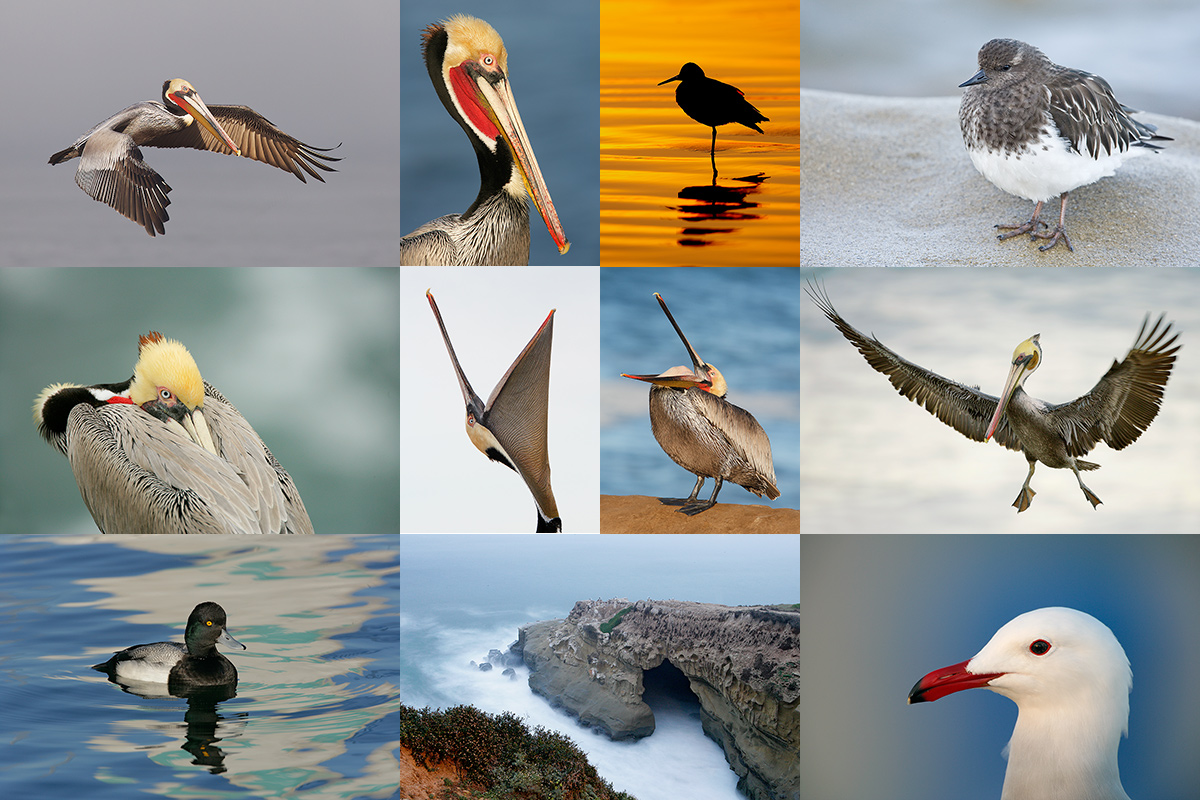
|
|
Variety is surely the spice of life in San Diego. Click on the composite to enjoy a larger version.
|
Getting Up Early and Staying Out Late
On all BIRDS AS ART IPTs, including and especially the San Diego IPT, we get into the field early to take advantage of unique and often spectacular lighting conditions and we stay out late to maximize the chances of killer light and glorious sunset silhouette situations. We often arrive at the cliffs a full hour before anyone else shows up to check out the landscape and seascape opportunities.
Typos
With all blog posts, feel free to e-mail or to leave a comment regarding any typos or error
|
|

